Latest news from the Labs
Rock West Composites offers a variety of telescoping tubing systems. Consequently, we get a lot of calls from customers asking for advice on how to design their custom system and what to order. While we are always happy to assist, this can be a difficult task for our staff if you don’t know the basics of your specifications.
Here are the basics that every customer should know before trying to place an order for telescoping tubing.
1. What is the required length when fully extended?
Every telescoping application will have a maximum reach that the user is trying to access. In general a longer reach requires more segments and/or longer individual segments.
2. Is there a required length when fully collapsed?
It’s good to know if you have specific storage requirements for when your tubing is collapsed. If you have a set collapsed length and a set extended length, then you can calculate the minimum number of segments. Alternatively, if you know the extended length and the number of segments you can calculate the collapsed length.
3. Does the length need to be adjustable for your application?
This will impact the clamping method selected. Button clips work well if you only have a few segments and only need the tubes to be fully collapsed or fully extended. Twist-lock or flip-lever clamps work well if you will require a range of lengths.
4. Do you know the weight of any attached tool/devices on your tubes?
If you are supporting a heavy load on the end, then you’ll likely need larger diameter tubing. You might also need to use intermediate or high modulus tubing if you’re trying to limit the deflection at the end.
5. Do your tubes need to interface with other items?
Sizing your tubes to fit between connectors can eliminate the work of designing adapters. For example, our INFINItubeV series tubes have diameters that increase in 1/8” increments to fit a variety existing parts. INFINItubeV series tubes are also designed to interface with our CARBONNect system for a highly modular assembly.
This basic information will enable you to take the next step in your design. Rock West Composites also offers design and assembly services for customers who prefer to a composites expert help them complete their structures. Learn more about our telescoping tubing selection!
We want our team to start the new year refreshed and ready to tackle the challenges ahead! So we be closed during the holidays for a two week break. From December 19, 2025 to January 5, 2026, our team will be out of the office. Shipping will resume January 6.
While we will do our best to ship in a timely manner, items ordered may not be delivered before the end of the year. If you have items under manufacture, please be aware that the holiday break will add two weeks to the production schedule.
May you have a restful and peaceful holiday season. We look forward to doing business with you in 2026 and beyond!
FOR IMMEDIATE RELEASE
Rock West Composites® Delivers 9 Ka-band and KaKu-band Radomes, Completing Contract with R4 Integration, Inc.
This month Rock West Composites completed the delivery of nine (9) Ka-band and KaKu-band radomes, which will be used in military search and rescue operations on C130’s and similar platforms. The contract with R4 Integration, Inc. was an extension of a previous program for a single proof-of-concept radome for this aerospace application.
San Diego, CA (PRWEB) October 3, 2025 – Rock West Composites (RWC) announces the delivery of nine Ka-band and KaKu-band radomes to R4 Integration, Inc. The final delivery this month completes the contract that continues work on a previous aerospace program facilitating military search and rescue operations. The sandwich panel radomes meet multiple demanding requirements including very low view angles, a large band of frequencies, truncated schedule, and no tooling. The program is anticipated to have follow-on adjacent panel designs in 2026.
The contract called for radomes made of a fiberglass and foam core sandwich configuration, following the design of the original proof-of-concept. The Ka-band radomes are made of Quartz Btcy1-A/4581 and Diab foam. The KaKu-band radomes are made of Toray 2510 and Diab Foam with a foam tuning layer. The exterior shapes are the same and require very low view angles of 20° relative to the horizon within several frequency ranges: 10.7-14.5 GHz, 17.7-21.2 GHz, and 27.5-31 GHz. RWC met an abbreviated schedule and used no tooling by creating a highly optimized flat panel design. The company performed in-house RF testing to verify performance to requirements.

Adam Saunders, Program Manager, said, “We are proud to support this critical program for our military and R4. This opportunity has enabled Rock West to demonstrate a key capability, successfully producing radomes for aerospace applications without the need for tooling, bringing better value and improved schedules to our customers and end users.”
About Rock West Composites
Rock West Composites, Inc. is an employee-owned, advanced composites company. RWC develops, engineers, manufactures, and tests composite products for multiple industries including Aerospace & Defense (radomes, munitions, unmanned systems, reflectors), Space (bus structures; solar array panels and wings; launch vehicle structures; optical, payload and deployable structures), Aircraft (new and replacement parts) and Commercial Equipment (automation, medical, energy, and sporting). The company is also one of the largest ecommerce suppliers of off-the-shelf carbon fiber tubes, plates, materials, and accessories.
The company’s mission is to make customers more competitive with the magic of advanced composites by delivering highly differentiated products on time and on budget, all while making the buying process easy. Rock West Composites has locations in San Diego, California; Salt Lake City, Utah; and Baja California, Mexico. www.rockwestcomposites.com
#######
For more information:
Julia Willis, Director of Marketing Communications
Phone: 858-537-6260
Email: marketing@1rockwest.com
Website: www.rockwestcomposites.com
We are exhibiting at CAMX – the Composites and Advanced Materials Expo – the largest, most comprehensive composites and advanced materials event in North America. The conference is at the Orange County Convention Center in Orlando Florida on Sept 8 - 11, 2025. The Exhibition Hall is open Sept 9 - 11.
If you are attending, please come see us in Booth #E45!
We are proud to be a Contributing Sponsor. Be sure to catch presentations from our team who will be speaking the CAMX Theater Tuesday afternoon, September 9.
3:00PM – Space Grade Stock Materials - Rock West’s STRATO™ Products
Speaker: Jeremy Senne, Director – Space Structures Business
Jeremy will share an overview of how we’ve developed our flight-ready STRATO product line to service the need for extreme agility with the design, fabrication, and testing of high performance composite structures for the space arena. The product line provides for all the critical building blocks for satellite BUS structures, solar array panels, and telescope structures.
3:30PM – High-Performance, Low-Cost Composite SAS and BUS Panel Property Characterization
Speaker: Mason Souther, Lead Test Engineer
Mason will share details on composite material characterization of our STRATO line of sandwich panels and plates, and how manufacturing processes impact their performance. By leveraging material commonality across their stocked material systems and internal testing capability, Rock West Composites can offer customers improved certainty during the design and manufacturing process.
We look forward to seeing you there!
FOR IMMEDIATE RELEASE
Rock West Composites Completes Prototype Radome Using Innovative, Cost-Competitive, Low-dielectric Epoxy Quartz Materials
This month Rock West Composites completed a radome prototype for Georgian Aerospace, LLC using an NCAMP-certified low-dielectric epoxy prepreg on quartz fabric produced by Renegade Materials. The prototype, targeted for use in an aerospace application, has passed RF testing with results equivalent to higher cost, traditional low-dielectric resin matrix on quartz materials.
San Diego, CA (PRWEB) August 11, 2025 – Rock West Composites (RWC) announces that this month it successfully completed a prototype radome for Georgian Aerospace, LLC using an innovative low-dielectric epoxy prepreg on quartz fabric that offers reduced cost compared to traditional low-dielectric materials. The prototype passed RF testing to expected values in ranges competitive to more expensive materials. While testing the viability of the new material for high-performance radomes, the program was also testing if the core material will be dielectrically compatible with this new quartz surface.
This prototype is RWC’s first use of this recently NCAMP-certified material developed by Renegade Materials (Miamisburg, OH). Renegade’s RM-2014-LDk-Tk 4581 8HS Quartz and Rohacell foam core are used in a sandwich configuration. This material offers a lower cost alternative to RWC’s current preferred material with very close dielectric compatibility. The prototype supports view angles as low as 25°and performs over 17.7-21.2 and 27.5-31gHz. This radome panel was produced without tooling on a very compressed schedule. Without the added time and cost of tooling, systems-level RF testing was still possible while meeting delivery targets.

Adam Saunders, Program Manager, said, “Usage of this material is exciting as it further enhances RWCs capability to quickly manufacture highly-optimized radome panels at the best value proposition for our customers. The cost efficiency also expands the accessibility of an optimized radome to adjacent markets.”
About Rock West Composites
Rock West Composites is an employee-owned, advanced composites company. RWC develops, engineers, manufactures, and tests composite products for multiple industries including Aerospace & Defense (radomes, munitions, unmanned systems, reflectors), Space (bus structures; solar array panels and wings; launch vehicle structures; optical, payload and deployable structures), Aircraft (new and replacement parts) and Commercial Equipment (automation, medical, energy, and sporting). The company is also one of the largest ecommerce suppliers of off-the-shelf carbon fiber tubes, plates, materials, and accessories.
The company’s mission is to make customers more competitive with the magic of advanced composites by delivering highly differentiated products on time and on budget, all while making the buying process easy. Rock West Composites has locations in San Diego, California; Salt Lake City, Utah; and Baja California, Mexico. www.rockwestcomposites.com
#######
For more information:
Julia Willis, Marketing Director
Phone: 858-537-6260
Email: marketing@1rockwest.com
Website: www.rockwestcomposites.com
FOR IMMEDIATE RELEASE
Rock West Composites’ Website Offers New Material Property Data and Calculators for Many of Its Ecommerce Products
This month Rock West Composites published theoretical material properties and launched several calculators for estimating the performance of rods and tubes offered on its website. Fulfilling a common need for engineers shopping for composite products, these reference calculators can help estimate deflection, failure mode, and failure loads in a variety of common load cases.
San Diego, CA (PRWEB) May 22, 2025 – Rock West Composites (RWC) announces the publishing of engineering properties for most products and the launch of several calculators on its website for tubes and rods. This information will help engineers estimate deflection, failure mode, and failure loads in a variety of common load cases for several product types offered. By publishing theoretical properties alongside a tool that can give a sense of behavior in a variety of load cases, RWC will enable the customer to find the best off-the-shelf solution for their needs.
On individual product pages, customers will find a section called “Engineering Properties” that will include Young’s Modulus, Shear Modulus, Tensile Strength, Compressive Strength, Shear Strength, Coefficients of Thermal Expansion, Poisson’s Ratios, fiber layup, fiber type, resin type, and more. Laminate properties and mechanical calculations are based on Classical Lamination Theory and are provided for reference only.

The calculators on pages for most tubes and rods will enable calculations for the estimated performance of cantilevers, beams, axial loads, and critical speed and torque. These tools allow for several fields of input and return theoretical results for properties such as maximum shear stress and bending stress, deflection at load point, maximum deflection and location, change in length, twist angle, and maximum allowable torque.
The properties and calculators will give engineers everything that they need to design with RWC’s off-the-shelf products. While the information provided is only theoretical, RWC does offer formal testing services if customers elect to advance to that level of support. Eventually, RWC plans to expand its calculators to plates, panels, shaped tubes, and other products.

“Customer often reach out to find out how much weight a tube can hold, what amount of deflection they can expect, or to find out what the material properties are for a specific part so that they can run their own simulations. We are excited to provide this information online on the product pages themselves, alongside tools that allow them to quickly run calculations for common use cases,” said Josh Lyon, eCommerce Product Technical Lead.
About Rock West Composites
Rock West Composites is an employee-owned, advanced composites company. RWC develops, engineers, manufactures, and tests composite products for multiple industries including Space (bus structures; solar array panels and wings; launch vehicle structures; optical, payload and deployable structures), Aerospace & Defense (radomes, munitions, unmanned systems, reflectors), Aircraft (new and replacement parts) and Commercial Equipment (automation, medical, energy, and sporting). The company is also one of the largest ecommerce suppliers of off-the-shelf carbon fiber tubes, plates, materials, and accessories.
The company’s mission is to make customers more competitive with the magic of advanced composites by delivering highly differentiated products on time and on budget, all while making the buying process easy. Rock West Composites has locations in San Diego, California; Salt Lake City, Utah; and Baja California, Mexico. www.rockwestcomposites.com
#######
For more information:
Julia Willis, Director of Marketing Communications
Phone: 858-537-6260
Email: marketing@1rockwest.com
Website: www.rockwestcomposites.com
FOR IMMEDIATE RELEASE
Rock West Composites Delivers First Ultra-High-Performance Frac Plugs for New Contract
This month Rock West Composites begins the delivery of newly developed ultra-high-performance frac plug billets to an oilfield service company as part of a new contract. This product, developed and tested over the past year, can withstand cyclical testing at 12,000 psi and 250°F without failure.
San Diego, CA (PRWEB) April 28, 2025 – Rock West Composites (RWC) begins delivery this month of new ultra-high-performance frac plug billets to an oilfield service company that is a major supplier to the hydraulic fracturing market. RWC has developed a composite material for frac plugs that can withstand cyclical testing at 12,000 psi and 250°F without failure.
This new ultra-high-performance frac plug material has been in development for over a year. It is made of filament wound fiberglass composite with a custom epoxy resin. The plugs have passed rigorous testing in RWC’s laboratory and the customer’s in-situ downhole environments. Each lot is proof tested to guarantee performance for these extreme applications.
RWC manufactures and tests the plug billets at its facility in West Jordan, Utah, the location of its filament winding center of excellence. This facility has 27 spindles across multiple winders and the capacity to manufacture up to 6,000 billet tubes per month. RWC anticipates significant market demand for this product due to the increasing challenges oilfield service companies face with downhole operations.

“We brought our filament winding expertise to the table. Our engineering team works on highly demanding applications, including space and aerospace, so we took that knowledge of material performance downhole,” said Adam Creer, Commercial Segment Director. “We are glad to have partnered with our customer to meet their very demanding requirements and develop our own technology that solves an industry-wide challenge.”
About Rock West Composites
Rock West Composites is an employee-owned, advanced composites company. RWC develops, engineers, manufactures, and tests composite products for multiple industries including Commercial Equipment (industrial, medical, energy, and sporting), Space (bus structures; solar array panels and wings; launch vehicle structures; optical, payload and deployable structures), Aerospace & Defense (radomes, munitions, unmanned systems, reflectors), and Aircraft (new and replacement parts). The company is also one of the largest ecommerce suppliers of off-the-shelf carbon fiber tubes, plates, materials, and accessories.
The company’s mission is to make customers more competitive with the magic of advanced composites by delivering highly differentiated products on time and on budget, all while making the buying process easy. Rock West Composites has locations in San Diego, California; Salt Lake City, Utah; and Baja California, Mexico.
www.rockwestcomposites.com
#######
For more information:
Julia Willis, Director of Marketing Communications
Phone: 858-537-6260
Email: marketing@1rockwest.com
Website: www.rockwestcomposites.com
FOR IMMEDIATE RELEASE
Rock West Composites Delivers Panels for 500-Watt Arrays to Astro Digital for their Higher-Power Buses This month Rock West Composites delivered panels for Astro Digital’s new 500-Watt arrays to support higher power versions of Astro Digital’s Corvus buses. RWC built the sandwich panels from trace/lead integrated skins that allowed for direct integration with solar cells, saving weight and integration time for the customer.
San Diego, CA (PRWEB) June 27, 2024 – Rock West Composites (RWC) announces the delivery this month of panels for Astro Digital’s new 500-Watt arrays to support higher power versions of their Corvus buses. RWC teamed with Astro Digital to fabricate solar array substrate (SAS) panels with a unique integrated design to save volume and weight. These panels are being integrated into space vehicles, the first of which is scheduled to launch in October.

These SAS panels are unique in that RWC built the sandwich panels from trace/lead integrated skins that allowed for direct integration with solar cells. This reduced total weight and shortened the integration time. The customer furnished the G10 (fiberglass) skins that already had the integrated copper traces. RWC used specialized tooling to align the face skins on the aluminum honeycomb core to keep the traces in the right location during fabrication of the approximately 2’ x 2’ structures.

Jeremy Senne, Space Segment Director, said, “This is a great example of how we can help our customers solve their problems in innovative ways. It was a tooling and machining challenge to work with their pre-integrated skins, but our experience on other precision programs enabled successful fabrication.”

About Rock West Composites
Rock West Composites is an employee-owned, advanced composites company. RWC develops, engineers, manufactures, and tests composite products for multiple industries including Space (bus structures; solar array panels and wings; launch vehicle structures; optical, payload and deployable structures), Aerospace & Defense (radomes, munitions, unmanned systems, reflectors), Aircraft (new and replacement parts) and Commercial Equipment (automation, medical, energy, and sporting). The company is also one of the largest ecommerce suppliers of off-the-shelf carbon fiber tubes, plates, materials, and accessories.
The company’s mission is to make customers more competitive with the magic of advanced composites by delivering highly differentiated products on time and on budget, all while making the buying process easy. Rock West Composites has locations in San Diego, California; Salt Lake City, Utah; and Baja California, Mexico. www.rockwestcomposites.com
#######
For more information:
Julia Willis, Marketing Director
Phone: 858-537-6260
Email: marketing@1rockwest.com
Website: www.rockwestcomposites.com
Our Ecommerce Origins Story
In 2009, rockwestcomposites.com became one of the first online merchants for carbon fiber tubes, plates, panels, connectors, and materials. Over the past 15 years, our value proposition has always been that more than 94% of the items we stock ship within 24 hours. While this quick ship promise is great for last-minute needs, the fluctuation of demand forced us to continually scale back the number of items we listed for sale. While Rock West Composites owns over 3,000 mandrels, we were listing under 1,600 tubes for sale.
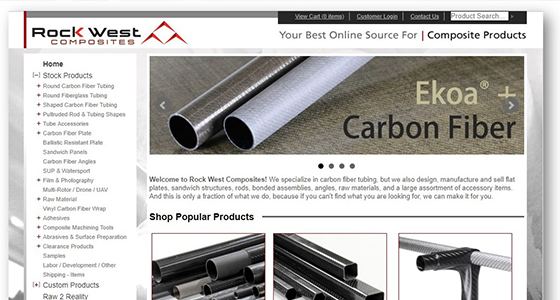
New Product Success
In 2023, we tried something different. We the first-of-offered-its-kind selection of off-the-shelf, space-ready items called STRATO™. Our value proposition was no longer centered around 24-hour shipment. It stated that we had the materials, tools, certifications, and people power to produce these standard items in 4-6 weeks, far faster than a custom solution. This approach allowed us to offer a far larger selection of tubes, plates, panels, and materials to our customers than if we tried to make them and keep them in stock. The product has been very successful. We've helped numerous customers shave weeks off their schedules while enjoying the cost benefits of using a stock item versus a custom solution.

Sitewide Product Expansion with Rapid Production
Building upon the success of the STRATO™ program, we are expanding this concept into everything we do. While we will continue to stock fast moving items, we will also list many items that we have the materials, tools, and peoplepower to produce quickly upon your order. Almost all items will be available within 4 weeks of order placement. We are also expanding the number of raw components we sell and are actively engaging with other manufacturers to sell their products on our site. We want rockwestcomposites.com to be your one-stop for everything you need to complete your advanced composites project.

Plan on Success!
We are excited about these changes as we believe they will provide you, our customers, access to significantly more off-the-shelf solutions for your projects. And while you will have to plan and order a little further in advance, you will have many more items to choose from. As always, if you do run into a time crunch, let us know. We may have alternative solutions or expedited services that can meet your deadline.
New Website in May
We are targeting May for our website launch. Please check out the new site, and if you don't see a product that you think we should be carrying, drop us an email at marketing@rockwestcomposites.com, and we'll do everything we can to add it.

FOR IMMEDIATE RELEASE
Rock West Composites Delivers to Purdue University
the Barrel Timing Layer Tracker Support Tube for CERN’s Large Hadron Collider
This month Rock West Composites delivered a large, high-precision, carbon fiber and honeycomb core tube to Purdue University. The structure is the Barrel Timing Layer Tracker Support Tube that is part of an upgrade to CERN’s Compact Muon Solenoid (CMS), which is a general-purpose detector at the Large Hadron Collider.
San Diego, CA (PRWEB) March 9, 2024 – Rock West Composites (RWC) announces the delivery of the Barrel Timing Layer (BTL) Tracker Support Tube to Purdue University this month. This large carbon fiber sandwich structure destined for CERN was designed by a joint team from Purdue University, led by Dr. Andy Jung and Dr. Ben Denos, and RWC, led by John Marks. The collaborative effort met key performance parameters using the most cost-effective design. The hardware RWC delivered will be integrated with instrumentation from Purdue prior to delivery to CERN.
CERN is the world’s leading laboratory for particle physics located near Geneva, Switzerland. The carbon fiber tube supports the heart of the upgraded CMS detector, a “camera” with more than a billion pixels to record proton-proton collisions at the highest ever-made energies and unprecedented resolution. In a few years, once fully commissioned, the upgraded CMS detector is expected to collect 10 times the data recorded so far in the hunt for new particles and aims to understand the origins of the Universe.

Tube under manufacture and inspection
The BTL Tracker Support Tube had to be manufactured from materials with extremely low radiation resistance, have a precise circular cylinder structure, be very strong and stiff, and meet an accelerated delivery schedule. Because the final tube had such challenging requirements, traditional tooling or manufacturing approaches would have been unaffordable. Innovative techniques were used, starting with the manufacture of curved, solid laminate arc segments rather than a full cylinder. Precision machined arc segment stiffeners help hold the arcs to strict dimensions once assembled. Low coefficients of thermal expansion are maintained in all 3 directions: radially, circumferentially, and along the length of the tube.
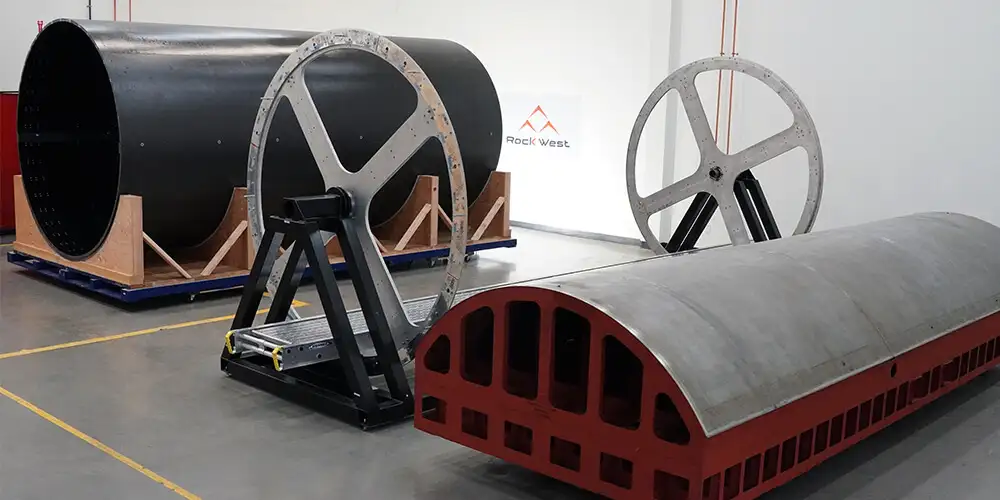
Completed hardware with the tooling used for manufacture
Prior to making the full-scale tube, RWC built a full diameter but much shorter version of the part as a technology demonstrator. RWC was presented with an Industry Gold Award from CERN in 2022 for this effort, and ultimately won the program from Purdue for the full-size hardware due to the success of the demonstration model and its affordability.
The delivered hardware is 5.3-meters long by 2.4-meters in diameter. It is constructed of ultra-high-modulus prepreg and Nomex honeycomb core made with PMT-F6 cyanate ester resin. There are 1680 metallic inserts made of solid carbon epoxy, titanium and stainless steel; and it includes two 110 MSI carbon fiber (K13916/ F6) rails to support scientific instruments. Surface accuracy requirements were tested to 2.4mm cylindricity inhouse before shipment.

Images show details of the interior of the tube with hundreds of inserts and railing system
John Marks, VP of Product Development, said, “We were excited to take on this challenging program and to know that we will be contributing to the advancement of humanity’s understanding the fundamental construct of matter. Our work on the demonstration model and final hardware pushed our team’s technical skills to the limit, and we couldn’t be prouder of their performance on this program.”

The Rock West team posing in front of the completed hardware the day before it was shipped
About Rock West Composites
Rock West Composites is an employee-owned, advanced composites company. RWC develops, engineers, manufactures, and tests composite products for multiple industries including Aerospace & Defense (radomes, aircraft, and weapon components), Space (bus structures, solar array panels and wings, strut assemblies, launch vehicle structures), and Commercial Equipment (industrial, medical, energy, and sporting). The company is also one of the largest ecommerce suppliers of off-the-shelf carbon fiber tubes, plates, materials, and accessories.
The company’s vision is to “make the magic of composite technologies accessible to the world” by executing flawlessly and providing customers a competitive advantage, all while making it easy to buy. Rock West Composites has locations in San Diego, California; Salt Lake City, Utah; and Baja California, Mexico.
www.rockwestcomposites.com
#######
For more information:
Julia Willis, Marketing Director
Phone: 858-537-6260
Email: marketing@1rockwest.com
Website: www.rockwestcomposites.com
FOR IMMEDIATE RELEASE
Rock West Composites’ Components Are on Intuitive Machines’ IM-1 Mission to the Moon
Supporting the commercial space race to the Moon, Rock West Composites is proud to have provided multiple configurations of struts to Intuitive Machines for incorporation into its Nova-C lunar lander named Odysseus, which launched last week. The struts met challenging surface profile and straightness requirements for both interior and exterior dimensions, were integrated with bonded fittings, and were pull-tested in-house before delivery.
San Diego, CA (PRWEB) February 21, 2023 – Rock West Composites (RWC) provided hardware to Intuitive Machines for incorporation into its recently launched Nova-C lunar lander, Odysseus. Intuitive Machines’ IM-1 Mission is sending its lander to the Moon as part of NASA’s Commercial Lunar Payload Services (CLPS) initiative and Artemis campaign. RWC delivered multiple configurations of machined and tested struts with bonded fittings. The struts included both circular cross-section tubes with and without bonded titanium fittings, and rectangular tubes with a tooled surface on both the inside and outside face.
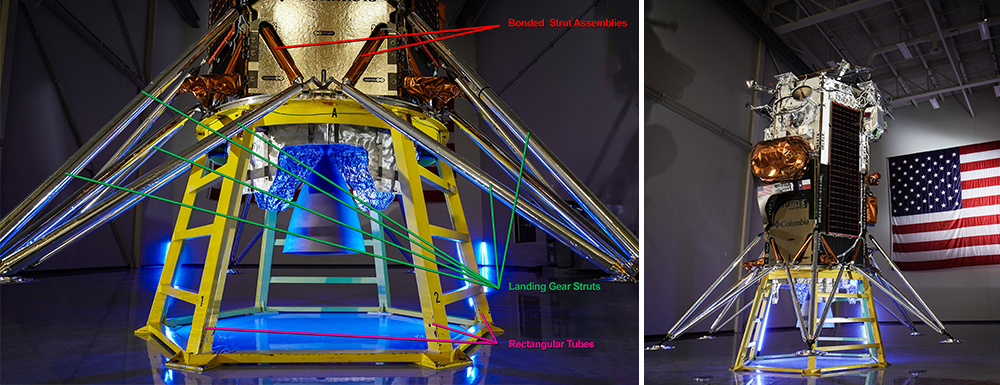
IM-1 Lunar Lander Odysseus with RWC Struts and Assemblies (Odysseus images courtesy Intuitive Machines – Nick Rios)
The RWC-provided struts were primarily constructed of HM63/PMT-F6 unidirectional prepreg with 0.010” and tighter surface profile and straightness requirements. The rectangular tubes were especially challenging due to the tooled surface requirement on both the interior and exterior with a tight surface profile requirement on both sides to allow for next-level assembly tolerances. The hardware was build-to-print, but RWC provided input on the final design for manufacturability and requirements compliance. The struts with bonded fittings were pull-tested in-house at RWC prior to final integration at Intuitive Machines.

RWC Strut Assemblies
“We are honored to support our commercial customers in this race to the Moon and ultimately a sustained human presence there,” said Jeremy Senne, RWC’s Space Segment Director. “Our precision composite components can give our customers the performance they need to succeed in this high-risk and clearly challenging business.”
For more information on this mission: https://www.intuitivemachines.com/im-1
About Rock West Composites
Rock West Composites is an employee-owned, advanced composites company. RWC develops, engineers, manufactures, and tests composite products for multiple industries including Space (bus structures, solar array panels and wings, strut assemblies, launch vehicle structures), Aerospace & Defense (radomes, aircraft, and weapon components) and Commercial Equipment (industrial, medical, energy, and sporting). The company is also one of the largest ecommerce suppliers of off-the-shelf carbon fiber tubes, plates, materials, and accessories.
The company’s vision is to “make the magic of composite technologies accessible to the world” by executing flawlessly and providing customers a competitive advantage, all while making it easy to buy. Rock West Composites has locations in San Diego, California; Salt Lake City, Utah; and Baja California, Mexico.
www.rockwestcomposites.com
About Intuitive Machines
Intuitive Machines is a diversified space company focused on space exploration. Intuitive Machines supplies space products and services to support sustained robotic and human exploration to the Moon, Mars, and beyond. Intuitive Machines’ products and services are offered through its four business units: Lunar Access Services, Orbital Services, Lunar Data Services, and Space Products and Infrastructure. For more information, please visit intuitivemachines.com.
For more information:
Julia Willis, Director of Marketing Communications
Phone: 858-537-6260
Email: marketing@1rockwest.com
Website: www.rockwestcomposites.com
FOR IMMEDIATE RELEASE
Rock West Composites Ships First Set of
Solar Array Substrate/Back-Up Structure Assemblies for the DiskSat Program
Rock West Composites announces that this month it shipped the first four solar array substrate/back-up structure assemblies to The Aerospace Corporation in support of the DiskSat Program. The company, whose engineering team consulted on the substrate and assembly design, used their space-grade, off-the-shelf STRATO™ panels to reduce cost and lead times, plus met positional tolerances of 0.010”-0.020” without costly assembly fixtures.
San Diego, CA (PRWEB) January 31, 2023 – Rock West Composites (RWC) delivered four combination solar array substrate/back-up structure assemblies to The Aerospace Corporation in support of the DiskSat Program this month. DiskSat is a NASA-funded technology demonstration program that seeks to verify the performance and deployment method of this new small-spacecraft platform. The disk-shaped satellite design has the potential to revolutionize smaller space missions through its high power, large aperture form factor that fits in the circular cross-section of a rocket fairing. By using its own off-the-shelf, space-grade STRATO products, RWC was able to significantly reduce lead time and cost, while helping define structural properties to support the mission’s innovations. If successful, follow-on missions are possible, and other prime contractors may look to use a similar form factor for volumetric and weight efficiencies.
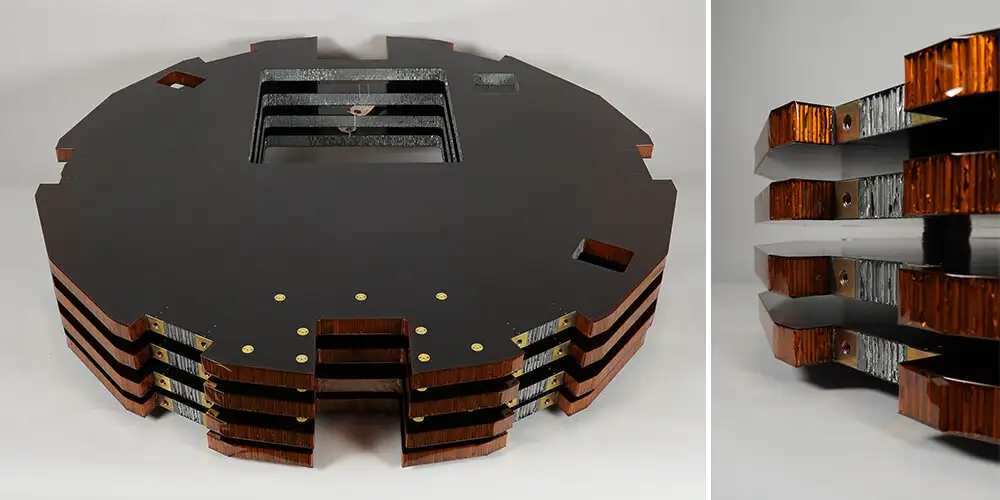
Set of four DiskSat Assemblies
Providing additional services for this build-to-print program, the RWC engineering team consulted on the design including layup, material selection, insert design, bonding methods, and manufacturing strategy. RWC used its own product, the STRATOSubstrate™ LEO class, to ensure a cost-effective solar array substrate. The team used an insert design that allowed for self-fixturing to a tight tolerance, avoiding a costly assembly fixture. The tolerances on the in-plane and out-of-plane inserts match to a global datum scheme, and tolerances were on the order of 0.010-0.020” positional.
The use of STRATOSubstrate LEO panel blanks significantly reduced raw material and blank lead time. STRATOSubstrate LEO class panels use HR40/NB321 unidirectional prepreg, NB301 film adhesive, perforated aluminum honeycomb core, and 0.002” HN Kapton. The inserts for the deliverable were BR-127 primed aluminum bonded with EA9394. The final assembly measures approximately one meter in diameter and 25 centimeters in thickness.

Close-up of the DiskSat assemblies

Detail of DiskSat assemblies’ inserts
“Saving our customer cost and lead time for this innovative and game-changing program by using our STRATOSubstrate LEO class of panels is exactly why we developed the STRATO product line,” said Jeremy Senne, RWC’s Space Segment Director. “We are excited about the potential for this new form factor in the exploration of space.”
About Rock West Composites
Rock West Composites is an employee-owned, advanced composites company. RWC develops, engineers, manufactures, and tests composite products for multiple industries including Space (bus structures, solar array panels and wings, strut assemblies, launch vehicle structures), Aerospace & Defense (radomes, aircraft, and weapon components) and Commercial Equipment (industrial, medical, energy, and sporting). The company is also one of the largest ecommerce suppliers of off-the-shelf carbon fiber tubes, plates, materials, and accessories.
The company’s vision is to “make the magic of composite technologies accessible to the world” by executing flawlessly and providing customers a competitive advantage, all while making it easy to buy. Rock West Composites has locations in San Diego, California; Salt Lake City, Utah; and Baja California, Mexico.
www.rockwestcomposites.com
About The Aerospace Corporation
The Aerospace Corporation is a nonprofit corporation that operates a federally funded research and
development center, providing technical expertise and objective analysis for our nation’s space programs. aerospace.org
For more information:
Julia Willis, Director of Marketing Communications
Phone: 858-537-6260
Email: marketing@1rockwest.com
Website: www.rockwestcomposites.com
We often have customers who need a custom product fast, and at high volume. Here is one of those products. This week we delivered a series of about a 150 radome covers that were custom designed, manufactured, machined, painted and finished within a short turnaround window. While we can do large, complex structures with all the rigid requirements needed for space applications, we can also handle a fast turnaround, simple programs that can meet baseline technical requirements affordably.
Rock West worked in close collaboration with this customer, from the initial concept to full production run. We went through multiple design iterations to achieve RF performance and manufacturability. Several prototypes were created and performance tested before the design was finalized. Using in-house machining and painting capability helped to keep schedule short and low risk.
Radomes are an area of specialization for Rock West. You can read more on our Radomes page.
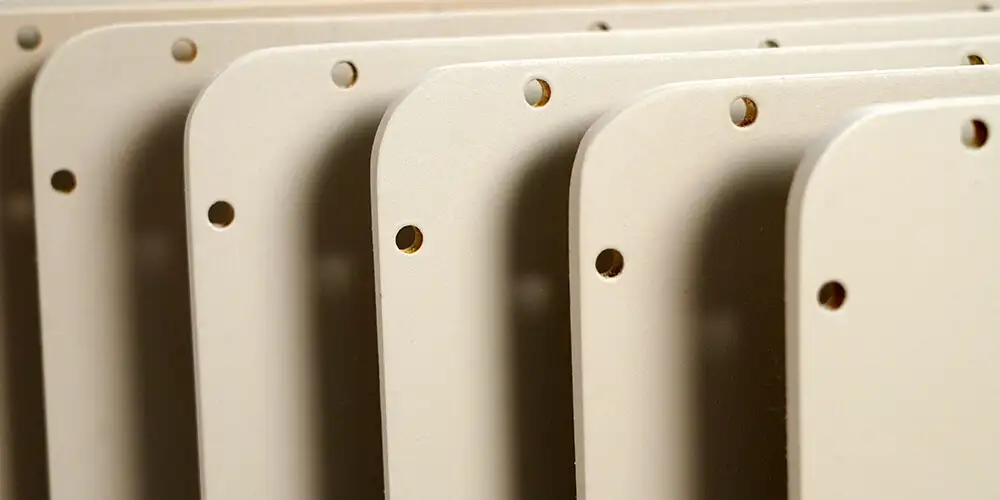
Radome covers, corner view
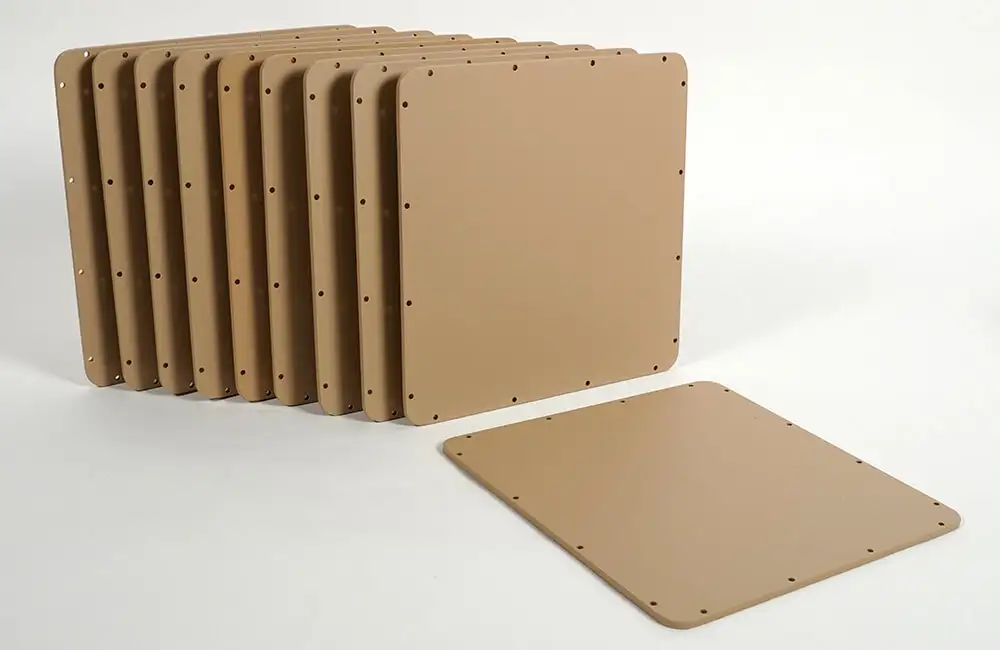
Subset of the radome covers delivered to our customer
Generally speaking we love the composites business, but we really get excited about programs that test the limits of carbon fiber technology and contribute to scientific discovery.
Last year we told you about this amazing prototype project we were working on with Purdue University for CERN. The prototype was designed and built for the CMS (Compact Muon Solenoid) detector. We are now hard a work on the final hardware and it’s looking great! Here are some in process pictures. We look forward to sharing more once it’s finished!

Layup of large, curved, carbon fiber panel with honeycomb core
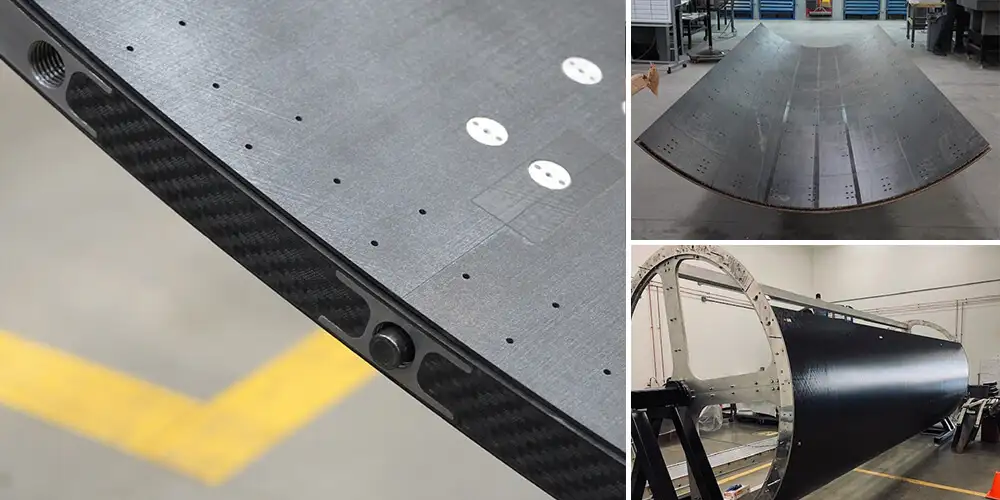
Large panel with inserts, large tool for assembly, and edge detail
Telescoping tubing has so many practical uses and can be used in everything from window washers to selfie sticks. But sometimes you can't find the right length you need for your purposes. While building your own set can get you exactly what you want (and we are happy to provide all the supplies you need to do it), the process can be time consuming to design and assemble the structure. We have a great solution for you! We now offer fully assembled telescoping tubing from two of our lines: INFINITubeV and INFINITubeUL .
Our INFINITubeV Telescoping Tubes provide the perfect balance of strength and lightweight design. This product utilizes our standard modulus tubes, with a classic carbon fiber twill weave strength and esthetic. Engineered for seamless extension and retraction, these tubes offer unmatched versatility for a range of applications, providing exceptional strength without the added weight of heaviest material. For this line, you can choose between our compression ring twist clamps or our new proprietary Flip and Twist locking clamps (more details below!).
Our Ultralight Telescoping Tubes utilize standard modulus unidirectional tubes and provide the strongest strength to weight ratio of our telescoping tube options. This set provides the same seamless extension and retraction, versatility and strength. This is just much lighter. This model utilizes compression ring twist clamps.
Both of these lines have medium, long, and extra-long options with 3, 4 or 5 segments respectively. The collapsed and extended length depends on the line since each line has different tube lengths. For details, review the specifications on the individual product pages.

Compression ring twist clamps (left) and our flip and twist locking clamps (right)
NEW Flip and Twist Locking Clamps
These flip and twist locking clamps are made specifically to work with our INFINITubeV Telescoping Tubes , and they are faster to lock and release than our compression ring twist clamps. They are manufactured with PA12GB 40% glass filled & blacked nylon, meaning it has high stiffness and temperature resistance. If you are building your own telescoping tube set, these clamps can be secured to the base (larger) tube in the assembly with a cyanoacrylate adhesive or the supplied screw (for dis-assembly). But why build your own when you can buy it assembled already ?
FOR IMMEDIATE RELEASE
Rock West Composites Delivers Completed Assembly Fixtures for the NASA PASS Program
Rock West Composites announces that this month it has delivered three 9 ft. by 9 ft. assembly fixtures that are part of the Precision Assembly Space Structure (PASS) program supporting NASA’s On-orbit Servicing Assembly and Manufacturing (OSAM). Designed with tight tolerances for thermal and moisture stability, the fixtures also required 0.002 in. flatness across 9 fittings and 0.002 in. positional tolerance across the holes and slots for those fittings encompassing the full 9 ft. by 9 ft. panel.
San Diego, CA (PRWEB) August 18, 2023 – This month Rock West Composites (RWC) delivered three assembly fixtures for NASA’s Precision Assembly Space Structure (PASS) program supporting the On-orbit Servicing Assembly and Manufacturing (OSAM) efforts. These fixtures are part of NASA’s push for next generation manufacturing technology that will enable in-orbit construction of high-precision hardware, such as reflectors and antennas, for programs such as Artemis.
 Left: CAD image of NASA PASS Reflector assembled (Credit: NASA Langley) Center: CAD image of segment of structural supports with assembly fixture (Credit: NASA Langley) Right: RWC Program Team with completed assembly fixtures
Left: CAD image of NASA PASS Reflector assembled (Credit: NASA Langley) Center: CAD image of segment of structural supports with assembly fixture (Credit: NASA Langley) Right: RWC Program Team with completed assembly fixtures
RWC helped define the requirements and designed the hardware to meet the challenging operational parameters for these fixtures. There are 9 holes and 9 slots on 9 fittings which required a positional tolerance of 0.002 in. The 9 fittings also required a flatness across the fixture of 0.002 in. The panel has to interface with a strut assembly and have very low coefficients of thermal and moisture expansion to ensure high precision and repeatability.

Laser tracker inspection results of panel tolerances
RWC used a spliced panel design to meet the 9 ft. by 9 ft. sizing. Innovative soft fixturing with fine tuning adjustment capability was used to meet tight tolerances in a cost-effective manner. A laser tracker was used to verify tolerances during manufacture.

Left: Panel in manufacturing on adjustable fixtures for precision tuning Right: Detail of single insert adjustable fixture
“We are proud to be part of this program supporting NASA’s mission infrastructure and pushing forward space technology,” said Jeremy Senne, the head of RWC’s Space market segment. “When we can find ways to innovate our manufacturing process that ultimately save our customer time and money, it’s a win-win. We hope to recycle this process for similar large and tight tolerance structures to continue to push the envelope of what’s possible.”
For more information on Rock West Composites’ capabilities, visit www.rockwestcomposites.com.
About Rock West Composites
Rock West Composites is an employee-owned enterprise that develops and manufactures composite products for multiple industries including aerospace, defense, space, radomes, commercial, industrial, medical, energy, and sporting goods. The company is also one of the largest Ecommerce suppliers off-the-shelf carbon fiber tubes, plates, materials, and accessories. Specializing in carbon fiber and RF-transparent composite materials, RWC offers custom products and off-the-shelf solutions that enable customer success by finding innovative solutions to complex problems across the product lifecycle, from concept to design, and prototype to final hardware production. Rock West Composites has facilities in San Diego, California; Salt Lake City, Utah; and Baja California, Mexico.
Originally developed in the 1980’s, the HANS device has been one of the most innovative components in racing safety, as it greatly limits the forward head and neck movement of the driver upon impact. HANS devices have been mandated in NASCAR’s top 3 series since 2001 and by Formula 1 since 2003. Many other major auto racing series followed suit and mandated the HANS device in their races after seeing the impressive life-saving results of this safety equipment.
For over 10 years, Rock West Composites has proudly manufactured carbon fiber HANS devices for Simpson Race Products. Rock West began manufacturing the HANS Pro Ultra device in our Salt Lake City facility. The product design required stringent specifications, including the ability to withstand 10G front impact without failure. The retail-quality gloss finish had to withstand a corrosive environment. As the demand for a lighter weight product materialized, we added the HANS Pro Ultra Lite to our manufacturing roster for Simpson. Rock West delivers lightweight yet strong products that continue to meet customer expectations.
In recent years, our customer needed to reduce production costs, as well as increase efficiency and throughput. We worked to adapt a solution specific to their needs with their input. Rock West relocated HANS production to our plant in Mexico, a facility focused on containing costs for production jobs with high touch labor. With an easy to access plant, Simpson was able to monitor the transition. Our team facilitated training and ensured all quality standards are being met. Our Mexico facility is AS9100D certified with a motivated and quality driven team.

HANS Work in Process
This new production modality has been in place for two years and been an ongoing success. With annual orders for over 1,000 units and with a recent order for more tooling expected to last 5+ years, RWC will continue to make these life saving devices for the foreseeable future.
Our Sporting division is executing development and production work for many customers and hope that we can bring our skills to your company to improve product quality and production efficiency. Contact us!
Sometimes it’s not just our customers who get creative with our products. Our team members like to get in on the action also.
One of our engineers, Brian, was spending hours weeding and picking his strawberry patch. As agricultural labor will tend to do, the gardening was hurting his back and knees. So he decided to make like Tom Cruise in Mission Impossible and dangle over the problematic berry patch!

The Problematic Strawberry Patch
Using a set of carbon fiber tubes and other hardware, he created a lightweight overhead gantry system to suspend himself over the patch. It worked! BUT it was still very painful in a different way and also very complicated. Brian is working on a solution that includes ergonomics in the equation. But in the mean time, take a look at this engineer overachieve at berry picking!
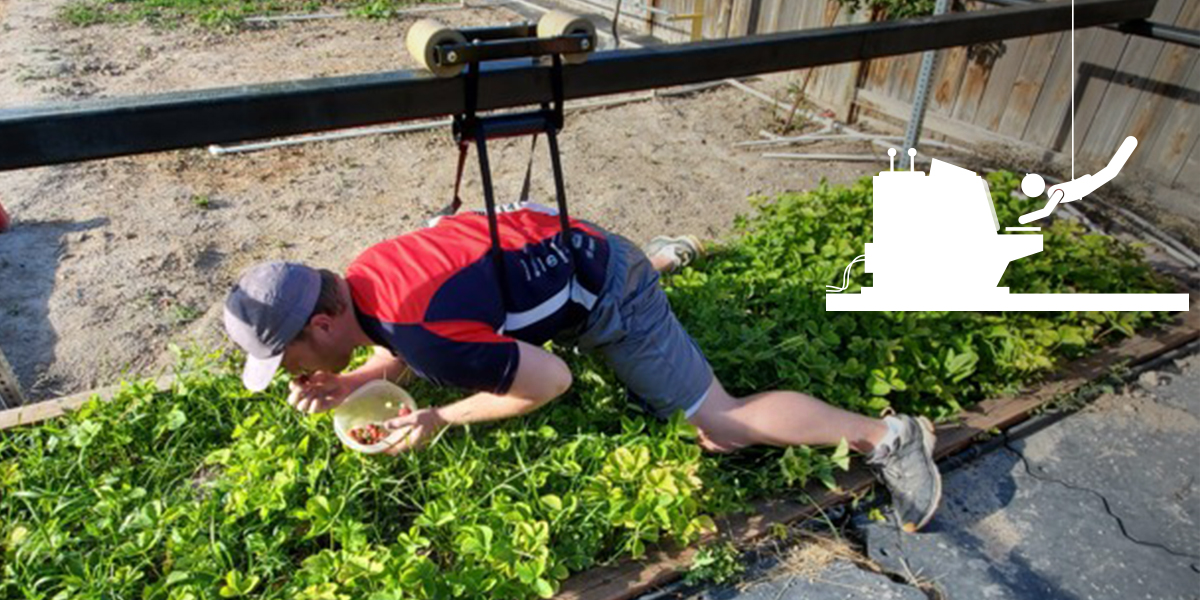
Brian Berry Picking, Mission Impossible Style
We are constantly thinking about the types of projects on which our customers might be working and also about what sort of products they might need to achieve their finished handiwork. So we have just added to our store two products you might find useful in your projects!
Forged Carbon Fiber Blocks
These forged blocks are made with very small chopped carbon fibers and resin and then put at immense pressure as the resin sets. The result is a very strong block of material with isotropic properties.
We offer a variety of thicknesses, and these blocks are fully machinable. They can also be hand shaped using abrasive Dremel tools and sandpaper. Rock West offers machining services for customers who need assistance.
Key Points:
- The blocks have isotropic strength
- They are fully machinable and can be shaped
- Thicknesses range from 0.05″ to 3″
Learn More About CF Blocks!
DIY Resin Infusion Kits
We have put together five different sized kits for infusing your own carbon fiber parts. All kits include tubing, COMPOFLEX flow media, vacuum bag material, sealant, and resin infusion hubs. Carbon fiber fabric comes with the three larger kits. Resin and hardener is included in the two largest kits.
These kits are great for the DIY enthusiast who is carbon fiber curious or a seasoned carbon fiber hobbyist who already has some necessary supplies on hand. This can also be a great buy for educational institutions.
Key Points:
- There are five levels of kits to fit your project needs
- You can save money with the kit, which is less than the price of buying all the individual components
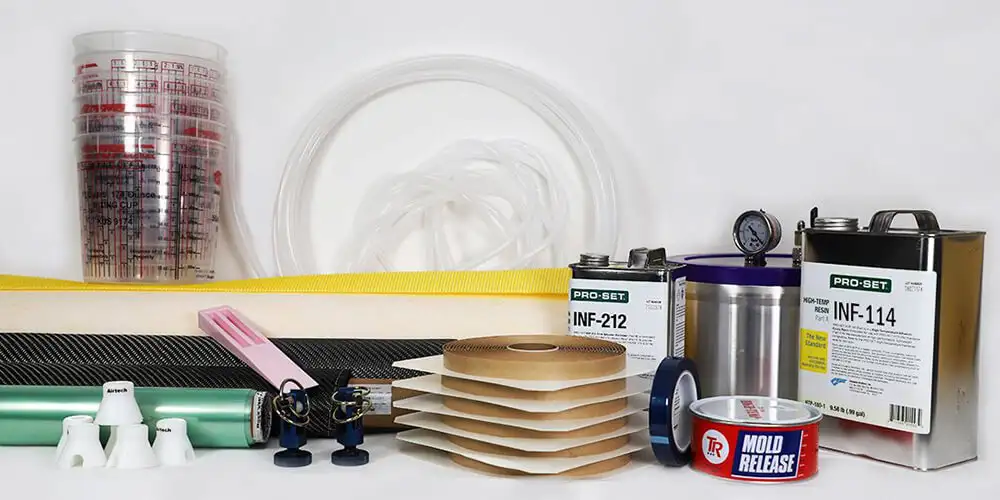

Learn More About Our Resin Infusion Kits!
Our forged carbon fiber blocks are currently in stock, and our resin infusion kits are put together when you order. Order today and dive into a new project this summer! We’d love to see what you create, so send our customer service team an email with a picture and description of your project at customer.service@rockwestcomposites.com. Have a great creative summer!
Our new Sporting Division is branching into new industries including innovative composite orthotic inserts used to improve walking biomechanics. Optimizing biomechanics to reduce pain during exercise and maximize sports performance is nothing new, but composites have become increasingly favored to facilitate these improvements.
SubioMed, Inc, a Minnesota medical device startup, has patented and designed various multilayer “suspension biomechanics” products to reduce pain, speed recovery and support health benefits through controlled motion and energy return. They chose composites to optimize flex characteristics, reduce weight, and enhance energy capture and return of their flagship product DSO (Dynamic Suspension Orthotics). Creating independent living hinges to move Ground Reaction Force through the hindfoot, midfoot and forefoot during the “three rockers” of gait was the focus of the design and construction.
RWC worked with SubioMed several years ago on some initial product development. SubioMed reengaged RWC to utilize our experience in design and manufacturing to further enhance their product design and capability. They wanted to reduce costs while increasing efficiency and volume throughput. Our ability to provide composite engineering assistance during multiple phases of manufacturing and competitive production rates with our Mexico facility were instrumental in gaining the production side of the contract.


Our development program was completed in January, and the production program has already initiated. We’ve had great collaboration on design, tooling and flow details between the customer and the RWC team. Brian Bowen SubioMed VP Marketing and Sales shared:
“The SubioMed team has been working on successfully integrating a dynamic suspension into footwear for the last few years. While the patents allow us to develop this revolutionary technology, solving the technical challenges to allow function and durability during millions of cycles of walking required composite expertise. Most recently, the diverse talents of Rock West’s responsive team delivered what we needed prior to execute our initial US launch. The results, data, and patient responses confirm we got it right.”
We are excited to join SubioMed in their mission to restore function and reduce pain to patients who need their technology!
We carry one of the widest selection of tubes available anywhere, with options of varying sizes, materials, properties, and shapes. Even with this incredible variety, we know our selection of off-the-shelf tubing is more limited for large diameter tubes. So we offer a service to cover this spectrum of products – you can Build Your Own Tube!
We have an online tube builder for larger diameter options. You may have seen this before on our website, but we have made some recent improvements. This calculator allows you to order filament wound tubes to your specifications for sizes ranging from 0.999” to 21.532” in diameter and up to 29 feet long. We have 42 mandrels to choose from and in the future, we may add more!
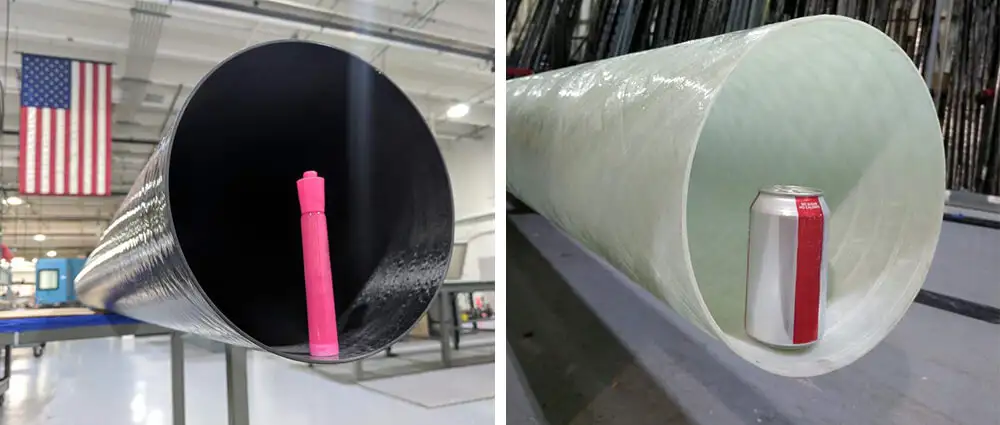
Large diameter custom composite tubes
Do you have specific structural requirements? You can choose a winding and lay up technique that optimizes your tube for lateral strength, torque, or internal pressure.
Do you have temperature-related operational needs? These tubes can be created for either standard temperature ranges (223°F max) or for high temperature resistance (up to 400°F).
What material will support your end-use application? Our tubes can be wound with fiberglass or intermediate carbon fiber; it’s your choice!
What’s new? Because the tubes are wound on a full mandrel and then cut to the length desired, we can maximize material efficiencies, creating cost savings that we pass on to you. Given a desired length, the tool will calculate the optimal number of tubes to create the best price per tube.
Even better, the finished parts take about 2 weeks to complete and ship. So if you want a larger tube and can’t find the specifications you want, build it!
If you are on the hunt for metals, you wouldn’t necessarily expect composites to play a role in the search. But that is precisely what is happening with a customer of ours.
Thousands of people around the word use metal detectors for gold prospecting (or other metals) as their primary occupation. When a metal detector is the tool one uses to provide for their family, a high quality tool can be worth its weight in gold. And when that tool is something you carry all day, a lighter tool is essential. This is where we come in.
Our customer makes metal detectors and needs custom, collapsible, telescoping tubes to comprise the central shaft of the detector. The industry standard material for these shafts is aluminum. The customers wanted a unique product that was more ergonomic. Carbon fiber lightened the load and allowed for organic curves. The tubes are a custom shape that provide smooth nesting for its collapsed state, tight clocking for stability when at full extension, exceptional performance for extreme field conditions, and a lighter swing weight.
These parts also need to have a beautiful finish since they are used for a premium quality product line with a high price point. Using modified closed mold techniques, we are able to provide high gloss surfaces that highlight the beautify of the carbon fiber material. In order to maintain the surface quality, a wipe-on ceramic coating is used to protect the finish.
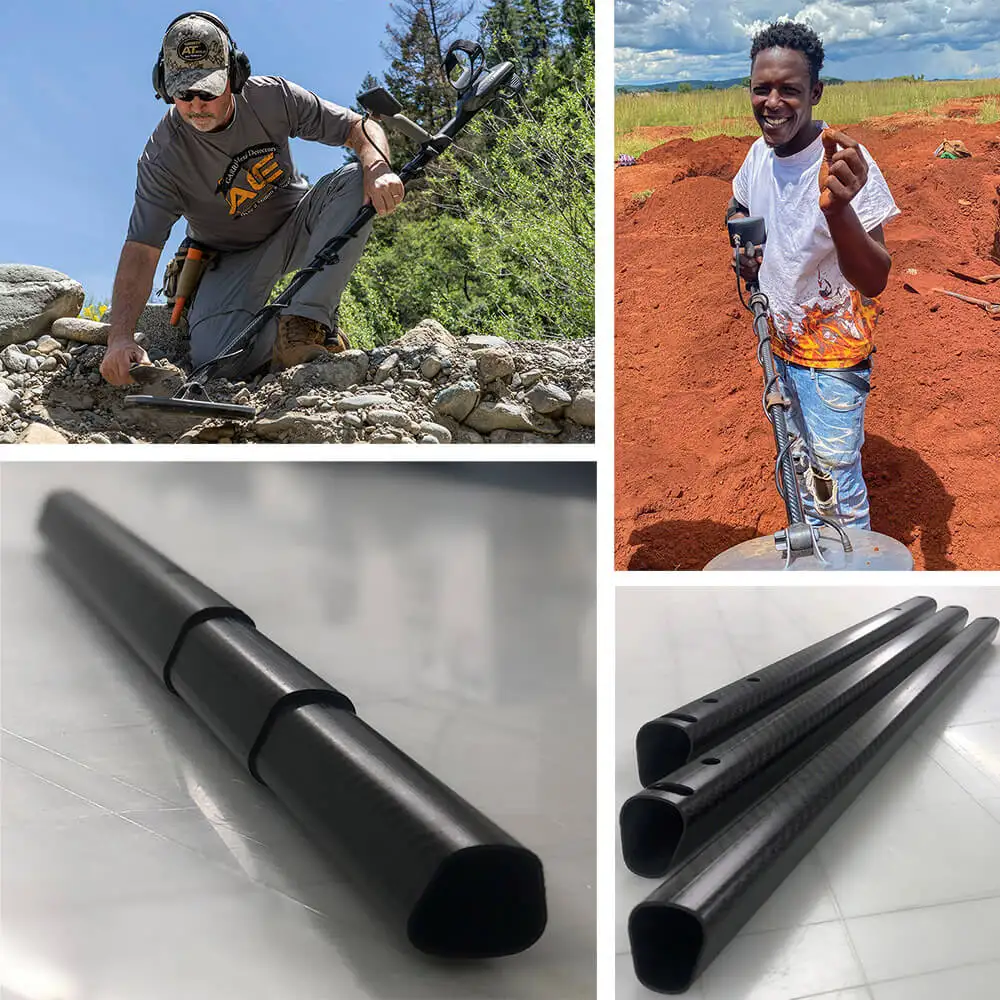
Carbon fiber in the shop and in the field
Our customer chose us because of our developmental approach to the work and our ability to handle the type of production required for this kind of finished piece. High-speed production lines cannot match the level of surface quality the customer needs. With greater than 250 sets per month and over 3000 units per year, this type of production job is in our sweet spot for exceptional quality and reliable delivery.
We are always excited to tackle a new challenge but it’s even more gratifying when you know you are helping individual people around the world put food on the table.
FOR IMMEDIATE RELEASE
Rock West Composites Completes Development Model Design for Canadarm3
Rock West Composites announces that it has completed the design for the development model for Canadarm3 this month as part of its contract with MDA, a Canadian space company. Over the course of the contract, two primary booms and one qualification boom will be built and tested to support the Canadarm3 robotic arm, which will be supplied by the Canadian Space Agency as part of the lunar Gateway Program.
San Diego, CA (PRWEB) May 1, 2023 – This month Rock West Composites (RWC) has completed the design of the development model for Canadarm3. RWC is collaborating with MDA, a leader in advanced technology solutions for the space industry. The team will design, analyze, manufacture, and test the two primary boom structures and supporting spare units for Canadarm3, Canada’s next-generation robotic arm for the lunar Gateway Program.
According to the Canadian Space Agency, “Canadarm3 will be Canada’s contribution to the US-led Gateway, a lunar outpost that will enable sustainable human exploration of the Moon. This highly autonomous robotic system will use cutting-edge software to perform tasks around the Moon without human intervention.” MDA is tasked with establishing the technical requirements for the program, and RWC is developing the boom structures with MDA.
As a critical component of the Canadarm3 system, the boom structure will be responsible for supporting the robotic arm’s operations and ensuring its stability and reliability over its 20+ year service life. The structure must meet challenging structural and weight requirements, as well as tight dimensional tolerances, operate within wide temperature ranges, and withstand radiation.
“Our collaboration with MDA builds upon our proven track record of delivering innovative solutions for the space industry,” said Jeremy Senne, the head of RWC’s Space market segment. “We are excited to contribute our expertise to this project, work alongside MDA to advance Canada’s space robotics capabilities, and support future deep space presence and exploration by mankind.”
Canadarm is an Official Mark of His Majesty the King in Right of Canada as represented by the Ministry of Industry.

An artist’s concept of Canadarm3, Canada’s smart robotic system, located on the exterior of the Gateway, a small space station in orbit around the Moon. (Credits: Canadian Space Agency, NASA)
For more information on Rock West Composites’ capabilities, visit www.rockwestcomposites.com.
For more information on MDA’s Canadarm3 program, visit https://mda.space/en/canadarm3/.
About Rock West Composites
Rock West Composites provides composite products for a variety of markets and customers. Specializing in carbon fiber composites, RWC offers custom products and solutions, such as product development, engineering services, prototyping, and manufacturing, as well as off-the-shelf products, including tubes, plates, complementary materials, and their space-ready STRATO line. Manufacturing processes include filament winding, roll wrap, resin infusion, bladder molding, modified closed mold, compression molding, autoclave cure, and precision assembly. Rock West Composites has facilities in San Diego, California; Salt Lake City, Utah; and Baja California, Mexico. www.rockwestcomposites.com
#######
For more information:
Julia Willis, Director of Marketing Communications
Phone: 858-537-6260
Email: marketing@1rockwest.com
Website: www.rockwestcomposites.com
Our new Sporting Division is branching into new industries, in particular athletic shoe composite orthotic inserts. Optimizing biomechanics to maximize sports performance is nothing new, but composites has become increasingly favored to facilitate these improvements.
This customer designs biomechanical products to reduce pain, speed recovery and support health benefits though controlled motion. They wanted to use composites to enhance this product’s response while reducing the product’s weight. The hindfoot, midfoot and forefoot were the focus of the design and construction.
RWC worked with this customer several years ago on some initial product development. That customer has reengaged RWC to utilize our experience in design and manufacturing to further enhance their product design and capability. They wanted to reduce costs while increasing efficiency and volume throughput. Our ability to provide competitive production rates with our Mexico facility was instrumental in gaining the production side of the contract.
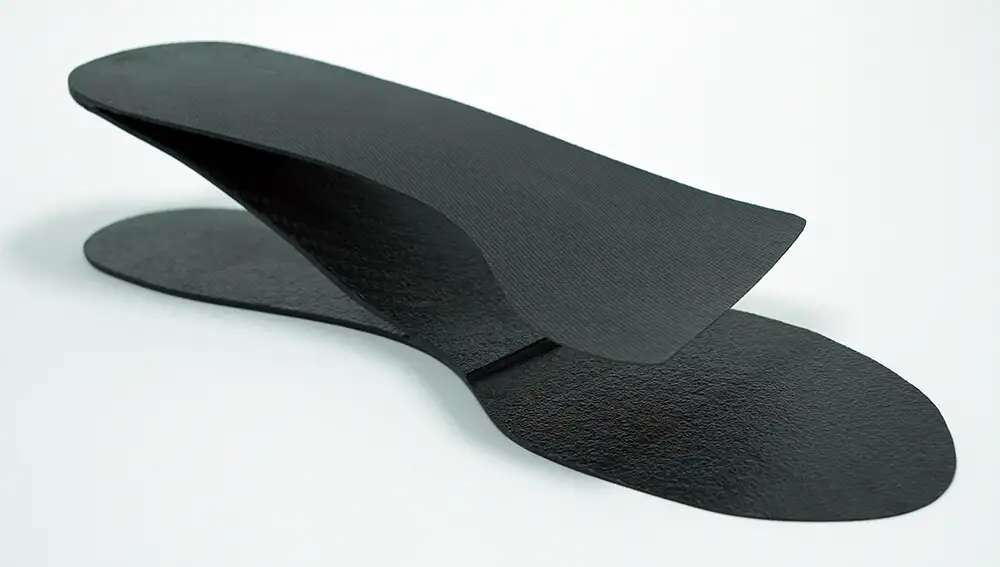
Initial design tests from earlier product development
Our development program was completed in January, and the production program is completing this month. We’ve had great collaboration on design, tooling and flow details between the customer and the RWC team.
We will be excited to join the customer in their formal product launch in the near future!
FOR IMMEDIATE RELEASE
Rock West Composites Is Expanding Its Short Lead Time, Space-Ready STRATO™ Product Line
This month Rock West Composites announces the expansion of its space-grade STRATO product line, which now has two classes created for LEO, GEO and Deep Space applications. These selections of tubes, plates, sandwich panels, and solar array substrates are some of the Space market’s fastest turnaround products with most lead times ranging from two to four weeks.
San Diego, CA (PRWEB) April 11, 2023 – Rock West Composites (RWC) announces the expansion of its STRATO space-grade product line this month. Originally focused on tubes for Lower Earth Orbit (LEO) applications, a secondary line will now include products appropriate for Geosynchronous Equatorial Orbit (GEO) and Deep Space use. STRATO products now include plates, sandwich panels, and solar array substrates for both orbital types.
The STRATO line is designed to provide businesses and government agencies high-quality components commonly needed for spacecraft, but RWC offers dramatically shorter lead times—approximately two to four weeks—than competing providers, and the order can be placed easily online.
The entire STRATO line meets key requirements for space, with properties that include low outgassing, low to zero CTE, high modulus materials, and a wide operational temperature range. RWC can offer significantly reduced lead times because it stocks raw materials such as M55J/PMT-F33 Cyanate Ester and HR40/NB321 Epoxy for its ecommerce business.
The STRATOLeo class is a more cost competitive option for meeting space requirements without the additional high-performance capability typically associated with GEO orbits and Deep Space flights. The STRATOGeo class uses top-of-the-line materials in all cases where performance can’t be compromised. The table below details some of the differences of the product classes.

Each order includes a certificate package with dimensional inspection, material certificates, traceability, and a certificate of conformance from RWC. All products are serialized and traceable. Additional options for some products include full traveler verification, resin content testing, and short beam shear testing.
“Our goal is to make space quality hardware readily available in a cost effective and efficient manner,” said Jeremy Senne, head of RWC’s Space market segment. “Whether it’s a start-up business building cube sats or large prime contractors looking to optimize operations, agile organizations in a rapidly growing industry need high quality solutions quickly. Our hope is to help minimize design and build timelines by standardizing available products.”
For more information on RWC’s STRATO line, visit www.rockwestcomposites.com/strato.
About Rock West Composites
Rock West Composites provides composite products for a variety of markets and customers. Specializing in carbon fiber composites, RWC offers custom products and solutions, such as product development, engineering services, prototyping, and manufacturing, as well as off-the-shelf products, including tubes, plates, complementary materials, and their space-ready STRATO line. Manufacturing processes include filament winding, roll wrap, resin infusion, bladder molding, modified closed mold, compression molding, autoclave cure, and precision assembly processes. Rock West Composites has facilities in San Diego, California; Salt Lake City, Utah; and Baja California, Mexico. www.rockwestcomposites.com
#######
For more information:
Julia Willis, Director of Marketing Communications
Phone: 858-537-6260
Email: marketing@1rockwest.com
Website: www.rockwestcomposites.com
We are proud to support the US Navy through this SBIR program making affordable broadband high-speed radomes. While we’ve talked about this radome program before and even written a case study about it, we’re excited to have been highlighted as a success story by the Department of the Navy’s SBIR/STTR Transition Program office.
We have a total order for 160 radomes to be delivered over four years and are delivering on schedule or earlier.
“The new radomes improve RF transmission, enable faster flight profiles, and are capable of higher temperatures for a significantly lower cost than the radomes they are replacing. A nose radome that can withstand the supersonic environment and have broader bandwidth inherently allows the sensor designer and the mission planner more flexibility in design of the antennas that can be included in the nose radome.”
Read more in the Success Story document below:
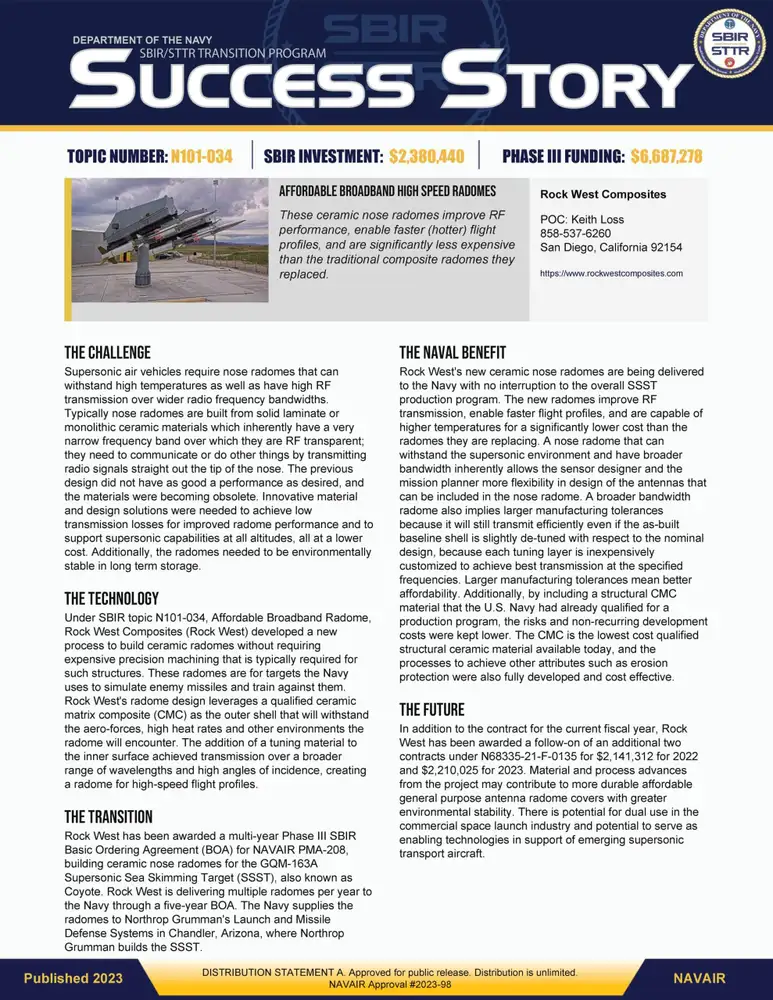
Rock West’s best and most important asset is its team of employee-owners. We know that our talented and engaged people are the primary reason why we are able to provide world-class products and services to our customers. We value our team and understand that keeping a healthy environment for everyone matters.
In line with this priority, we are pleased to announce that Cigna has selected Rock West Composites as a recipient of their Silver-level Healthy Workforce Designation for demonstrating a strong commitment to improving the health and well-being of its employees through a workplace wellness program. Rock West’s program focuses on the wellbeing of the whole person, it has leadership buy-in, and it has financial commitment from the company. For example, we engage in activities and challenges around fitness, financial wellness, healthy eating, mindfulness, and career growth, just to name a few.

“We are honored to be recognized with the Cigna Healthy Workforce Designation” said Grace Hernandez, Director of Human Resources. “We understand the important role employee well-being plays in a company’s success and the relationship between healthy employees contributing to a more productive, satisfied workforce and positive business performance.”
As an employee-owned business, the entire team benefits from the enterprise’s success. Investing in an effective workplace well-being program drives value for employee-owners. Senior executives surveyed as part of an Economist Impact study commissioned by Cigna reported greater productivity, stronger staff morale and motivation, and greater retention and loyalty as the most significant business outcomes of a healthy workforce. Additionally, a Gallup Report finds that on average, companies with high employee engagement are 23 percent more profitable.
The Cigna Healthy Workforce Designation evaluates organizations based on the core components of their well-being program, including leadership and culture, program foundations, program execution, and whole person health. Organizations recognized with this designation set the standard of excellence for whole-organization health.
Rock West is proud to offer a healthy and engaging workspace for its people. Join our team if you want to be a part of this terrific group of people!
Reflecting on the Past and Planning for the Future
As we move into our 16th year of business, we are filled with optimism for the future. A business that started as two friends working in a garage has grown to a team of over 200 people in four locations. This growth has been driven by our culture centered around continuous improvement. We always assess past performance to inform how we plan for the future of our business in the world of composites.
People
Our people are our most important asset, which is why we always seek to improve our workplace culture and benefits for Rock West employee-owners. It seems to be working because our San Diego and Salt Lake City locations were named to the 2022 Top Work Places by our local newspapers for the second year in a row! Last year we began building an employee wellness center, which should be completed this year, and our benefits have been expanded based on feedback from our annual survey of benefit preferences. If you want to be a part of a motivated, engaged, and fun group of people, join our team!
Business Markets
Last year we grew revenue over 60%! We made inroads in new markets and reorganized our business development and program management teams around these markets, improving focus on niche requirements and engineering needs as we move forward. You can read more about our Market focus on our recently updated website.
Facilities & Capabilities
We continue to grow and expand our capabilities. Last year we added an additional 5-axis machine to support the manufacture of larger substrates for space hardware, and we built a custom thermal chamber 50-feet long for thermal cycling long narrow substrates. Also, we added new precision assembly tables, a filament winder, a laser tracker for quality assurance, a laser ply placement system and new software for our CNC ply cutting. This year we’ll be adding a large platen press for oversize plate cures, another 6-spindle filament winder, more precision inspection equipment, and another CNC 3-axis router. We’ll also be expanding our Mexico operations. Our plans are adaptable based on the needs of our customers as we move into 2023.

Laser Ply Placement
Infrastructure
When a company grows this rapidly, its infrastructure has to be updated to keep up with the organization’s needs. This year was an optimal time to upgrade many information systems we use to run our business. We are already noticing the gains of changing to more powerful platforms and anticipate the efficiencies becoming more pronounced as 2023 continues. Saving time and keeping smooth operations helps keep our overhead rates competitive and ensures we continue to provide great value to our customers.
Moving Forward…
We hope your 2022 was wonderful and wish you the happiest of years in 2023! We look forward to working with you!!
Like all of you, our colleagues and customers, we are looking forward to taking time off to celebrate and spend time with our friends and families this holiday season. At Rock West Composites, we take this time to rest and recharge seriously, and as we do every year, we will be closing for a week during the holidays.
Plan Ahead and Order Now!
Do you have projects that need composite supplies during the holidays or at the beginning of the new year? You will be able to order online at any time, but fulfillment will be delayed from when we are closed to when we catch up on back orders in January 2023.
Order now! We will work hard to get your product out the door before the break so you have it when you need it. Due to our holiday closure and a planned system upgrade, there may be additional delays on orders placed after December 22nd.
The Details
Our online store will be open for business 24/7, like always. Our offices will be closed from December 24, 2022 to January 2, 2023. Customer Service will be back at the phones Tuesday, January 3, but order fulfillment will resume later in January.
We take pride in being timely with our shipments, and we appreciate your patience as we start the new year taking care of all your composite needs and also spending some time making our systems work better for you.
The team at Rock West wishes you a safe and happy holiday season!
We are proud to sponsor a new composites forum, the Composites Community. It’s a place to find people interested in composites and talk with experts in the field. You can ask our team and other members of our community about products, technical questions and almost anything related to composites.
It’s easy to register! Go to the Composites Community website and click on the Sign Up button in top right corner. You just need your display name, email and password. Then fill out your profile.
We’ve got videos and experts to answer tough questions. For example, community user Mark had a bike repair he was working on and needed some process information. John Kimball, one of our technical experts helped him evaluate the damage and then let him know what process to follow depending on the amount of delamination that occurred.
Our community is new and will be growing fast. We want to invite you to the neighborhood so you can be a part of that growth and interact with people who love composites as much as you do!
We are proud to announce that both our Salt Lake City and San Diego offices have been named Top Workplaces for the second year in a row. The list is based solely on employee feedback gathered through a third-party survey administered by employee engagement technology partner Energage LLC. The anonymous survey uniquely measures 15 culture drivers that are critical to the success of any organization, including alignment, execution, and connection, just to name a few.
Our San Diego headquarters was named by the San Diego Union Tribune as a Top Workplace, joining a limited 115 local companies with the honor. We placed #49 in the small business category.
Our Salt Lake City office was named by the Salt Lake Tribune as a Top Workplace, joining only 155 companies in the region on the list. We ranked #53 in the small business category.
We take employee satisfaction seriously at Rock West. We conduct quarterly surveys about work satisfaction and annual surveys about benefits. We translate this feedback into concrete action. For example, we’ve incorporated popular employee requests, including switching from a 40-hr work week to a 9/80 work schedule. As an ESOP company, all employees are owners. Being personally invested in the company makes for a highly engaged team. Rock West is rapidly growing, and we are hiring. If you are looking to join an amazing team of employee-owners, apply today!
This week Rock West was happy to host 15 engineering students who are currently taking a composites design class at USCD. We provided a short overview on the manufacturing processes that Rock West performs and then gave a tour of the factory floor. This included taking the students from the freezer, to the kitting room, layup and assembly, curing, machining, paint, and quality inspection.
Afterward we provided some pizza allowing for some informal Q&A time. RWC engineers noted that it was great to interact with the next generation of engineers who asked all sorts of great questions!
FOR IMMEDIATE RELEASE
Rock West Composites Introduces New Marine Division Before DEMA Show 2021
Rock West Composites announces the launch of its new Marine Division a week in advance of its attendance at DEMA Show 2021 in booth #1424. Initially focusing on supplying original equipment manufacturers with composite components, Rock West will display new custom products, in addition to off-the-shelf products and materials, relevant to the marine market.
San Diego, CA (PRWEB) November 9, 2021 – Rock West Composites (RWC) announces the launch of its new Marine Division in advance of its attendance at DEMA Show 2021, a premier trade-only event for businesses in the ocean diving and watersports markets. RWC will be in booth #1424. Targeting original equipment manufacturers (OEMs), RWC believes that its unique experience with high-performance industries and commercial markets will enable it to provide high quality products that are both cost effective and schedule sensitive, key issues that are challenging to OEMs.
RWC will be focusing on applications including carbon, glass, and hybrid composite free dive fin blades, wrapped and filament wound pole spear tubing, speargun chassis, gaffs, harpoons, technical diving backplates, and mechanical component substructures.
At DEMA Show 2021, the company will highlight a new product, a composites fin blade, which will be on display in the New Product Showcase. The materials are 100% carbon fiber, woven, uni-directional prepreg epoxy. The laminate is quasi-isotropic, strategically stepped and balanced. It has a medium- and soft-flex version available. Blade dimensions are 752mm X 210mm, and it weighs 235 grams. The attachment tendon is a 22-degree angle designed to fit most popular foot pockets. RWC fin blades are designed for high-performance continuous use conditions and are made using the highest quality carbon fiber, fiberglass, and epoxy resin systems and processes.
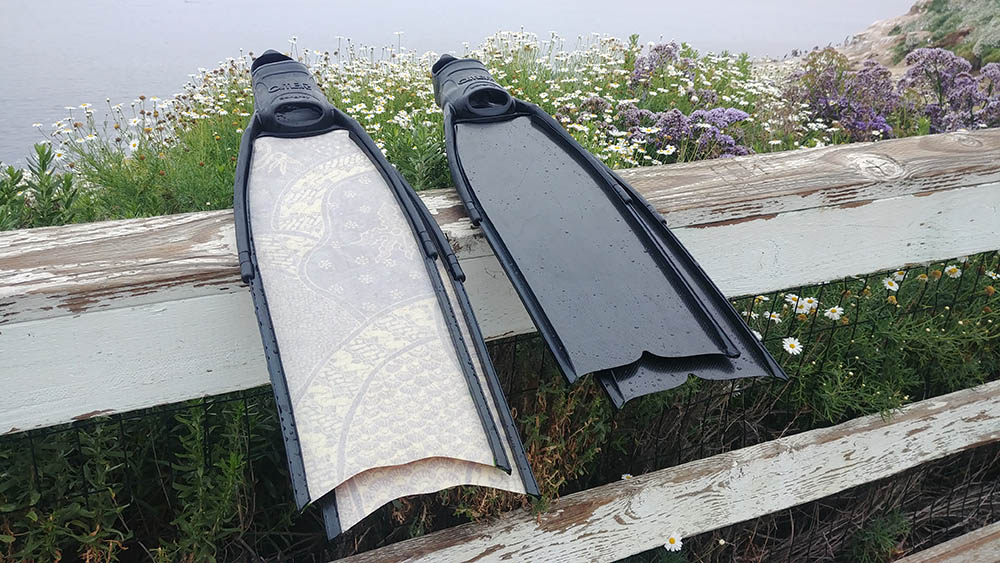
“We are excited about what we can contribute to this dynamic market space,” said Eric Thorstenson, General Manager of RWC’s Marine Division. “In the diving industry in particular, there is tremendous opportunity for cost efficiencies while retaining the high-quality structures and schedule adherence that original equipment manufacturers demand.”
For more information on Rock West Composites’ capabilities, visit https://www.rockwestcomposites.com/engineering/marine-products.
About Rock West Composites
Rock West Composites provides composite products for a variety of markets and customers. Specializing in carbon fiber composites, RWC offers custom products and solutions, such as product development, engineering services, prototyping, testing, and manufacturing, as well as off-the-shelf products, including tubes, plates and complementary materials. Manufacturing processes include filament winding, roll wrap, resin infusion, bladder molding, modified closed mold, and compression molding processes. Rock West Composites has facilities in San Diego, California; Salt Lake City, Utah; and Baja California, Mexico. www.rockwestcomposites.com
#######
For more information:
Julia Willis, Marketing Director
Phone: 858-537-6260
Email: marketing@1rockwest.com
Website: www.rockwestcomposites.com
It was only a couple of years ago that SpaceX founder Elon Musk unveiled an all-carbon-fiber rocket body for his interstellar spaceship to Mars. Then, seemingly without warning, Musk pulled the plug on the project. He scrapped the carbon-fiber rocket body, closed the Port of LA fabricating facility, and walked away from a lease on land he intended for a full-scale production facility.
Those who follow Musk and his SpaceX exploits were shocked. They had heard for years that carbon fiber was the key to making Mars colonization possible. Learning that he was scrapping carbon fiber in favor of stainless steel was puzzling, to say the least. Well, now we know what happened. We finally know why SpaceX abandoned carbon fiber.

We Now Know Why SpaceX Abandoned Carbon Fiber
A Massive Transport Project
Carbon fiber was the material of choice when SpaceX first began designing its Starship (formerly BFR) rockets. The reason was simple enough: carbon fiber’s impressive strength-to-weight ratio makes it superior to steel and aluminum for massive spaceships carrying unimaginable volumes of cargo.
Understand that a single trip to Mars will take years. The first waves of colonists will not be able to rely on regular supply deliveries similar to that which the International Space Station receives. They will have to take everything they need with them. Practically speaking, you are talking massive ships carrying everything from food to medical supplies and construction materials.
Musk determined that stainless steel would be impractical for building such large ships. Carbon fiber gave him a license to think as big as he wanted. But after a few years of research, building, and testing, he finally reached the conclusion that carbon fiber was not the way to go after all.
Two Big Concerns
Carbon fiber proved to be everything SpaceX thought it would be. However, there were too big concerns. The first is temperature resistance. While carbon fiber stands up extremely well to temperature extremes here on planet Earth, it wouldn’t do so well during atmospheric reentry. It just doesn’t stand up to that much heat.
In order to make carbon fiber work for a reusable rocket, the entire body would have to be insulated. That is certainly possible to do, but it adds to the expense. It also adds to the weight. A stainless-steel rocket body would only have to be insulated on the windward half. The rest of the body would be just fine. Why? Because stainless steel is much more temperature resistant.
The other concern was cost. SpaceX determined that it would spend upwards of $130,000 per ton to use carbon fiber as the primary rocket body material. On the other hand, it would spend just $2,500 per ton for stainless steel. It doesn’t take a mathematician to figure out that spending 50 times as much on carbon fiber would put considerable strain on the Starship project.
A Long Way Off
Musk and SpaceX are now in the process of trying to re-establish production facilities at the Port of LA. Rumor has it they want to begin manufacturing stainless steel rocket bodies and other parts from that location before shipping them across the United States to other facilities. In the end, however, a viable Mars spaceship is still a long way off.
Who knows what SpaceX will learn between now and the day it is ready to launch its first prototype? By then, the cost of carbon fiber materials will likely have dropped significantly. Perhaps improvements in manufacturing technologies will have made carbon fiber as heat-resistant steel. Who knows? SpaceX could eventually scrap stainless steel and go back to carbon fiber again.
If you can build something out of steel, aluminum, or wood, you can probably build it with a composite material as well. Take utility poles. Composite utility poles make up about 1% of the total now deployed around the world. One company in Turkey aims to increase that.
Ankara-based Mitas Group was originally established as a steel company back in 1955. It was formed by the Turkish government to help build the nation’s energy infrastructure. Privatized some 30 years ago, the company produces steel utility poles that are used domestically as well as being exported throughout Europe and to North America, the Middle East, and Africa.
Mitas recently took possession of a filament winding machine that it will use to produce up to 1,000 composite utility poles per month. The automated machine will make Mitas the first such company in Turkey to produce composite poles.
Why utilize composite poles instead of steel and wood? Below are the top five reasons. The rest of the world should pay attention to what Mitas is doing here.

5 Reasons The World Needs To Switch To Composite Utility Poles
1. Composites Don’t Corrode
Composite materials do not corrode like steel. For the purposes of this article, we will assume that Mitas poles will be made of carbon fiber. The poles can be installed with complete confidence that they will not rust. That makes them ideal for coastal areas exposed to salty sea air.
2. Composites Don’t Need Regular Maintenance
Both steel and wood utility poles require regular maintenance. Wood needs more maintenance than steel for obvious reasons. However, a composite utility pole requires no maintenance at all. Once installed, nothing more than routine inspections need be done. A composite utility pole does not need to be re-coated with a protective layer. It does not need to be painted.
3. Composites Are Pest Proof
Wood utility poles are vulnerable to a long list of natural hazards. One such hazard is pest infestation. Everything from termites to wood boring beetles can be problematic for wood utility poles. Replace them with composite poles and the problem is solved.
4. Composites Are Lightweight
Utility poles made of carbon fiber are exponentially lighter than both steel and wood poles. This is important in terms of installation. Imagine attempting to install new poles in a remote, rural location without road access. Getting the poles into position becomes a logistical nightmare. On the other hand, composite poles can be carried by hand and assembled on site.
Because composite poles are so light, they are also easy to install in dense urban environments without the need for heavy cranes and other large equipment. A single pole can be installed in just a couple of hours without major disruptions.
5. Composites Are Strong
Finally, carbon fiber is stronger than both steel and wood. Carbon fiber utility poles will hold up better against everything mother nature can throw at them. For example, they are better able to withstand high winds and the heavy loads such winds generate. Where wood poles might snap, carbon fiber poles will stand tall.
Given that Mitas exports their utility poles around the world, it could be only a matter of time before their products reach our shores. Maybe their success will prompt American manufacturers to secure their own filament winding machines to make composite utility poles domestically.
Image Source: Mitaş Composites
As a leading provider of composite materials in Salt Lake City, we frequently sell products to home fabricators. This includes glass and carbon fiber fabrics, tubes, plates, epoxy resins, and even adhesives. Working with any of these materials does pose some amount of risk to human health. As such, we recommend our home fabricating customers be smart about using personal protective equipment (PPE).
The pros use appropriate PPE whenever working with carbon or glass fiber. We use PPE at all of our facilities. If you are a home fabricator, you should too. Do not take any chances with your health. There is no valid reason to risk injury when a few pieces of PPE will keep you safe. We recommend the following four types of PPE:

4 Pieces Of PPE For Carbon Fiber And Fiberglass Home Fabricating
1. Protective Clothing
At the top of the list is protective clothing that will keep both carbon and glass fibers from contacting the skin. The fibers can be irritating to the skin even among people who don’t normally have reactions to potentially irritating materials. Why? Because both glass and carbon fibers are extremely small. If they get stuck to the skin, they can irritate pretty easily.
Protective clothing should include long pants and a long-sleeved shirt. A hat and work boots are also advised. After working with glass or carbon fiber, your protective clothing should be washed. Do not hang it up dirty and reuse it later as you run the risk of transferring fibers stuck on the clothing onto your skin.
2. Nitrile and Work Gloves
Next, we recommend two different types of gloves. During the fabrication stage, use nitrile gloves to prevent contact with epoxy resin and loose carbon and glass fibers. Nitrile gloves do the job and are very inexpensive. Best of all, they are disposable. That means you do not have to try to clean your gloves after handling epoxy.
Post fabrication, we recommend a pair of heavy-duty work gloves to protect your hands during grinding, cutting, sanding, etc. The purpose here is to protect your hands against any splinters that may result from machining finished parts.
3. Eye Protection
It is absolutely imperative to protect your eyes whenever you are working with composite materials. During the fabrication stage, you don’t want glass or carbon fibers in the air to make contact with your eyes. You do not want epoxy to accidentally splash up into your face either. During machining process, eye protection keeps you safe from carbon fiber dust and splinters. In both cases, safety glasses are the bare minimum.
4. Face Masks
Finally, it is wise to protect your respiratory system by wearing a face mask. A mask reduces the risk of exposure to small carbon fibers and carbon fiber dust. A filtered mask can protect you against the sometimes-overwhelming fumes put off by epoxy resins.
In addition to a mask, it’s advisable that you fabricate with carbon and glass fiber in well ventilated areas. Ventilation allows for faster dispersal of annoying fumes. With good ventilation, you will breathe easier and have a lower risk of being overcome.
One last thing we advise: familiarize yourself with appropriate first aid. For example, it’s best to treat skin irritation and rashes by washing the affected skin with soap and warm water to remove fibers. There is no need to scrub, and you probably shouldn’t if your skin is already irritated.
We applaud your desire to fabricate with glass and carbon fiber at home. Both materials offer a tremendous number of applications for home fabricators. Just do yourself a favor and be safe. Wear the appropriate PPE whenever you are working on composite projects.
Take a close look at a section of carbon fiber or fiber glass tubing or plate and you will see that the fibers go in different, specific directions. Comparing different styles of tubing you might notice that fiber direction, also known as orientation, is not always uniform. Composite tubing and plate manufacturers use different orientations depending on what they want to accomplish with the finished product.
In this post, we will explain how fiber direction influences the properties of carbon fiber and fiberglass tubing. Specific properties are often ideal for specific applications. By the end of this post you’ll know how fiber orientation affects the tube and how to pick the right fiber orientation for your project.
TOP THREE FIBER ORIENTATIONS
Fibers can be oriented in any direction between 0° and 180°, although fiber orientation beyond 90° is usually referred to as a negative angle value. For example, a 135° fiber angle is equal to a -45° angle. Most carbon fiber and fiberglass tubing on the market today utilizes a combination of two or more of these orientations:
- 0° – Zero-degree fiber angle is the most frequently used orientation. When fibers are oriented in the direction of the load they are the strongest and stiffest. On tubing, the zero-degree direction is along the length of the tube and contributes to bending stiffness strength.
- 90° – Ninety-degree fiber angle is used when bending both directions is required. In a tube the ninety-degree fibers are oriented in the circumference of the tube. They help keep the tube from crushing or buckling when loaded.
- ±45° – Forty-five-degree angles are often used in conjunction with zero and ninety-degree plies to create a quasi-isotropic layup. A positive forty-five-degree layer is almost always paired adjacent to a negative forty-five-degree layer. When used on a tube, forty-five-degree layers contribute to twisting stiffness and strength.
Woven fiber is often referred to as having a 0/90 degree fiber angle since there are fibers in both directions, but in a single piece. Some woven materials can contain even more fiber directions; for example, triaxial weaves have fiber in three directions and are usually quasi-isotropic by themselves.
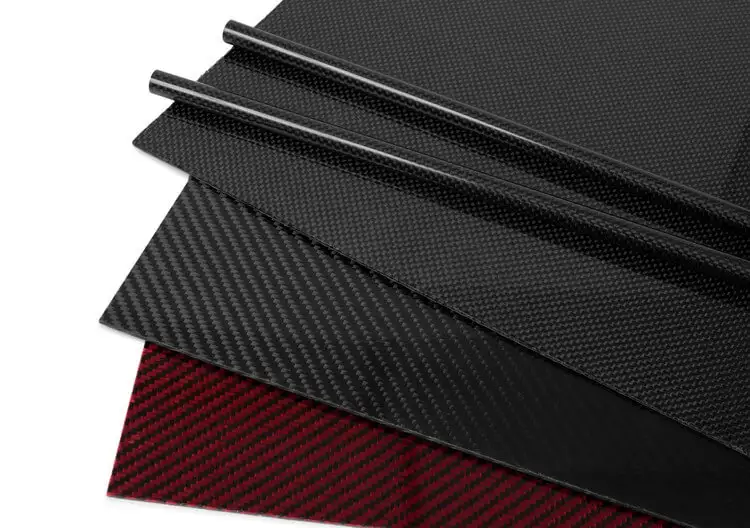
How Fiber Direction Influences Tube And Plate Properties
THE FIBER ORIENTATION’S EFFECT ON PROPERTIES
The way fibers are oriented in a carbon fiber or fiberglass layup influences its properties for making everything from tubes to space-ships. Builders must consider those properties during their design process. Below we will explain how each of the common fiber orientations affect the properties.
1. 0° ORIENTATION
If a part will only be loaded in one direction it’s ideal to have all the fibers oriented in that direction. Pultruded rod and tubing are examples of a part that contains only 0° fibers. Since most parts aren’t loaded in only one direction we need to add other angles to maximize strength. A tube that sees only bending and no twisting would still likely benefit from some additional fiber angles. Adding 90° layers helps the tube maintain its shape better so that it doesn’t buckle prematurely.
2. 90° ORIENTATION
As previously mentioned, 90° layers are often added to tubes to make them more resistant to buckling and crushing. High concentrations of 90° or “hoop” layers can also be found in pressure vessels. Since the force is trying to enlarge the tube in a pressure vessel, 90° layers resist the force best. When 90° layers are used in conjunction with 0° layers in a plate, its referred to as bidirectional. Using woven cloth can be an easy way to quickly build parts with fiber in both 0° and 90° directions.
3. ±45° ORIENTATION

Carbon Fiber Olates
Carbon Fiber Olates
45° layers serve different purposes depending on the application. You’ll almost always see a +45° paired adjacent to a -45° layer. This is to keep the laminate “balanced” and from forcefully twisting when loaded. When 45° layers are used in a plate that already contains an equal mix of 0° and 90° layers the plate becomes quasi-isotropic. Whereas a bidirectional plate has equal properties in two directions, a quasi-isotropic plate has quasi-equal properties in any direction. In a tube, 45° layers perform the job of adding torsional strength and stiffness. That’s because when a tube is twisted, the force acting on the laminate is actually at forty-five-degrees. Some laminates will use angles other than 45° as a compromise between bending, crushing and torsion performance. Since 0° layers aren’t possible on filament wound tubes it’s common to see 10° or 15° layers use instead.
CHOOSING THE RIGHT FIBER ORIENTATION
Now that you know how each fiber orientation affects the properties, you can choose the right layup. If you need a tube that performs in a wide variety of conditions, a bidirectional layup is ideal. If you need a tube that performs well in twisting, pick a product with more 45° layers. If you need to increase thickness quickly, a woven material might be a good choice.
Rock West Composites offers plates and tubes with layups to meet almost any demand. If you need a custom or engineered layup for your project give us a call or shoot us an email. If you have more questions about how fiber orientation affects the performance of a part, our customer service representatives would be happy to help.
A bicycle maker purchasing carbon fiber tubing for the first time from Rock West Composites will likely inquire about the grade of the carbon fiber in our products. That’s because we offer four different grades: standard, intermediate, high, and ultra-high modulus. When it comes to grades, tensile modulus is the defining factor.
Standard modulus carbon fiber is the most commonly used grade across industries. It is used for items like sporting goods, bike frames, and general-purpose tubing, as well as aerospace applications. Standard modulus carbon fiber is rated at 33 MSI. This means the resulting material has a tensile modulus of 33 million pounds per square inch. Ultra-high modulus fiber is the least utilized and most expensive of the grades. With a modulus rating up to 135 MSI, this grade is rather brittle and is used primarily for space applications. Remember, tensile modulus is a measurement of stiffness and should not be confused with tensile strength.

Carbon Fiber Grades: It’s All About Tensile Modulus
HOW WE GET TO MODULUS RATINGS
To make most types of carbon fiber, manufacturers start with large groups of carbon atoms that are aligned in a long plastic string. Through a pyrolyzing process that applies extreme heat to the carbon atoms, impurities are gradually burned away leaving just the carbon atoms. Modifications to the pyrolyzing process can produce higher purity strands with higher MSI ratings.
High modulus and ultra-high modulus fibers are sometimes called pitch fiber. Pitch fiber starts as a different raw material than standard or intermediate modulus fibers and uses a different manufacturing process. High modulus carbon fiber has a rating of at least 42 MSI while, ultra-high modulus is rated beginning at 65 MSI.
The downsides to creating more pure strands of carbon fiber are increased cost, increased brittleness, and decreased strength. However, the upsides outweigh the downsides for some applications. High and ultra-high modulus carbon are often used when maximum stiffness is the priority.

Carbon Fiber Olates
Modulus Carbon Fiber
CARBON FIBER TOWS
As impurities are burned away from the carbon atoms, the remaining material is reduced in size. Once fully pyrolyzed, the diameter of a single carbon fiber is a fraction of the size of a human hair. Since a fiber that small isn’t very useful, they are bundled into groups called “tows.” A carbon fiber tow is like a string made up of thousands of carbon fibers. Tow sizes are typically 1K, 3K, 12K, and 24K. The “K” refers to how many thousands of fibers are in a tow.
The weave typically associated with the “carbon fiber” look consists of 3K tows in a twill weave. 3K makes up the majority of carbon fiber materials since it can easily be woven or spread flat into a thickness that’s convenient for making laminates. If thicker layers are required, a 12K tow might be used, or for thinner layers a 1K tow is often used. You may see some materials referred to as “spread-tow” which means that the tow has been spread especially flat to reduce the thickness of the layer. An example of spread-tow can be found in the 12K plain weave on the outside of Rock West Composites’ intermediate modulus tubes.
HOW GRADE RELATES TO TOWS AT ROCK WEST
Rock West Composites uses different tow sizes and weaves to help you identify the grade of fiber used in a tube. Tubes with a 3K twill weave are made with standard modulus fiber, and tubes with 3K plain weave are made with high modulus. As previously mentioned, tubes with spread-tow 12K weave are made with intermediate modulus fibers. 1K plain weave can be found on our ultra-high modulus tubes.
We hope this helps explain the difference between the grades of carbon fiber, and helps you spot the difference when looking for your ideal tube. Remember though, higher modulus fiber means a stiffer fiber but almost always a weaker and more brittle fiber. If you still have questions, give us a call or send us an email. We would be happy to help you select the right carbon fiber grade for your application.
Customers routinely call Rock West to inquire about tubing materials. We tell them that we carry both carbon fiber and fiberglass tubing, then ask which material they prefer. Most already know what they want when they call, but how about you? Do you know the difference between carbon fiber and fiberglass? And do you know whether one is better than the other?
Fiberglass is definitely the older of the two materials. Its Created by melting glass and extruding it under high pressure, then combining the resulting strands of material with an epoxy resin to create what is known as fiber-reinforced plastic (FRP).
Carbon fiber consists of carbon atoms bound together in long chains. Thousands of fibers are then combined to form tow (aka strands of bundled fibers). These tows can be woven together to create a fabric or spread flat to create a “Unidirectional” material. At this stage, it is combined with an epoxy resin to manufacture everything from tubing and flat plates to race cars and satellites.

Carbon Fiber VS. Fiberglass Tubing: Which Is Better?
STIFFNESS
Fiberglass tends to be more flexible than carbon fiber and is about 15x less expensive. For applications that don’t require maximum stiffness – like storage tanks, building insulation, protective helmets, and body panels – fiberglass is the preferred material. Fiberglass is also frequently used in high volume applications where low unit cost is a priority.
STRENGTH
Carbon fiber truly shines with respect to its tensile strength. As raw fiber it’s only slightly stronger than fiberglass, but becomes incredibly strong when combined with the right epoxy resins. In fact, carbon fiber is stronger than many metals when fabricated the right way. This is why manufacturers of everything from airplanes to boats are embracing carbon fiber over metal and fiberglass alternatives. Carbon fiber allows for greater tensile strength at a lower weight.
DURABILITY
Where durability is defined as ‘toughness’, fiberglass comes out the clear winner. Though all thermoplastic materials are comparably tough, the ability of fiberglass to stand up to greater punishment is directly related to its flexibility. Carbon fiber is certainly more rigid than fiberglass, but that rigidity also means it is not as durable.
PRICING
The markets for both carbon fiber and fiberglass tubing and sheets have grown dramatically over the years. With that said, fiberglass materials are used in a much broader range of applications, the result being that more fiberglass is manufactured and prices are lower.
Adding to the price difference is the reality that manufacturing carbon fibers is a difficult and time-consuming process. In contrast, extruding melted glass to form fiberglass is comparably easy. As with anything else, the more difficult process is the more expensive one.
At the end of the day, fiberglass tubing is neither better nor worse than its carbon fiber alternative. Both products have applications for which they are superior, its all about finding the right material for your needs. Here at Rock West we pride ourselves in maintaining an extensive inventory of composites to meet the needs of each and every customer.
We sell carbon fiber tubing to DIY hobbyists and commercial users alike. And while we offer to cut tubes to specific lengths, we get the fact that customers sometimes have to cut tubes themselves. This post is intended to give you a starting point for cutting tubing in your own shop.
Please note that machining carbon fiber products does take practice. Whether you are cutting, drilling, sanding, etc. it may take you several attempts to get it right. You might want to practice on scrap pieces before attempting to machine parts that will be used in finished products.
Carbon Reinforced Plastic
The first thing to understand is what carbon fiber tubing actually is. A finished tubing product you purchase from us is essentially a carbon fiber plastic. The plastic component is an epoxy resin that has been cured. Carbon fiber embedded in the plastic provides reinforcement. Why does this matter?
Cutting carbon fiber tubes generates heat. Larger, denser tubes can generate enough heat to reactivate the epoxy resin. The end result is a slight melting of the plastic material that can gum up your saw. The best way to avoid this is to choose the right saw blade. You can also use a machining liquid to keep the saw blade cool.
Choose Your Blade Wisely
Fibers embedded within a piece of carbon tubing are still fibrous in nature. They haven’t been altered by combining them with the epoxy. As such, your choice of saw blades is important. We recommend staying away from a toothed blade. Why? Because fibers can get caught on teeth. This could result in significant delamination which, ultimately, compromises the integrity of the tube. Splintering is also fairly common.
Instead, a diamond coated abrasive cut-off blade is your best bet. A segmented blade will also work, and it will not generate as much heat. Regardless of the blade you choose, pay attention to its wear. The more worn your blade, the less clean your cut.
As you cut, let the blade do the work. Go as slow as necessary to prevent forcing the blade through the material. A slow and steady approach will ensure a clean cut with very little risk of delamination. On the other hand, forcing the blade through could damage the tube to the point of making it unusable.
Secure the Tube Properly
Many a cutting job has gone awry because the fabricator did not properly secure the tube in question. It is important that you limit movement as much as possible. If tubes move even a slight amount, you will not get a clean cut. If they move too much, you risk delamination and burring.
We suggest bracing the tube against a hard edge and holding it in place with a series of clamps. If you are cutting off a small piece, no additional clamps are necessary. However, consider how you secure the tube if you’re cutting a long piece into two even sections. It would be wise to secure and clamp both ends to ensure a clean cut.
Cleaning Up
Even the best fabricators do not get a perfectly clean cut every time. Sometimes you’re left with burrs or an unusually rough edge. Not to worry. You can clean up with medium grit sandpaper using a grinder or spinning the tube on a lathe.
We carry a variety of carbon fiber tubing products in different shapes and sizes. Contact us to learn more about our unidirectional and multidirectional tubes suitable for commercial and home use. We would be happy to explain the benefits of carbon fiber over steel, aluminum, and titanium.
There are numerous ways to fabricate composite parts utilizing carbon fiber and glass fiber. One method is the manual layup, a method that sometimes relies on vacuum bagging to help the materials consolidate more uniformly. Vacuum bagging is a procedure that is utilized both commercially and by DIY fabricators.
We have written this post to introduce our readers to the concept of vacuum bagging, what it does, and how it works. Note that we sell vacuum bagging kits and supplies. In fact, we have everything you need to complete manual layups at home or in your professional shop.
The Point of Vacuum Bagging
It is not absolutely necessary to vacuum bag composite parts. So why do people do it? If you were to create a carbon fiber body panel for a classic car, you would start by creating a mold, or a tool as we call it in the industry. You would then lay carbon fiber fabric on the mold and cover the fabric with epoxy resin. Then another layer of fabric and more resin, continuing until you built it up to the thickness you wanted.
At that point, you could let it cure as-is. But if you wanted to guarantee that air is removed and the resin is equally distributed throughout the fabric, you would turn to vacuum bagging. The process of vacuum bagging is intended to fully consolidate resin and fabric so that the finished product offers consistent strength and integrity throughout.
Vacuum bagging sucks all of the air out of the layup ensuring you create a part with minimal defects. The end result is a more consistent layup that cures into a more uniform part. That is really the long and short of it.
How It’s Done
The nice thing about vacuum bagging is its simplicity. It is as easy to do as it is to understand. Once a layup is complete, you apply a peel ply layer to help remove the finished part later on, followed by a breather layer that allows air to escape while simultaneously absorbing any excess resin. The entire layup is then covered with the vacuum bag and sealed around the edges.
Next, you connect hose and pump. Turning on the pump sucks out all of the air and creates a bit of pressure. From this point, you can leave the layup alone and let it cure in place or put it in an oven. In some commercial settings, the vacuum bag layup is put in an autoclave for curing.
Pros and Cons of Vacuum Bagging
Vacuum bagging offers benefits that make it the right choice for some projects. First and foremost is consistency. You just get more consistent parts this way. Another benefit is quality. If you need a high-quality part for which structural integrity is non-negotiable, combining prepregs and vacuum bagging is the way to go. The fact that the vacuum bag creates pressure on its own eliminates the need for autoclave curing in some cases (but not all) saving money by saving energy.
In terms of the cons, let us talk about pressure again. Autoclave curing relies on a combination of temperature and pressure to consolidate resin and fabric. High performance parts are typically cured in an autoclave. Thus, the advantages of vacuum bagging are diminished. With vacuum bagging, you also generate waste.
Vacuum bagging is a great practice for DIY fabricators. There are plenty of online videos explaining exactly how it’s done. In the meantime, feel free to contact us to order your vacuum bagging supplies. Don’t forget to ask about our fabrics and resin too.
Most of the customers who purchase carbon fiber materials from Rock West Composites are pros. They use what they buy from us to fabricate individual parts and finished products they intend to sell to their own customers. But believe it or not, some of our customers are DIY fabricators. Yes, DIY fabrication is entirely possible.
It is true that carbon fiber and similar composites are complex materials with a lot of science behind them. But you don’t have to go through the expensive and labor-intensive process of creating carbon fiber for your own layouts. You can buy carbon fiber sheets and prepregs from us. Rock West and our suppliers have done all the hard work for you. You take what you purchase from us and do the layup process at home.
If you are interested in learning more about DIY fabrication, there are great videos all over the internet. We found one series demonstrating how to make carbon fiber-reinforced propellers for drones. The fabricator who produced the videos started with a foam core that he then reinforced with carbon fiber sheets to create some pretty impressive props.
1. BUILD YOUR TOOL
The first step in DIY fabrication is to build your tool. In the composites world, a tool is a mold. You can build a tool in one of two ways. The first is to make a traditional mold into which you will place carbon fiber sheets in multiple layers. Once cured, you remove the part from the mold.
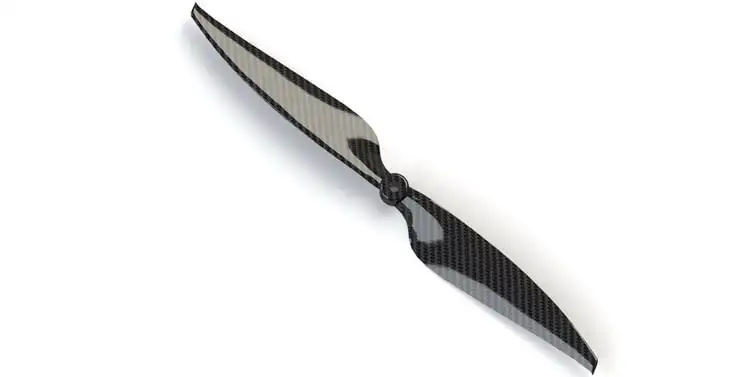
Carbon fiber propellers for a quadcopter drone.
The other option is to do what the drone prop fabricator did. He created a tool that acted as both the mold for his layup and the core of the finished product. Rather than laying carbon fiber sheets into his tool, he wrapped the tool with the sheets. He was left with one solid piece after curing.
2. PREPARE THE CARBON FIBER SHEETS
The next step is to prepare the carbon fiber sheets by cutting them to size and impregnating them with epoxy resin. Note that you don’t need to impregnate if you’re using prepregs. Prepreg sheets are already impregnated with epoxy.
Cutting carbon fiber to size does take some practice. One of the things the fabricator in the drone prop video does is mark his cut lines and then apply cellophane tape on either side before cutting. That way, when he does eventually cut the material, the raw edges on either side of the cut do not start to unravel. It’s little tricks like this you learn as you go.

Carbon Fiber Drone Propellers
Carbon Fiber Drone Propellers
3. LAYUP THE MATERIAL
Step number three is to layup the carbon fiber material in or over your tool. With each layer, you are going to apply additional epoxy resin to make sure the entire surface of each sheet is impregnated. A lot of DIY fabricators use a steel roller to firmly press the layers into place and simultaneously remove air. To reduce the amount of air bubbles or “voids”, it’s also a good idea to vacuum bag your layup to remove air during cure.
The number of layers necessary to complete your layup depends on the design of your part. Some parts call for more layers than others. At any rate, the final step is to place your mold in an insulated environment and apply some heat. Typical epoxies cure at about 250F, but there are also room temperature-cure epoxies available that just require a bit more time to fully cure.
What we’ve described here constitutes the basics of DIY carbon fiber fabrication. Obviously, there’s more to it as parts get more complicated. The point here was just to let you know that DIY carbon fiber fabrication is possible.
If you understand how carbon fiber tow and fabric are manufactured, you know that it is a complex and energy-intensive process that requires aligning carbon atoms, subjecting them to high heat, and then coating them with a chemical to help resin stick. But how do those fibers and fabrics become Shaped Tubing?
It is easy to look at a cross section of composite tubing and assume it’s a single-piece construction. The finished product certainly is a single piece, but that is only because the resin and curing process bonds everything together. That section of tubing did not start out as a single piece. It started as multiple layers of fiber or fabric that were combined with resin to create the finished tube.
There are four primary processes for creating composite tubing. These are:
1. ROLL WRAPPING
Roll Wrapped is typically done with a prepreg product to ensure consistency. A prepreg is a composite product consisting of fabric or fiber already impregnated with the epoxy resin necessary to hold everything together.
The prepreg material is cut into layers of different fiber orientation. Those layers are then rolled onto a cylindrical rod known as a mandrel. The mandrel and prepreg are then wrapped in a plastic film to contain the epoxy resin and compress the layers during curing. Once curing is complete, the mandrel is removed from the center of the finished tubed.
Roll wrapping results in maximum consistency across both carbon fiber and fiberglass tubing. The process also affords more customization in terms of both fiber/mandrel configuration and production quantities. Roll wrapping is the preferred process for producing small runs.
3. PULTRUSION
The Pultrusion process gets its name from its combination of pulling and extrusion principles. Where extrusion forces material through a die by pushing it, pultrusion accomplishes the same thing by pulling the material through the die. Pultruded tubing is created by pulling carbon fiber or fiberglass tow through a heated die as it is being impregnated with epoxy resin. The material is pulled over a mandrel that ensures it holds its shape during the curing process.
The advantage of this process is that it produces a continuous, unidirectional length of tubing that can be cut to size after curing. Since pultrusion is highly automated, it’s a much more cost-effective production process than both roll wrapping or filament winding. Pultrusion makes it easy to produce tubing in various lengths and thicknesses simply by changing up both mandrel and die.
The downside of pultrusion is that all the fibers are oriented along the axis of the tube. Having all the fibers in one direction means the tube is very good in tension but can easily split in compression or torsion. The quest for an automated process that can produce balanced tubes brings us to pullbraiding.
4. PULLBRAIDING
Pullbraiding is an extension of pultrusion. This process is essentially the same as pultrusion with one added feature: the fibers are braided together as they are being pulled through the heated die and onto the mandrel. Layers of different angles can be made by varying the braid, and even unidirectional layers can be inserted.
Both pultrusion and pullbraiding create finished products with high stiffness and strength-to-weight ratios. But the main advantage of the pullbraiding process is that it creates a more balanced tube that performs under a wide range of loads. It also adds an element of aesthetic beauty since the braid is more in line with the traditional “carbon fiber” look. And since this process is highly automated like pultrusion, pullbraided tubes are often less expensive than roll wrapped or filament wound products.
Georgia Tech students shot for the skies with one of their latest projects with the main goal of designing, building, and then launching a rocket. There are a lot of factors that make rockets difficult to design, including having to account for heat, weight, and durability. Georgia Tech Ramblin’ Rocket Club and Georgia Tech Experimental Rocketry (GTXR) came up with a design for “Mr. Blue Sky” and chose Rock West Composites to provide them with parts needed to make it.

Detail of the Rocket (left) and the Georgia Tech Team (right)
Our engineering group designed custom fiberglass filament wound tubing with high-temperature resin. Using our tubes, Georgia Tech’s teams pushed what is possible with homemade rocketry design and had a successful launch! The team’s goal for Mr. Blue Sky was to achieve speeds past Mach 3 and reach a height over 100,000 ft. While this first launch did not reach ideal results, only hitting speeds of Mach 1 and a height of 19,000 ft., it still remains impressive and provided a lot of valuable information for the team to learn from. A new set of our high temperature tubes—this time made of carbon fiber—were recently delivered, and they are set to fly the Summer of 2023.
“Rock West was the only supplier capable of providing the high temperature composite solution our team needed, with tubes delivered to spec and with a short lead time.” — Joey Gemini, Georgia Tech

Mr. Blue Sky Successfully Launches
Rock West Composites is happy to support teams of any size in their endeavors, always inspiring people to achieve greatness. If you have your own project like Georgia Tech, then check out our student discount page. We provide students and teams in STEM education programs 15% discounts on our stock products. We wish Georgia Tech Ramblin’ Rocket Club and Georgia Tech Experimental Rocketry (GTXR) best of luck in designing future iterations of Mr. Blue Sky!
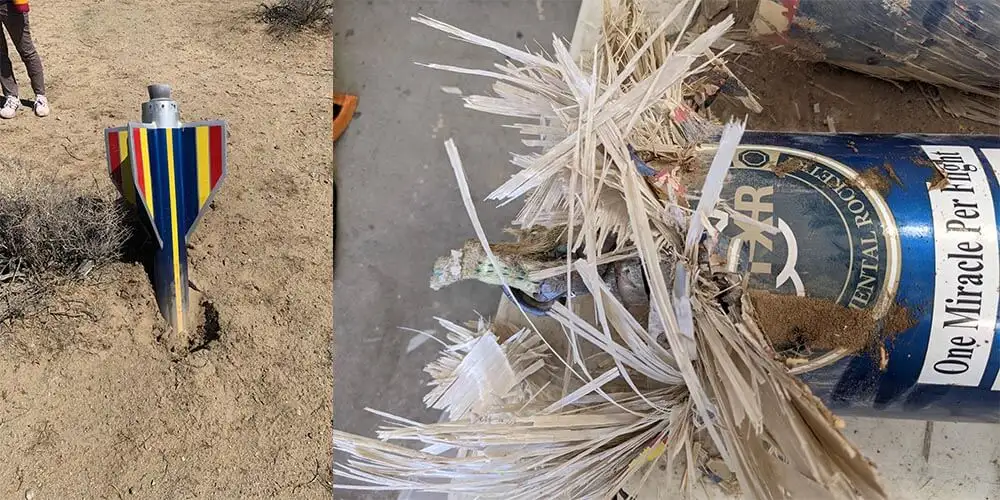
The Rough Side of Rocketry
Composites are typically used as a material that is both lightweight and strong. There are many major applications composites can be used for, like marine or space technology. Even then, it is important to admire the smaller, everyday projects for which anyone can use our composites.
Meet John Kimball, our Technical & Applications Specialist. He finds joy in working with carbon fiber and likes to utilize it in his own personal projects. Ideally, he likes to create any product that benefits from not only the capabilities of carbon fiber, but its futuristic look as well. Two years ago, John started a project utilizing one of our products to create a knife, which is a perfect application for carbon fiber.

John Kimball’s Knife
He initially began this project with Rock West’s release of a new product, carbon fiber chip board, a few years ago. This chip board is known as “forged carbon” or “Damascus carbon,” which is short strands of carbon fiber pressed into a plate.He explains his creation process as, “I just dissembled the old knife and traced the general shape from the original handle pieces, then used sandpaper and hand grinders to finalize the profile. After the shape was finished, I used fine sandpaper to remove the scratches and then used a polishing compound to give it a nice smooth finish. Locating the screw holes was the most challenging part as all three holes need to meet a very tight tolerance.” Amazingly, even after two years have passed, he says the knife remains in great condition.Rock West is always encouraging engineers and DIYers alike to try utilizing composites outside of major projects. There are many simple items that could benefit from a material that is lightweight and strong, like pens, bows, or in this case, a knife.
As we announced on social media earlier this month, Rock West Composites (RWC) received the CMS Gold Award for Industry from CERN for “excellence in collaborative design finalization and subsequent fabrication of the BTL-Tracker Support Tube Prototype.” The prototype was designed and built for the CMS (Compact Muon Solenoid) detector. Rock West Composites was nominated for the award by Purdue University, with whom we worked on this complex and difficult project.
Rock West was one of five companies, and the only US company, to get one of these prestigious awards for 2022. But what’s really interesting is the innovation that enabled this project to meet its objectives. The demonstration tube—2.4 meters in diameter by 1 meter long—had to meet all technical requirements, using tools and processes that were scalable to the future version that will be 5.2 meters long, PLUS remain affordable. The length of the future full-scale tube significantly magnifies the complexity and cost.
The prototype required collaboration with Purdue University to configure the design for manufacturing. If the composite laminates had been laid up traditionally, the prototype would have been 8 to 20 times more expensive. It would also would have been more challenging to hold an exact diameter since curved composite laminates distort when cured. The solution the Purdue/RWC team devised was to machine the circumferential stiffeners as precision arc segments from a thick laminate of carbon fiber (instead of laying them up on a round mold). This took advantage of the in-plane properties of the laminate, namely, isotropy and low coefficient of thermal expansion (CTE). This avoided the complications due to the high CTE through-thickness. Building in arc segments also allowed for modularity in the manufacturing process, avoiding very large (expensive) tools and easing construction.
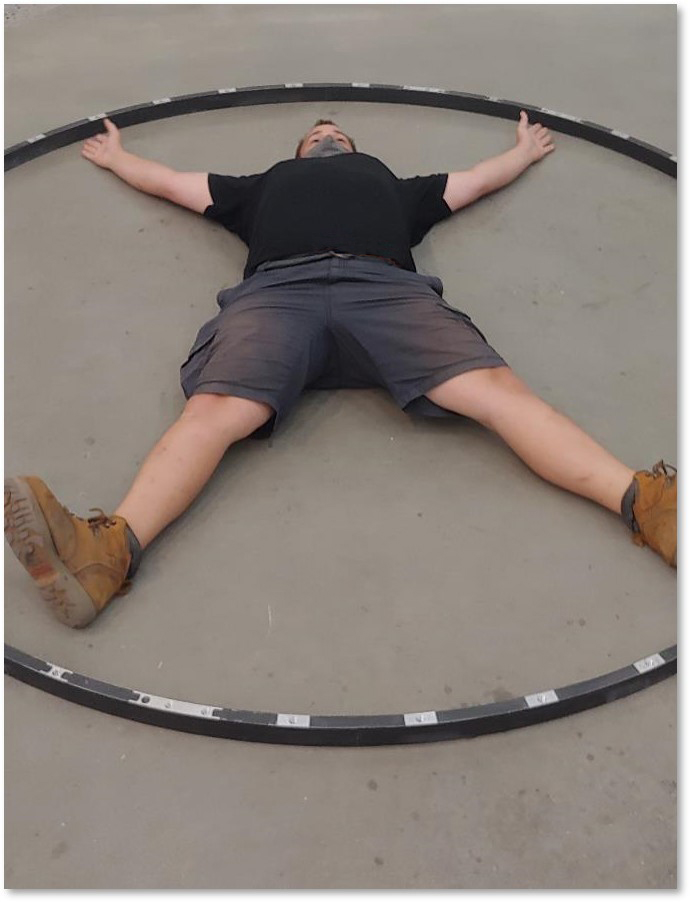
Vitruvian Man takes a break. That’s Lee with the final stiffener ring.
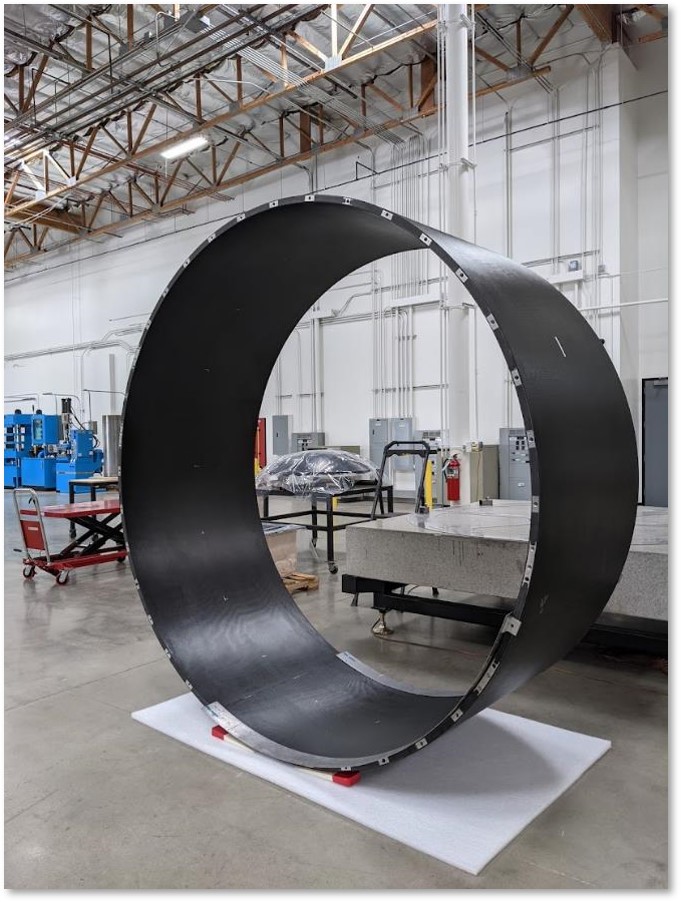
Completed Prototype of the BTL-Tracker Support Tube
The BTL Tracker Support Tube prototype appeared as a simple cylinder from the outside, but it had multiple circumferential stiffeners, 100s of inserts, extremely stiff rails for instrument loading, and lengthwise splice plates. It met all CTE, stiffness and dimensional tolerances- as well as budget and schedule. RWC’s Director of Product Development, John Marks, worked closely along with team at Purdue University, Dr. Andreas Jung and Dr. Ben Denos. RWC collaborated with Purdue to have them do the tool design which saved budget and helped Purdue fund its team. Our RWC technicians, including Chad Williams, Lee Bridges, and Jose San Vincente, skillfully executed the prototype.
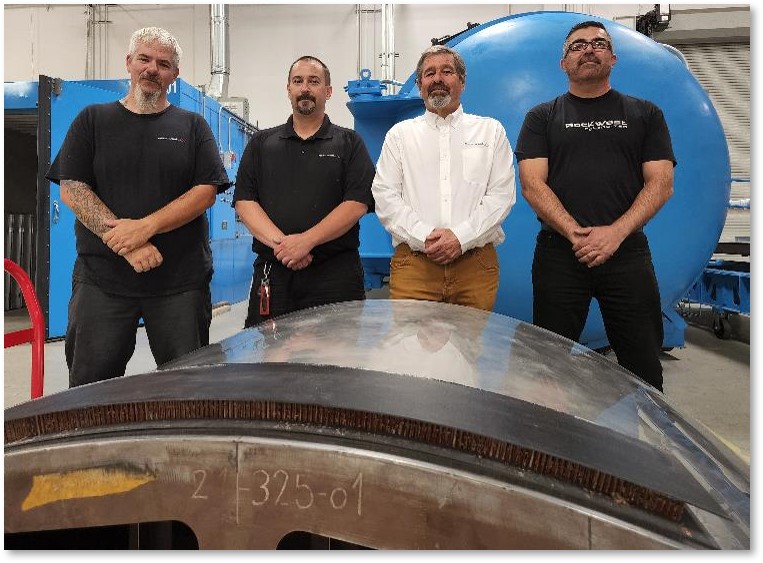
Rock West Team with the arc tool.
“Starting in 2000, the CMS Collaboration has honored industrial companies that have made outstanding contributions to the construction of the experiment with the CMS Gold Award. Companies who have demonstrated their excellence and engagement and who provide parts within specifications and on schedule are considered for this award.” – CERN/CMS
We are particularly proud of this award not only because of the technical challenges this program presented, but because of our successful collaboration with the team at Purdue. Thanks to the Purdue team for the nomination and for all our colleagues who helped make this program succeed!
Since the reformation of Rock West Composites Marine Division in August of 2021, we have received orders from two proven, trustworthy brands within diving’s Spearfishing market sector. Rock West is now a proud supplier of pole spear and dive fin components to these high profile, reputable OEMs.
Late last year, Rock West Marine was approached by one of the largest high-end pole spear brands to develop precision tubes to their brand requirements. We received a paid development order to make specific, same diameter roll wrapped and filament wound composite tubes to perform a head-to-head comparison study. As part of their qualification process, our customer ordered enough sample tubes to perform field testing with their professional staff and athletes. Both field tests and static lab tests were run in parallel. Our customer diligently evaluated performance before choosing the optimal solution and then placed a second small production order with RW early this year 2022. Our customer is happy with Rock West’s performance and is placing additional orders for tubes of this qualified design in the future. New designs for pole spear tubing and other related products are being quoted. Eric Thorstensen, the GM of the Marine division, sends a big thank you to Brian Shelby and Anthony Fairhurst for technically heading up development and delivering our first pole spear production order to our customer.
In August of 2021 Rock West Marine put together a small R&D tiger team lead by Ethan Gormican to develop two different (medium and soft) flex carbon composite fin blades to offer future OEM customers. Rock West Marine attended DEMA (Diving Equipment & Marketing Association) Show in Las Vegas last year and showed our newly designed fin blades, along with other products. We received excellent feedback from interested OEM’s, dive shops and individuals confirming our entry into this market space. Eric thanks Julia Willis, Ethan Gormican, Brian Shelby, and Rylan Hayes for their help working the DEMA Show. Early this year, 2022, Rock West received a production order from one of the dive industries top spearfishing brands to manufacture 500 pairs of carbon composite dive fin blades. This customer’s goal is to grow RWC supplied fin sales into 2000+ pairs of fin blades annually.
Eric said, “These are exciting times and opportunities for us in this market. We know that we can provide excellent quality and consistent delivery for OEMs who are challenged by vendor reliability. These orders are a great start to a healthy market presence.”
At Rock West’s new headquarters, we have an RF test lab to support our many radome, antenna, and integrated RF structure programs. Recently we had a radome that required physical characterization of performance as part of its testing and verification plan.
For this particular program, the radome provides high-performance, low loss protection for modern radar equipment. It has both military and commercial applications and is built under the support of solution provider R4 Integration, Inc.
The radome is a multi-layer sandwich construction using low dielectric materials that are optimized to provide low transmission loss over wide broadband frequencies. This customer had narrow frequency bands of interest, and we were able to tune the radome for best performance within those specific frequency bands.

Radome being mounted on test frame
This program required physical test verification at a large amount of view angles, to map the radome’s performance over the entire surface. To test many view angles efficiently, our team had commissioned a custom structure to position the radome at 5 degree increments in both the azimuthal and elevation planes. It’s built mostly of wood and fiberglass to minimize structural RF interference. These are images from the testing process.

Transmission Loss testing for radome at different view angles
The successful testing and characterization of this radome enabled our customer to provide system-level performance feedback to their customer, meeting requirements for both the airborne terminal and the satellite-based communication systems.Rock West produces radomes from L-band to Ka-band with transmission loss typically below -1.0 dB, with many radomes tuned for loss below -0.5 dB in primary transmit and receive bands. Our in-house testing capability enables us to quickly test prototypes, shorten program schedules and reduce risk for programs with strict RF requirements.This radome is designed, analyzed, and qualified to FAA Supplemental Type Certificate (STC) requirements. Rock West has heritage in FAA qualification for wide range of aircraft and radome types.

Full Test setup
Rock West has been in business for 15 years! The business was started by Jim Gormican and Keith Loss, two former colleagues, who decided to pursue an entrepreneurial endeavor together in Jim’s garage in late 2006. Since then, Rock West has grown into a business with four locations and nearly 200 people.

From the Garage to the New Headquarters in 15 Years
The initial work was centered around aerospace engineering and the commercialization of carbon fiber composites, which had been historically expensive, too expensive to use beyond specific, highly demanding applications. The business grew in 2009 through the acquisition of the former Maclean Composites in Salt Lake City, and the Rock West Composites brand was born. The new office pursued the online sales of carbon tubing and pioneered ecommerce for composites.

Ecommerce Pioneer: flashback from a decade ago (left) to our current site (right)
Ecommerce operations are located in our Salt Lake City facility (bottom right)
Joining the Rock West team shortly thereafter was a group of applied sensor specialists located in Santa Barbara. They became the Rock West Solutions division. In 2017, the business launched a venture in Mexico to help reduce labor costs while allowing easy access to facilities. As part of the CaliBaja Mega Region, Rock West is working to re-shore jobs that have gone offshore, bringing work back to US in partnership with our neighbors in Mexico.

Santa Barbara office (left), Baja California (right)
Jump ahead to today and our headquarters in San Diego is now in over 100,000 square feet of office and manufacturing space. Our Salt Lake City facility has expanded to encompass its entire building. Santa Barbara has grown to include more office space and new secured labs. Tijuana has continued to expand and improve its facility and equipment. Rock West has come a far way from the original garage office.

Facilities: San Diego warehouse (top left), Salt Lake City filament winding bay (top right), Baja California resin infusion area (bottom left), Santa Barbara offices (bottom right)
From four customers in the first year in business to over 4,000 in 2021, it’s a story of exceptional growth. And while the years of the pandemic have had an impact, they have not dampened the ambitions of our business, which is poised for significant growth in 2022. But most importantly, the growth has enabled us to better service our customers, provide growth opportunities for our staff, and better return for our owners, which include every employee. In 2018, Rock West Composites became an ESOP company, with an Employee Stock Ownership Program, guaranteeing the entire team is invested in the success of the business.
Several of our team members are into racing and not just as spectators. Some even go out to test their metal at what is billed as the “fastest racetrack on earth,” the Bonneville Salt Flats in Utah.
One of the Rock West team, Nick Montoya, is part of a local group, Bean Bandits Racing Team Est. 1949, and has raced with them for five years. He has worked on cars since he was a kid and raced at Bonneville before, but in 2021 he joined the Bean Bandits team at the famous track to test a car they built. Nick said, “We built this car from scratch in Barrio Logan in San Diego. The body is an original 1927 Ford Roadster, heavily modified. The chassis and all other components are custom and built by us.”

Nick is joined by Derby Pattengill, the senior driver for Bean Bandits, and has his HANS device at the ready
Safety is always the top priority for the team, and the objective of last year’s run was to tune the chassis and make sure the car acted accordingly at speed. This was a test run. Derby Pattengill, the senior driver for the Bean Bandits, has driven over 242 MPH and has over 20-years driving experience. He drove the car the first time to ensure Nick could get behind the wheel safely.
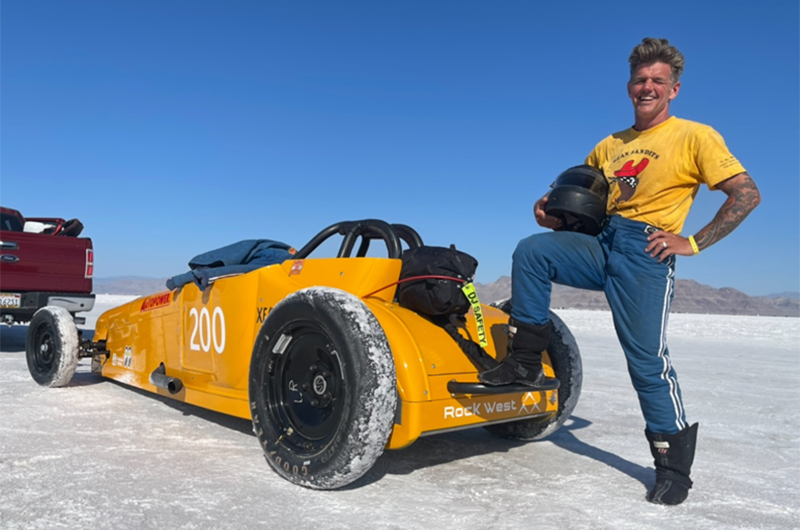
Derby Pattengill with the Bean Bandits XF Gas Modified Roadster
In addition, Nick drove using the HANS Pro Ultralight safety device, a head and neck restraint, in his test run. Rock West Composites manufactures the carbon fiber structure of this HANS device for Simpson Motor Sports.Now that the car has proven sound on the track, in 2022 the team plans on racing for a world record in the car’s class by meeting and beating 160 MPH. We wish them luck and safe racing in 2022 at the Bonneville Salt Flats!
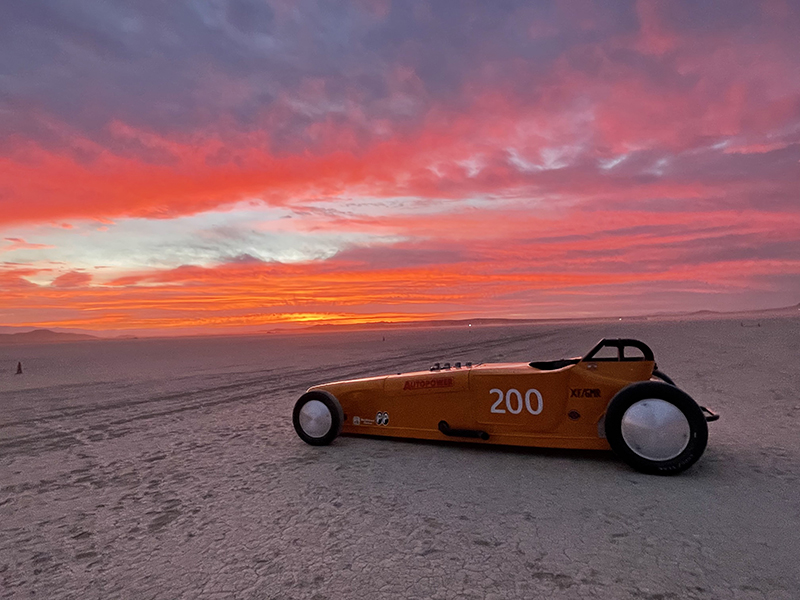
The Bean Bandits XF Gas Modified Roadster
Rock West Composites is now offering an extensive collection of PRO-SET epoxies and adhesives, which are a great solution for composite lamination, fabrication, and assembly. These epoxies can withstand the harshest of environments and are optimal for today’s high-performance composites manufacturing. PRO-SET epoxies have a long shelf live and can be stored at room temperature. We offer multiple types of epoxies depending on your application: laminating, infusion, high temperature and adhesives.
The PRO-SET laminating epoxies are designed for laminating reinforcement fabrics, resin infusion processes, and bonding many materials, including metal, core materials, and even wood. They cure at room temperature. You can mix and match resins and hardeners to create your own custom blend of cure times and viscosity. With excellent moisture resistance, they are tough against heat and structural fatigue. We also carry PRO-SET absolute clear laminating epoxies that offer colorless clarity and UV stability in addition to offering excellent sandability.
Our PRO-SET infusion epoxies meet strong structural requirements with a room temperature cure and have superior strength with an elevated temperature cure. These are very low viscosity systems designed to work well with modern infusion processes.
PRO-SET high-temperature epoxies offer excellent thermal stability and work when cosmetics matter. These resins are stable in temperatures up to 300°F (149°C) and are moisture, heat and fatigue resistant.
PRO-SET adhesives are pre-thickened, two-part epoxy adhesives used for secondary bonding of laminated composites as well as steel, aluminum, cast iron, concrete, stone, and most woods. They are great for assemblies, offer a wide variety of options (speed, strength, color), and require no welding, fasteners or rivets.
Designed for the professional but also excellent for the DIYer, this new series we offer can meet your projects most demanding structural needs. Check out our PRO-SET epoxies and adhesives now!
Working at Rock West is always fun, but sometimes challenging because we are a rapidly growing business. One of the strategies we use to help our team succeed and address challenges is to treat every employee like a business owner, which they are.
Today we had our quarterly meeting which covers our company’s financials and business direction. We celebrate our successes, recognize key contributors, discuss our challenges, and review our plans to maximize growth. Everyone has the opportunity to ask questions throughout the presentation to clarify information or better understand the “why” of decisions that affect the larger vision of the business.
It is a major financial investment for the business to have the entire staff at every level of the business take one hour of their day every quarter to hear the CEO discuss sales, orders, EBIT and cash flow. But it is representative of what we value: transparency. Our CEO Jim Gormican says, “People make better decisions if they have better information.” This is true in our relationships with employees and customers.
At Rock West, we are all owners through our Employee Stock Option Program and are invested in the success of the business. Understanding the financials helps every employee be a better business owner, whether they are a composites technician or program manager, a facilities tech or staff accountant. Every employee makes a difference.

All employees from every facility join our Quarterly Meeting updates. People can join in person or via video conferencing.
If you are interested in being a part of a growing business that values its employees and becoming an owner invested in the whole team, learn more about careers with us because we are hiring!
In 1975, Business Week declared that office automation would make paper redundant and predicted with the introduction of the personal computer, we would soon see a paperless office. Fast forward nearly 50 years and it seems quite the opposite has happened. The advances in spreadsheet software have generated thousands of new ways to look at the data. And rather than look at that data on our screens, we print it out, scribble our notes, then update the electronic version for another round of printing. All this printing, and the subsequent storing of documents, contributes to the continuing global climate crisis. According to the American Forest and Paper Association, paper manufacturing accounts for the 3rd largest use of fossil fuels worldwide.
At Rock West, we strive to do our part to drive green initiatives that will help address global warming. Our work producing parts from advanced composites helps lighten a myriad of products across many industries. Lighter products require less energy to transport, drive, or even fly. And the durability of carbon fiber means it will last much longer than metal alternatives, without risk of rust or corrosion. Now we’ve turned our attention to the paper piling up in our business. While document retention will always be needed, we’ve implemented a new document management program that will digitally store everything we need. This will not only eliminate the need to print out many of the documents we receive electronically, but it will also eliminate the wasteful practice of boxing up records and storing them for years to come.
We’ve all been taught to Reduce, Reuse, Recycle – in that order. Reduction in paper printing, just like reduction in the weight of an airplane made with advanced composites, should be our priority. It’s awfully hard to reuse that piece of paper, and recycling uses more energy and water. Kudos to our Finance team for leading the way on this green initiative!
Ethan is a Manufacturing Engineer who works on our marine programs. Like so many of our Rock West team, he enjoys outdoor activities of all types. While experienced in several ocean sports, Ethan is relatively new to diving and has jumped into the action with the focus and passion of a new convert. He’s been instrumental in our composite fins’ manufacture and has enjoyed taking them out for real-life testing in San Diego’s coastal areas.
On a recent weekend trip to the mountains, Ethan went out to Big Bear Lake and decided to test our Rock West-designed, medium-flex, carbon fiber fin blade prototypes in a different environment. It just happened to be a little colder than expected that day with frozen precipitation on top of already cold temperatures. He said, “I thought the water would be 45°F but it was closer to 35°F. But in the cold and stillness of winter can come incredible clarity.”
 <
First, a man and his dog, then Ethan finding clarity the hard way (that’s dedication to the craft!).
<
First, a man and his dog, then Ethan finding clarity the hard way (that’s dedication to the craft!).
We are excited to announce that Rock West Composites (RWC) has been named as one of the Top Workplaces USA 2022. This award celebrates nationally recognized companies that make the world a better place to work together by prioritizing a people-centered culture and giving employees a voice. The Top Workplaces USA award is based entirely on feedback from an employee engagement survey completed by the employees of participating workplaces.
Both our San Diego and Salt Lake City locations were honored in their local listings. Rock West’s headquarters was awarded under the San Diego small business category, as was our Salt Lake City facility. Thanks to our employees for these honors!
At the top of our list of brand values is that “our workplace should be fun, creative and empowering for employees,” and we strive to put this value into action. We are so glad that our efforts to create an engaging and fulfilling workplace across the organization are resonating with our team.
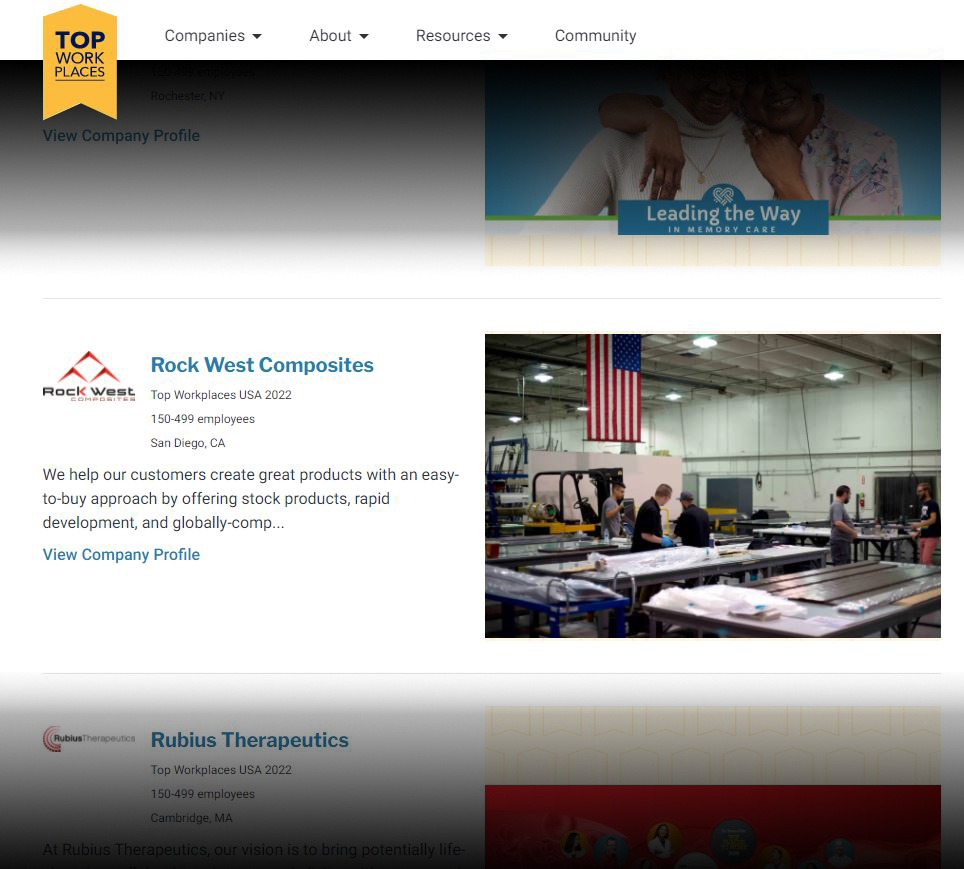
Top Workplaces USA 2022 Listing
Are you interested in a career with us? Our mission is to make the magic of composite technologies accessible to the world, and we can’t do that without the best people. Join our Team!
Rock West’s Marine division is spearheaded by Eric Thorstenson. His love of ocean sports goes back decades. Eric’s first trip to Lands End at the tip of Baja California was 1981 when he traveled from San Diego, CA to Cabo San Lucas, driving 1,000 miles south on a two lane highway. He was roughing it in a 1965 GMC metal dashboard pickup truck with cab over camper. Drawn in by Baja’s majestic beauty, sheer landscapes, pristine beaches, colorful sunrises and sunsets, coupled with its raw, wild coastline, Eric has since made countless subsequent trips exploring, surfing and diving remote locations up and down this amazing peninsula.
An ardent believer in sustainable fishing, Eric is extremely mindful assessing each fishing ground he hunts prior to taking fish. He primarily targets Pelagic fish (migratory open ocean fish), and when hunting reef fish, he only takes when he sees or knows there are several more of the same target species within the area he’s hunting. He also only takes for personal family and friends consumption, and abides by local fishing rules, regulations, and laws.
Eric spent the end of 2021 through New Years 2022 in the Los Cabos, Mexico area surfing and spearfishing in his favorite spots. He considers himself extremely fortunate, lucky, and honored to find and capture this beautiful fish. (Eric was out testing new Rock West composite fin prototypes. Coincidence?)

What: Baqueta Grouper
Where: Los Cabos
Hunting Depth: 15 – 20 meters
How: Apnea (Breath Hold) Spearfishing
Why: Testing Rock West Marine’s new prototype composite fin blades
When: December 29, 2021
Every dive this trip Eric heard the reverberating sounds of Humpback whales communicating with each other. Eric says it’s difficult to articulate the feeling he gets listening to, feeling these awesome mammals communicate in the water. Diving the same general fishing area, the following day, Eric was buzzed by a juvenile Humpback whale. The whale came within a 10-meter distance away from him. The whale was so close, Eric saw every detail as it slowly cruised by disappearing into the blue… a priceless moment.
We have been highlighted in this month’s Spotlight from the Department of the Navy’s SBIR/STTR Transition Program. We are working on a multi-year Phase III SBIR building ceramic nose radomes for the program known as Coyote, i.e., the Supersonic Sea Skimming Target (SSST). Our radome design improves performance and saves costs while enabling faster flight. This program is executed in collaboration with the US Navy and other contractors. Collaboration is in our company’s DNA; and this program, which involves the government, primes, and subcontractors, is a great example of how we can work seamlessly with others to reach an end objective.
SBIR projects have been instrumental to the growth of the Rock West Composites’ business overall. The program has turned into a significant production program for us, which is the best outcome we could have hoped for.
Here is the January 2022 Spotlight from the Department of the Navy’s SBIR/STTR Transition Program, which features these radomes.
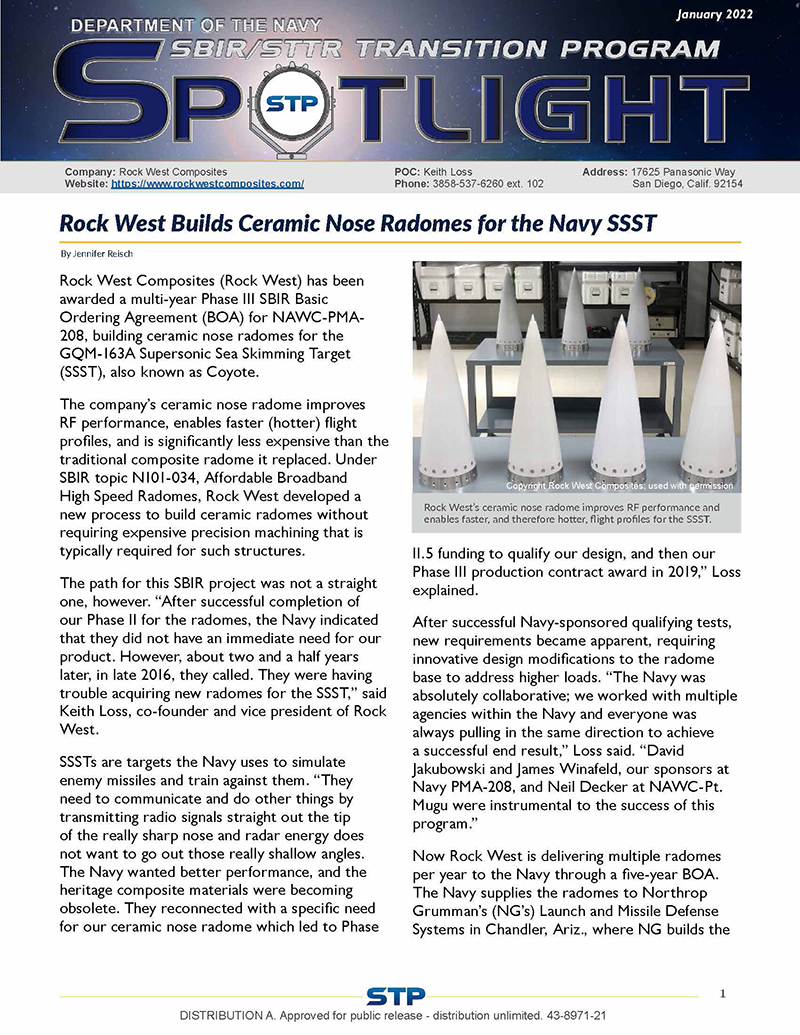
We are excited to announce that Rock West Composites (RWC) has been awarded a Top Workplaces 2021 honor by San Diego Union Tribune Top Workplaces. The list is based solely on employee feedback gathered through a third-party survey and administered by employee engagement technology partner Energage LLC. The anonymous survey uniquely measures 15 culture drivers that are critical to the success of any organization including alignment, execution, and connection, just to name a few.
Rock West’s San Diego headquarters was awarded under the small business category. This honor is specific to our San Diego facility, but our Salt Lake City facility was also recognized with this award just two weeks ago. Thanks to our employees for these honors!
At the top of our list of brand values is that “our workplace should be fun, creative and empowering for employees,” and we strive to put this value into action. We are so glad that our efforts to create an engaging and fulfilling workplace across the organization are resonating with our team.

The San Diego Union Tribune, Sunday November 21, 2021, Top Workplaces Special Section
Our mission is to make the magic of composite technologies accessible to the world, and we can’t do that without the best people. Are you interested in a career with us? Everyone at every level of the business is eligible for the annual All Team Bonus Award. Training and career growth is a key metric in employee reviews. Management has open-door policies, and our team takes quarterly employee satisfaction surveys to help management guide changes to improve the work culture. Join our Team!
We are excited to announce that Rock West Composites (RWC) has been awarded a Top Workplaces 2021 honor by Salt Lake Tribune Top Workplaces. The list is based solely on employee feedback gathered through a third-party survey and administered by employee engagement technology partner Energage LLC. The anonymous survey uniquely measures 15 culture drivers that are critical to the success of any organization: including alignment, execution, and connection, just to name a few.
While this honor is specific to our Salt Lake City facility, RWC’s team strives to provide a great place for people to work, learn and grow. At the top of our list of brand values is that “our workplace should be fun, creative and empowering for employees.” In addition to management’s open-door policies, our team takes quarterly employee satisfaction surveys to help management guide changes to improve the work culture. Everyone at every level of the business is eligible for the annual All Team Bonus Award. Training and career growth is a key metric in employee reviews. And the company has one of the best benefits packages around.
Even surveys on benefits help to guide improvements for the packages offered to staff. “While Rock West offers an outstanding benefits package for a business of this size, we’ve made changes to our benefits based on employee feedback. We increased company contributions to insurance coverage for dependents and increased paid time off for newer employees. I love being able to address employee concerns directly by getting real data and taking action accordingly,” says Grace Hernandez, Director of Human Resources.

Rylan Hayes, Stock Product Manager (left) and Dave Erickson, Co-Founder/VP General Manager (right) receive the award.
Our mission is to make the magic of composite technologies accessible to the world, and we can’t do that without the best people. Are you interested in joining our team? Check out our Careers page to learn more.
Are you interested in doing a project with composites but not sure exactly where to start? Perhaps you know what you want to do but just want a kit to get you going? We’ve got the solution!
Get started on your own project with our new Wet Layup Starter Kits. We have two sizes available depending on the size of your project and your level of experience. We recommend everyone have a well-ventilated workspace, a work surface that is protected from damage or will not be harmed by potential epoxy resin spills, and as always safety glasses (not included).
The small wet layup kit includes carbon fiber fabric, fiberglass cloth, resin and harder (packets), hi-temp release wax, gloves, cups, stir-sticks, brushes, and a naca duck mold for your first project, but you can use another mold if you have one. The amount of fabric and resin is enough for a small part or two).
If you have a more ambitious project in mind, the large wet layup kit includes greater quantities of carbon fiber fabric, fiberglass cloth, resin and harder (full containers), hi-temp release wax, gloves, cups, stir-sticks, brushes, and a wedge to help you remove your part from a larger mold. The amount of fabric and resin is enough for a a few larger parts.
We made some videos to help you get a visual of what is included with the orders and also give you project ideas. So take a look and order your wet layup starter kits today!
In order to attend you must register with CreatorsWanted – links below
Are you interested in a career in manufacturing? Interested in manufacturing composites but not sure where to start? Perhaps experienced in manufacturing and are considering a career move? We’ve got something great for you.
Rock West Composites is excited to participate in this years MFG Day, a national event organized by The Manufacturing Institute. It’s designed to get the workforce, young and old alike, excited about manufacturing and encourage careers in modern manufacturing. Visit CreatorsWanted.org to learn more!
“Launched annually on the first Friday in October with events that continue throughout the month, MFG Day helps show the reality of modern manufacturing careers by encouraging thousands of companies and educational institutions around the nation to open their doors to students, parents, teachers and community leaders. MFG Day empowers manufacturers to come together to address their collective challenges so they can help their communities and future generations thrive.”
We are hosting events at our facilities in San Diego and Salt Lake City. Tours will take place on Friday, October 1 at 10AM local time.
In order to attend you must register with CreatorsWanted. Follow these links to register for your location!
On July 20, 2021, Blue Origin’s New Shepard program successfully launched into space and returned four commercial astronauts. It was New Shepard’s first human flight; and with more crewed flights planned for this year and 2022, commercial space travel is just beginning.
In August following this exciting achievement, we received a visit from representatives of Blue Origin at our San Diego Headquarters. For a few years now, we have been a quiet contributor to this commercial space effort.
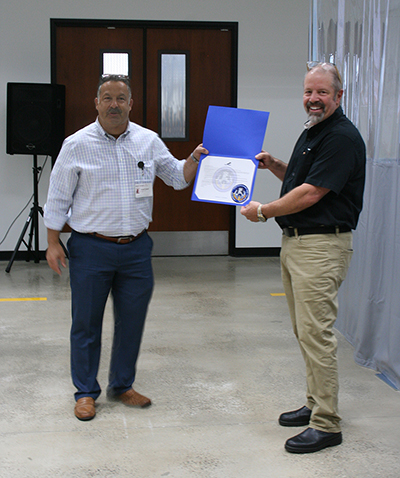
As part of their visit, we were recognized as a key supplier to Blue Origin’s New Shepard program. Our team was presented with a certificate and flight patch to honor our contribution to the program. Also, our team received a banner we have since hung in one of our manufacturing bays. Many of our team have had experience in space programs over the years, but commercial space is a new and thrilling endeavor. We were all very proud to be recognized as a supplier to Blue Origin’s historic first human flight.

On another fun note, we received postcards for our families as part of Blue Origin’s Club for the Future, a non-profit organization that encourages younger generations to “pursue careers in STEM and to help invent the future of life in space.” We plan on sending our kids’ postcards to space on future missions. Won’t you join us? Find out how!
FOR IMMEDIATE RELEASE
Rock West Composites Celebrates the Opening of Its New San Diego Corporate Headquarters with a Ribbon-Cutting Ceremony
Rock West Composites celebrated the opening of its new corporate headquarters in San Diego, California by having a ribbon-cutting ceremony last week. The company is expanding to meet increased demand for its large-scale custom composites manufacturing.
San Diego, CA (PRWEB) August 9, 2020 – Rock West Composites (RWC) celebrated the opening of its new corporate headquarters with a gathering of staff and guests. Following established COVID safety precautions, the event included a presentation on the status of the business, a ribbon-cutting ceremony, and a gathering with lunch after the event. Pending the outcome of pandemic restrictions, the company plans to host a formal grand opening ceremony at the end of the year that ties into its 15th anniversary.
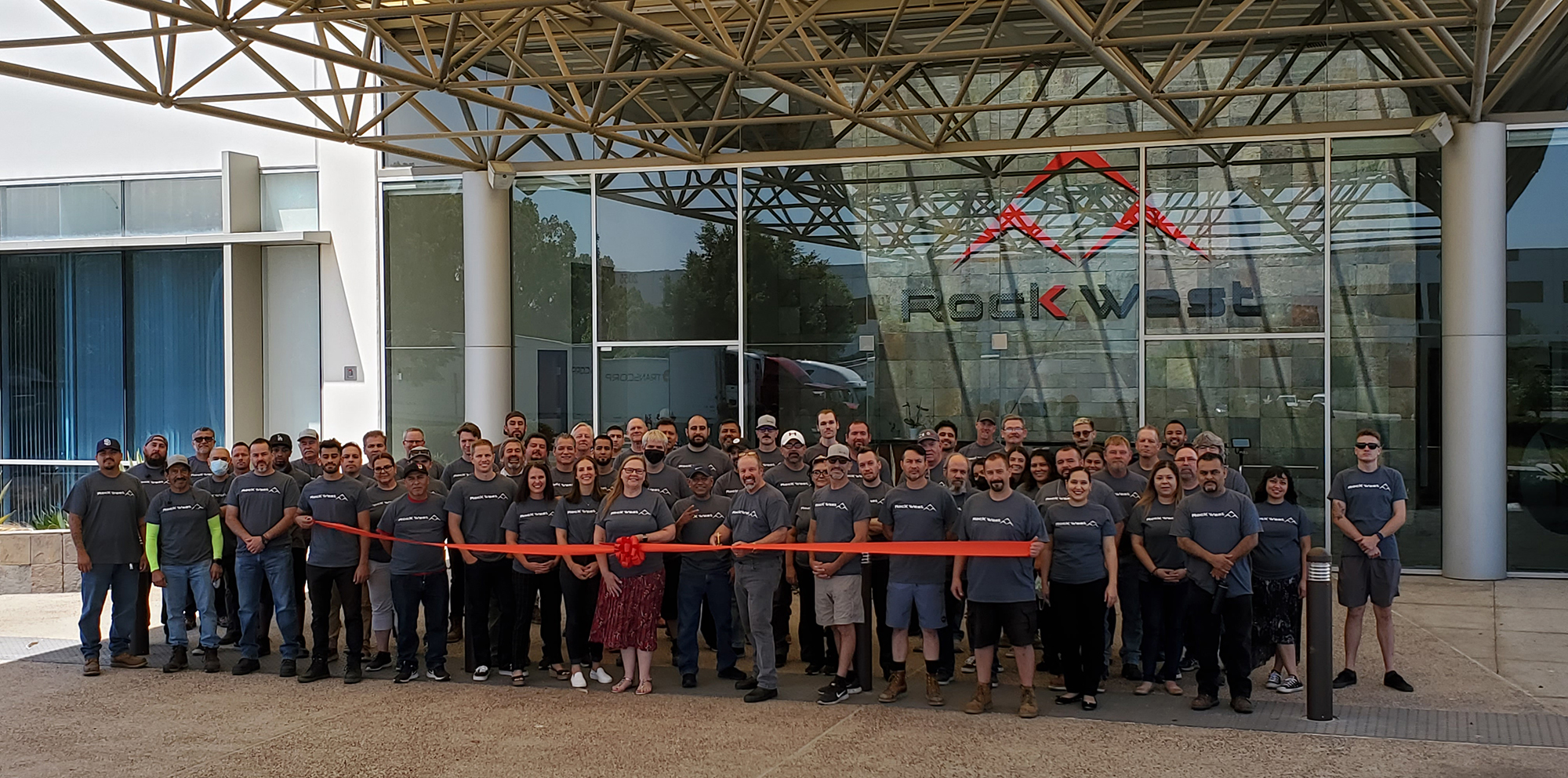
“Our new headquarters positions the company for continued significant growth,” said Jim Gormican, CEO of Rock West Composites. “This investment supports our core mission to improve services for our customers. With capacity for larger programs and new capital equipment, we can offer more options to ensure our customers get the highest quality composite products for the best value.”
Built on an adaptive infrastructure designed for rapid refitting, this new facility offers state-of-the-art flexible manufacturing. With a footprint more than four times larger than the previous site, the plant includes multiple clean room areas and allows for the addition of larger capital equipment including a new 6ft diameter by 14ft autoclave. This building also houses the corporate offices, engineering, product development and manufacturing centered around prototyping and production.
In addition to this new facility, RWC has manufacturing facilities in Salt Lake City, UT and Tijuana, Mexico.
To visit Rock West Composites’ website, go to www.rockwestcomposites.com.
About Rock West Composites
Rock West Composites provides composite products for a variety of markets and customers. Specializing in carbon fiber composites, RWC offers off-the-shelf products, including tubes, plates and complementary materials, as well as custom products and solutions, such as product development, engineering services, prototyping, and manufacturing. Manufacturing processes include filament winding, roll wrap, resin infusion, bladder molding, modified closed mold, and compression molding processes. Rock West Composites has facilities in San Diego, California; Salt Lake City, Utah; and Baja California, Mexico. https://www.rockwestcomposites.com/
#######
For more information:
Julia Willis, Marketing Director
Phone: 858-537-6260
Email: marketing@1rockwest.com
Website: www.rockwestcomposites.com
We are excited to announce that we have initiated procurement of a 14ft x 6ft diameter autoclave that will be delivered in late August and operational mid-September. Along with the autoclave, we have also ordered a full-size precision flat curing table and supplemental equipment to support its operation.
RWC has historically focused on low-cost curing methods, but this acquisition will position the business to service more high-performance industries. This strategic capability means we can service all of a customer’s composite manufacturing needs, allowing us to pair customers and their hardware with the right composite manufacturing process and equipment for the most cost-effective solution. We also have put the engineering horsepower in place to execute on high-performance programs.
The autoclave will be used to cure composite structures at up to 450°F and 225psi using pressurized nitrogen and integrated vacuum. The autoclave has programmable automated control over pressure, temperature, and vacuum and has a tight thermal gradient to meet aerospace-grade customer specifications. The temperature and pressure range allows for high-performance curing of epoxies, cyanate esters, and bismaleimides (BMIs). Complementing the autoclave is a large cure table at 6ft x 14ft with a 0.015”global flatness and steel cure surface. Download our data sheet.
If you have hardware under development that needs to meet exceptional performance standards, contact us now! custom@rockwestcomposites.com.*Photo courtesy of Bondtech
We have been in a flurry of activity in San Diego as we refit our new headquarters to enhance our business operations, including some exciting expansion.
Knocking Down Walls
Our building didn’t have doors big enough for our manufacturing equipment to come into the building. Nor were they big enough to get out some of the larger hardware we’ve built for our customers. So we had to create some new ones! A 16’ x 16’ opening allowed us to move into the warehouse and will help us get large hardware to our customers. Some new 12’ x 12’ doors compliment building access.
The Big Booths
Our new spray booth encapsulates 20’ x 27’ x 10’, shown below on the left. Directly next to it in the center is our expanded grinding booth at 25’ x 23’ x 10 ft. To the right, some of our team is in the spray booth to give a better idea of scale. All of this means we can work on larger hardware more efficiently.
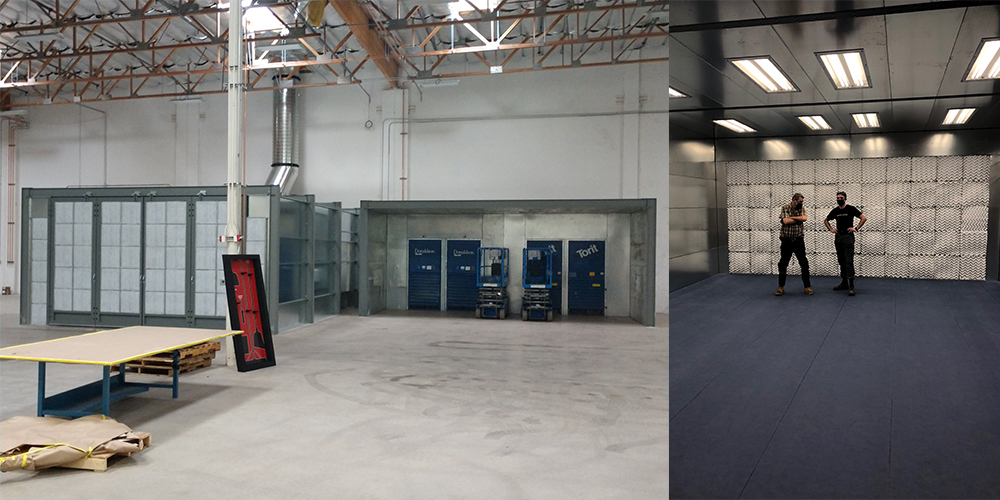
More Flexible, Robust and Cleaner Operations
All the columns in the warehouse have been outfitted with electrical drops and vacuum lines, enabling rapid shifts in work cells to accommodate changing program requirements. The building also has built in redundancies to protect against power outages and equipment failure.
We not only have more levels of clean room capability to accommodate program requirements in the building, but our concrete floors are polished to help maintain cleanliness throughout the facility. Our machine shop is in a climate-controlled room with wet and dry areas segregated. Our new dust collection system helps reduce contaminants to a minimum. And to keep the noise of all the vacuum and compressions systems quieter for our staff, they are located outside the building in their own housing. We have dedicated people to keeping the shop clean and cleaning stations that comply with our 5S program.

Keeping Our Staff Growing Too
We’ve got a new training room in the works. We know that a trained workforce is critical to our success and having a dedicated space to engage in this activity will help us work towards goals. Our plan to get this room wired for the connectivity we need is in process.

We have built out multiple conference rooms and office areas because we’ve been growing fast over the years and need room for growth. We are excited to see how fast we can grow our business to fill this building to capacity!
Certain tubes we carry are always quick to go out the door, but as the seasons change, so do the most popular orders. Here is a rundown of our ten most popular tubes for the past month. They include a variety of sizes, styles, features, and price points. You may find that you need some of these yourself!
Tiny Pultruded Carbon Fiber Tubes
Two of our most popular items are very small pultruded unidirectional carbon fiber tubes. These are great choices for those seeking strength, rigidity and affordability. For 78” tubes with prices starting at either $7 for the smaller ID or less than $15 for the larger, they become more affordable the more you buy. But be aware that they may not be appropriate choices if crush resistance or torque transfer is needed.
0.079 X 0.118 X 78″ Pultruded Carbon Fiber Tube: Learn More
0.118 X 0.197 X 78″ Pultruded Carbon Fiber Tube: Learn More

Filament Wound Carbon Fiber Tubes
Three more of our most popular carbon fiber tubes are made with the filament winding process. The very long continuous fibers add to strength and stiffness of these tubes, which are excellent for torsion applications. Our customers can get very long tubes with a unique aesthetic; and since you can buy by the foot, you get as much as you need. Of these popular selections, one is unsanded and two are sanded.
0.75 X 1.05 X 12″+ Filament Wound Carbon Fiber Tube Unsanded: Learn More
.1.840 X 2.00 X 12″+ Filament Wound Carbon Fiber Tube Sanded: Learn More
1.00 X 1.125 X 12″+ Filament Wound Carbon Fiber Tube Sanded: Learn More
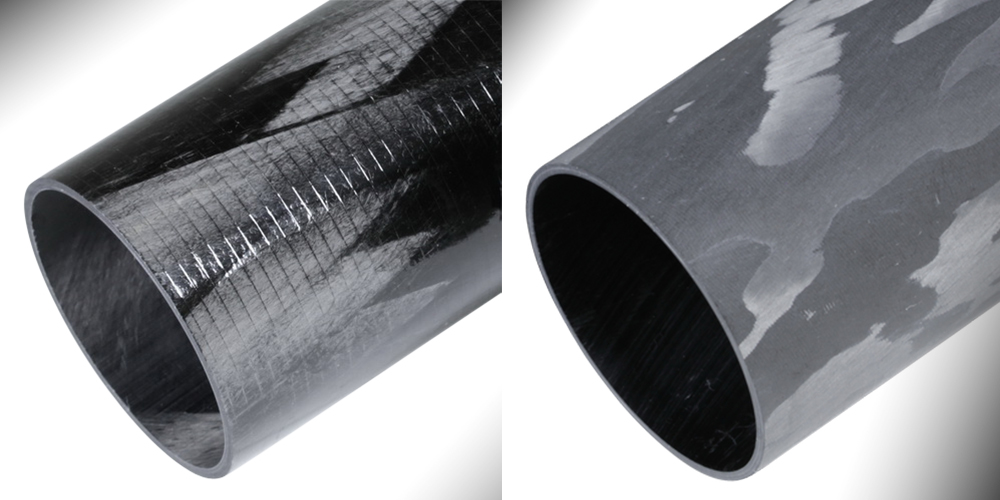
Hexagonal Shaped Tube
Shaped carbon fiber tubing offers a lot of interesting benefits and is easy to machine. Our most popular shaped cross-section or profile right now is hexagonal and offers fabricators and designers alike the ease of affixing motors, accessories and machined features since there is always a flat surface with which to work.
1.00 X 1.110 X 66″ Hexagonal Fabric Carbon Fiber Tubing: Learn More

Spread Tow Fabric Tubing
Our checkerboard look is a winner! These tubes have higher stiffness and strength over standard modulus carbon fiber while offering a unique aesthetic. They are built with a strong core of unidirectional material at different angles and a sleek fabric surface layer. People like the style and the properties of this popular tubing option.
1.375 X 1.525 X 96″ Spread Tow Intermediate Modulus Carbon Tubing: Learn More

Fabric Wrapped Tubes
Standard fabric wrapped carbon fiber tubes are always a good choice. These three different popular options are different sizes but are all covered in a 2×2 twill pattern with a gloss finish. One is our in-house premium tubing for those with rigid engineering requirements and the other two are more economical options.
Our Rock West Composites tubes are manufactured in AS9100 certified facilities with guaranteed layups and quality materials. The core of this tube is comprised of multi-directional “uni” plies that make these tubes ideal for bending and compression applications. The fabric finish provides an ideal machining surface that will prevent fiber breakout better than unidirectional material. Looking for a 1” tube for your demanding application? Here it is!
0.938 X 1.008 X 60″ RWC Carbon Fiber Fabric Tubing: Learn More

To meet market demand, Rock West Composites also sells economy tubes and plates. These products provide a lower bar for entry for customers looking to incorporate carbon fiber and other composites into their projects. This line of tubing is sourced internationally and is best utilized in applications that do not have engineering critical features. But they do have the convenience of shipping from our Utah operation for expedient delivery. These are two best sellers.
0.25 X 0.378 X 60″ Economy Carbon Fiber Fabric Tubing: Learn More
0.625 X 0.757 X 72″ Economy Carbon Fiber Fabric Tubing: Learn More

With thousands of tubes to choose from and custom options available too, we hope that this list may help you narrow down your choices. And if you are still having trouble deciding, our customer service and engineering support team are here and available to help.
FOR IMMEDIATE RELEASE
Rock West Composites Moves Into Its New San Diego Headquarters
Rock West Composites moved this month to its new corporate headquarters, a 107,000 sq. ft. facility in San Diego, California. The company is expanding to accommodate new staff, add manufacturing space, grow capability for large-scale composites manufacturing, and meet the needs of its expanding business.
San Diego, CA (PRWEB) February 9, 2021 – Rock West Composites (RWC) has moved this month into its new corporate headquarters at 7625 Panasonic Way in San Diego, California, a facility more than three times larger than its previous headquarters. While the company retains its locations in Salt Lake City, UT and Tijuana, Mexico, RWC’s former San Diego location on Precision Park Lane will be vacated in favor of the new building.
With 107,000 sq. ft. of total space, there is 20,000 sq. ft. of office space, 80,000 sq. ft. of manufacturing space, and an additional 7,000 sq. ft. for general warehouse use. The entire space is not fully utilized, and the company is positioned for significant growth. This building will house the corporate offices, engineering, product development, and manufacturing centered around prototyping and production.
The plant will be able to accommodate large scale composites production and significant new capital equipment with the intention of growing the company’s already expansive capabilities to meet the space requirements of the expanding business. Its location is also close to the border with easy access to the company’s Tijuana plant, which specializes in high-volume production. The new facility has an adaptive infrastructure that allows for rapid refitting of manufacturing areas to accommodate new program requirements. There are clean room areas with varying levels of classification to accommodate customer needs.
“We are excited to start the new year in our new location,” said Jim Gormican, CEO of Rock West Composites. “As our company continues to grow, we need to be responsive to our customers’ needs and this new building with adaptive infrastructure will enable us to be efficient and cost effective in all our program activities.”
To visit Rock West Composites’ website, go to www.rockwestcomposites.com.
About Rock West Composites
Rock West Composites provides composite products for a variety of markets and customers. Specializing in carbon fiber composites, RWC offers in-stock products, including tubes, plates and complementary materials, as well as custom products and solutions, such as product development, engineering services, prototyping, and manufacturing. Manufacturing processes include filament winding, roll wrap, resin infusion, bladder molding, modified closed mold, and compression molding processes. Rock West Composites has facilities in San Diego, California; Salt Lake City, Utah; and Baja California, Mexico. https://www.rockwestcomposites.com/
#######
For more information:
Julia Willis, Marketing Director
Phone: 858-537-6260
Email: marketing@1rockwest.com
Website: www.rockwestcomposites.com

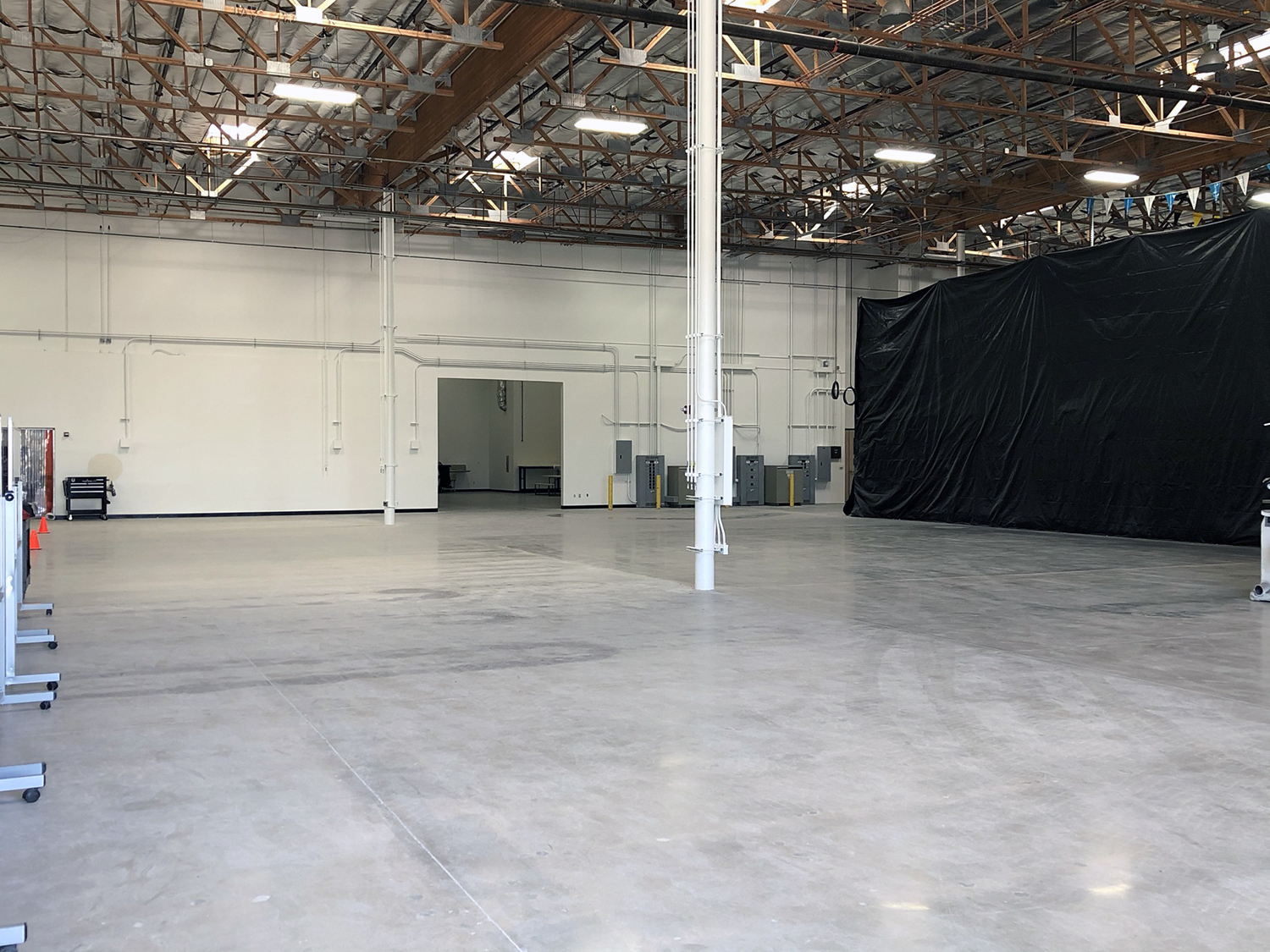

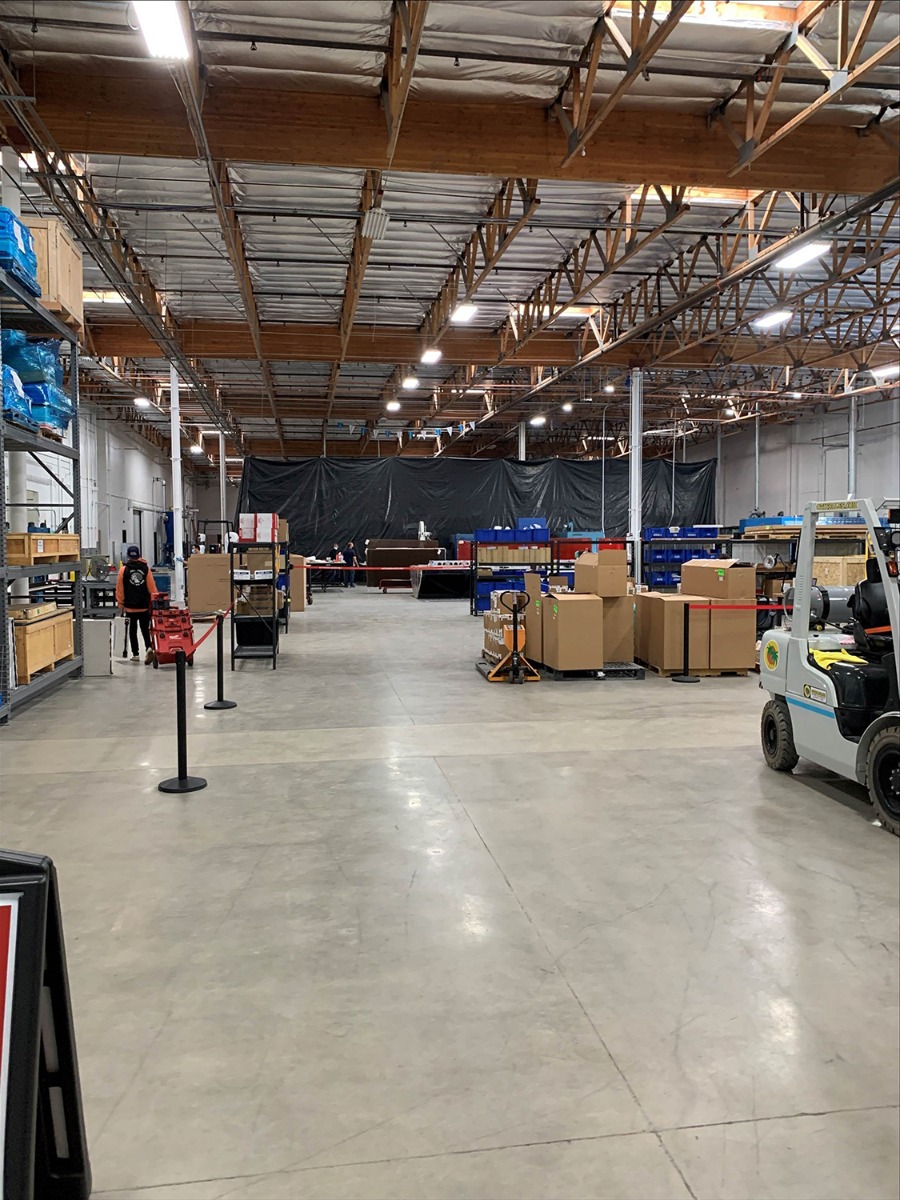
FOR IMMEDIATE RELEASE
Rock West Composites Adds “Build Your Own Tube” Feature to Its Online Offering This month Rock West Composites has added a feature on its website allowing customers to define their own filament wound tube specifications, enabling a build-to-order ecommerce transaction with immediate check out. Currently 75 mandrels and two materials are available with three distinct performance characteristics and nearly infinite wall thickness options.
Salt Lake City, UT (PRWEB) February 8, 2021 – This month Rock West Composites (RWC) announces the addition of a Build Your Own Tube feature to its website. The tool allows the customer to define specific attributes they need for their custom tube, provides a range of pricing based on the volume of the order, and then allows for immediate check out. It is fast and easy for customers who know exactly what they need but can’t find an off-the-shelf solution.
The customer can define the interior diameter, wall thickness, tube length, material, and key performance characteristic of their custom tube order. Current materials available include intermediate modulus carbon fiber and fiberglass (E-glass). Performance characteristics include bending stiffness, torque, and internal pressure. Tubes are manufactured using the filament winding process. Checkout is processed as soon as the customer is ready, and shipping is handled separately. In addition to the 450 base options currently available, tubes can be customized even further by specifying almost any wall thickness. RWC has plans to further expand the selection. This is only a small fraction of the off-the-self and customization options that RWC can offer customers.
“Our customers have asked for the ability to get fast pricing for custom work and easy checkout via our website, and this is answering that request,” said Dave Erickson, General Manager of the Salt Lake City facility. “Ecommerce innovation is how we grow our business and help our customers succeed.” For more information on Rock West Composites’ new offering, visit https://www.rockwestcomposites.com/byot-fw.html.
About Rock West Composites
Rock West Composites provides composite products for variety of markets and customers. Specializing in carbon fiber composites, RWC offers in-stock products, including tubes, plates and complementary materials, as well as custom products and solutions, such as product development, engineering services, prototyping, and manufacturing. Manufactured processes include filament winding, roll wrap, resin infusion, bladder molding, and modified closed mold processes. Rock West Composites has facilities in San Diego, California; Salt Lake City, Utah; and Tijuana, Mexico. www.rockwestcomposites.com
#######
For more information:
Julia Willis, Marketing Director
Phone: 858-537-6260
Email: marketing@1rockwest.com
Website: www.rockwestcomposites.com
Rock West has one of the most extensive offerings of prepreg on the market – over 25 material options. Even better, you can purchase by the linear yard – no minimum quantities! Of course, the more you buy, the better the price so feel free to pick up a whole roll.
Since prepregs begin to cure once out of the freezer, our materials can be shipped with dry ice to protect your purchase if you choose it. In fact, we recommend it. If you need further verification that the material wasn’t compromised during the shipping process, we also offer a temperature recorder. If you require certifications, we have supplier-provided Material Certifications and RWC-provided Certificates of Conformance.
We highly recommend expedited shipping, and while we can ship over the weekend, we do not recommend it due to the risk of missed delivery. During the order process you can ask us to hold the shipment until the following business day just to be sure if arrives on a work day.
If you aren’t sure about the best material for your project, we offer sample packs so you can get a variety of 6″ x 6″ swatches. Our materials include:
- Standard Modulus Carbon Fiber Unidirectional Prepregs
- Standard Modulus Carbon Fiber Woven Prepregs
- Intermediate Modulus Carbon Fiber Prepregs
- High Modulus Carbon Fiber Prepregs
- Fiberglass Prepregs (Uni & Fabric)
- Other Prepregs & Film Adhesives
So take advantage of all the best prepreg offerings on the market, for your prototypes and other small projects. Buying from RWC is more cost effective due to minimum buys and shelf life. And since we turn over the prepreg at a regular pace for most materials, our materials are current and almost always in stock.
*Please keep in mind that all prepreg sales are final, and we do not refund or accept returns on this product. We do not offer outlive tracking.
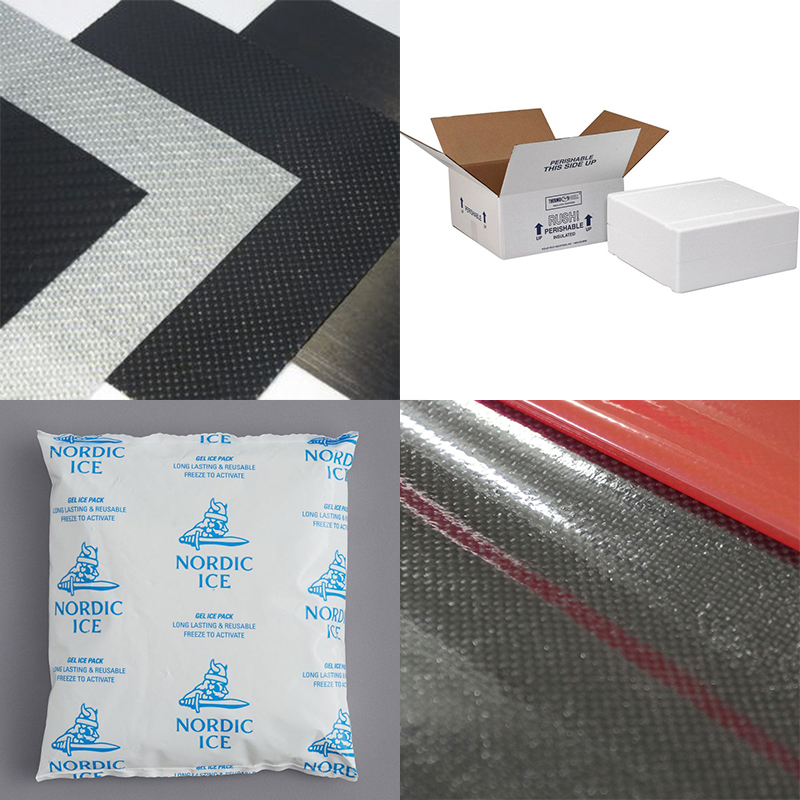

You are about to drop several hundred dollars on a new cell phone. Your significant other suggests that you protect your investment with a carbon fiber case. But you remember reading an article suggesting that carbon fiber cases mess with cell phone reception. Now you’re stuck.
Is it true? Does carbon fiber really interfere with cell phone signals? If it does, you might be trading a bit of extra protection for decent signal strength. If not, there is no reason to avoid a carbon fiber case that could save your phone at some point.
Unfortunately, there is no clear-cut answer. Some people insist that carbon fiber is bad for cell phones based on principles developed by scientist Michael Faraday back in the 1800s. Others insist they have used carbon fiber cases for years with no adverse effects. So who’s right? Perhaps both camps are.
Carbon Fiber and the Faraday Cage
Those who insist carbon fiber is not a good material for phone cases base their assumptions on what is known as the Faraday cage. Named after the previously mentioned scientist, a Faraday cage is an enclosure capable of blocking electromagnetic signals. It does so by utilizing a conductive material to distributes signals inside so that they cancel similar signals outside.
Faraday’s principles dictate that electromagnetic fields can neither penetrate nor escape a Faraday cage. If we apply the principles to cell phone signals, the problem becomes clear.
Carbon fiber is a conductive material. As the thinking goes, it prevents the receiver in your cell phone from communicating with a local cell phone tower. The phone case essentially works as a tiny Faraday cage. But if that were true, a carbon fiber case should make a cell phone completely inoperable. Right? Not necessarily.
Not Full Enclosures
Those who swear by carbon fiber phone cases insist that Faraday’s principles do not apply because a phone case is not a full enclosure. In other words, the only way a Faraday cage works is by completely surrounding the material it is designed to protect. A phone case doesn’t do that.
At best, a phone case protects the backs and sides of a cell phone. It does not cover the front. It couldn’t, or the phone would be unusable. This still leaves significant surface area through which cell phone signals can pass. On top of that, cell phone cases have built-in access points for chargers, headphones, etc. Said access points are also places for signal leakage.
A Good Design Works
It is possible that a poorly designed carbon fiber cell phone case could reduce signal strength for a poorly designed phone. But it is not likely that a carbon fiber case would render a phone unusable in a major metropolitan area, where signal strength is pretty strong.
On top of that, a good design solves any potential problems. For example, a phone manufacturer can place its antenna closer to the front of the phone than the rear. Just by changing antenna placement, one can overcome any interference a carbon fiber case would cause.
Hobbyists who fly model planes and helicopters do this sort of thing all the time. If they find that carbon fiber parts are interfering with radio reception, they simply change the location of the antenna and the problem is solved. Carbon fiber drones work just fine because designers make sure antennas are not blocked by carbon fiber parts.
In theory, a carbon fiber case could mess with your cell phone reception. But practically speaking, it rarely happens. So go ahead and buy that carbon fiber case with confidence.
Virgin Hyperloop made history in early November 2020 when it sent two volunteers barreling down its hyperloop track at 107 miles per hour. The manned test was the first such test of a hyperloop. The company claimed the test was a huge success, but there is still plenty of work to be done before they, or any of their competitors, start carrying cargo and passengers on a regular schedule.
Meanwhile, the hyperloop team at Technical University of Munich (TU Munich) is hard at work building a full-scale prototype of their latest hyperloop system. The team has regularly participated in SpaceX hyperloop competitions in past years, but they have decided to take advantage of the 2020 competition being canceled to move their project to the next level.
What do we find most interesting about what Version Hyperloop and TU Munich are doing? Their use of composites. Plenty of questions surround the viability of hyperloop technology as the foundation of next gen high-speed transportation. But if it is going to succeed, carbon fiber is going to play a big role.
An Education in Carbon Fiber
The TU Munich team spent many years participating in the SpaceX hyperloop competition with one thing in mind: speed. The goal of the teams is to create a tube and capsule combination that achieves the greatest possible speed while maintaining safety. To go fast – even in a vacuum tube – weight has to be managed.
A CompositesWorld piece from associate editor Hannah Mason describes some of what the TU Munich has gone through in recent years. Mason explained that the team did a lot more than design and build hyperloop pods. They actually had to learn how to use carbon fiber properly.
For example, the team learned that there is very little weight savings in carbon fiber if a given pod’s design doesn’t account for the strengths, weaknesses, and properties of carbon fiber. One of the earlier pods they built weighed in at 11 kg. After analyzing and optimizing it for the next competition, they were able to reduce the weight to 6 kg. All of the weight savings were attributed to “using carbon fiber appropriately.”
Getting It Right the First Time
Another thing the team learned was that it pays to get the design right the first time. Unlike working with aluminum, you cannot make simple adjustments to a carbon fiber part once it is completed. The design engineering has to be rock solid before you start fabrication.
This is not to say that they didn’t build multiple prototypes and adjust their engineering. They did. It is just that they had to go back and fabricate brand-new parts every time an adjustment was necessary. They couldn’t make adjustments by undoing a fastener and sliding a piece of aluminum a little bit further to the left.
Meanwhile, in Nevada
Back in the States, the Virgin Hyperloop team has built a full-scale test track in the Nevada desert. Their recent manned test wasn’t about safety or speed. It was about understanding what it feels like to travel at high speeds in a vacuum tube.
Version Hyperloop uses a ton of carbon fiber in its design, just like TU Munich. Pods are heavy on the carbon fiber to keep their weight down. As for the test track, its design and construction isn’t clear. Could it be one long piece of carbon fiber tubing? It is possible, but not likely.
Whether or not hyperloops ever become reality remains to be seen. But if they do, their construction will be a big boost to our industry. Hyperloops will not be possible without a steady stream of reliable and robust composites.
We are extremely proud at Rock West Composites to carry a complete selection of carbon fiber tubing. Our inventory of tubing products continues to grow as well. Among them is unidirectional carbon fiber tubing, the most popular form of tubing we sell. We consider unidirectional tubing the workhorse of our tubing inventory.
Unidirectional tubing is so named due to the alignment of the carbon fibers. This post will explain this, and more. Suffice it to say that unidirectional tubing is suitable for a wide range of applications – whether straight up or finished with an outer layer of woven fabric. Please do not hesitate to contact us if you are interested in knowing how unidirectional carbon tubing could be implemented in your designs.
Unidirectional vs. Multidirectional
As previously mentioned, ‘unidirectional’ relates to how carbon fibers are aligned. In the case of unidirectional tubing, you can see that all of the fibers on the outside of the tube run in the same direction as do most of the other layers in the tube. They are parallel for all intents and purposes. Contrast this to a multidirectional material.
A multidirectional tube presents the telltale woven appearance. There is good reason for that. When you run fibers in multiple directions, you weave them together to create a fabric. That is the whole point of weaving. The woven appearance is what most people think of when they consider carbon fiber parts.
So why go unidirectional instead of multidirectional? It really depends on how much strength you need and where you need it. Carbon fiber itself is a reinforcing material; it is combined with epoxy resin to create a carbon fiber reinforced polymer (CFRP). Most of the tensile strength a carbon fiber part offers is in relation to fiber alignment.
Strength in the Same Direction
Carbon fiber’s tensile strength tends to run in the same direction as the fibers. Thus, a unidirectional tube is very strong along its length. Its tensile strength is essentially back and forth along the entire length of the tube. By contrast, a multidirectional tube exhibits tensile strength in multiple directions.
An ideal application for unidirectional tubing is bicycle tubing. Bike designers want superior longitudinal rigidity for bike frame components. Depending on the part, they may not need multidirectional strength. However, some bike makers prefer their unidirectional tubing be wrapped in an outer layer of woven fabric. They want the look of the weave for aesthetic purposes and the fabric helps contain fibers if the part does in fact fail.
Adding that outer layer gives them the aesthetic they want. As an added bonus, the layer provides some extra rigidity across the entire surface of the frame.
Unidirectional tubing is ideal for applications involving movement and stress only in back and forth directions. On a grand scale, rocket bodies are good candidates for unidirectional tubing. On a smaller scale, unidirectional tubing is also ideal for model rockets, lacrosse sticks, and so forth.
Increasing Tube Strength
One last thing to know about unidirectional tubing is that strength can be increased in key areas by adding extra layers. Consider an application where two or three tubes meet at a common joint. If that joint is subject to stress from multiple directions, the tubing can be reinforced by a layer or two of woven fabric.
This is one of the benefits of choosing carbon fiber over metal materials. Just by adding additional layers of woven fabric in key locations, fabricators can increase strength while adding very little weight. It is not so easily done with aluminum, steel, or titanium.
Carbon fiber tubing is one of our best-selling products. If you would like to know more about it, please reach out to us at your convenience. Our tubing inventory includes high quality products for DIY and commercial needs.
He initially began this project with Rock West’s release of a new product, carbon fiber chip board, a few years ago. This chip board is known as “forged carbon” or “Damascus carbon,” which is short strands of carbon fiber pressed into a plate.He explains his creation process as, “I just dissembled the old knife and traced the general shape from the original handle pieces, then used sandpaper and hand grinders to finalize the profile. After the shape was finished, I used fine sandpaper to remove the scratches and then used a polishing compound to give it a nice smooth finish. Locating the screw holes was the most challenging part as all three holes need to meet a very tight tolerance.” Amazingly, even after two years have passed, he says the knife remains in great condition.Rock West is always encouraging engineers and DIYers alike to try utilizing composites outside of major projects. There are many simple items that could benefit from a material that is lightweight and strong, like pens, bows, or in this case, a knife.
We sell carbon fiber tubing to DIY hobbyists and commercial users alike. And while we offer to cut tubes to specific lengths, we get the fact that customers sometimes have to cut tubes themselves. This post is intended to give you a starting point for cutting tubing in your own shop.
Please note that machining carbon fiber products does take practice. Whether you are cutting, drilling, sanding, etc. it may take you several attempts to get it right. You might want to practice on scrap pieces before attempting to machine parts that will be used in finished products.
Carbon Reinforced Plastic
The first thing to understand is what carbon fiber tubing actually is. A finished tubing product you purchase from us is essentially a carbon fiber plastic. The plastic component is an epoxy resin that has been cured. Carbon fiber embedded in the plastic provides reinforcement. Why does this matter?
Cutting carbon fiber tubes generates heat. Larger, denser tubes can generate enough heat to reactivate the epoxy resin. The end result is a slight melting of the plastic material that can gum up your saw. The best way to avoid this is to choose the right saw blade. You can also use a machining liquid to keep the saw blade cool.
Choose Your Blade Wisely
Fibers embedded within a piece of carbon tubing are still fibrous in nature. They haven’t been altered by combining them with the epoxy. As such, your choice of saw blades is important. We recommend staying away from a toothed blade. Why? Because fibers can get caught on teeth. This could result in significant delamination which, ultimately, compromises the integrity of the tube. Splintering is also fairly common.
Instead, a diamond coated abrasive cut-off blade is your best bet. A segmented blade will also work, and it will not generate as much heat. Regardless of the blade you choose, pay attention to its wear. The more worn your blade, the less clean your cut.
As you cut, let the blade do the work. Go as slow as necessary to prevent forcing the blade through the material. A slow and steady approach will ensure a clean cut with very little risk of delamination. On the other hand, forcing the blade through could damage the tube to the point of making it unusable.
Secure the Tube Properly
Many a cutting job has gone awry because the fabricator did not properly secure the tube in question. It is important that you limit movement as much as possible. If tubes move even a slight amount, you will not get a clean cut. If they move too much, you risk delamination and burring.
We suggest bracing the tube against a hard edge and holding it in place with a series of clamps. If you are cutting off a small piece, no additional clamps are necessary. However, consider how you secure the tube if you’re cutting a long piece into two even sections. It would be wise to secure and clamp both ends to ensure a clean cut.
Cleaning Up
Even the best fabricators do not get a perfectly clean cut every time. Sometimes you’re left with burrs or an unusually rough edge. Not to worry. You can clean up with medium grit sandpaper using a grinder or spinning the tube on a lathe.
We carry a variety of carbon fiber tubing products in different shapes and sizes. Contact us to learn more about our unidirectional and multidirectional tubes suitable for commercial and home use. We would be happy to explain the benefits of carbon fiber over steel, aluminum, and titanium.
Despite carbon fiber being commercially available for decades, we find that there are plenty of opportunities to sell carbon fiber materials to new customers. These are folks who have never used carbon fiber before. They are just getting started as DIY fabricators or commercial operators looking for alternatives to other materials.
At any rate, carbon fiber brings a lot to the table. Designed properly, it can be stronger and lighter than aluminum, steel, titanium and even wood. For some applications, there simply is no better composite. Yet choosing to use carbon fiber for the first time opens the door to a whole new way of fabricating. Trust us when we say that fabricating with carbon fiber takes some getting used to.
Below is a selection of tips designed for people who have never made a carbon fiber part before. Suffice it to say that it takes time to perfect the art of working with this material. But once you do, you will be able to create all sorts of parts for a variety of applications.
1. Do Your Research
Research is an integral part of fabrication design and implementation. Before you cut that first piece of fabric or mix up at first batch of resin, be sure to do research into exactly which materials to use. For example, carbon fiber comes in many different form factors. We sell dry carbon fiber fabrics, prepreg fabrics, panels, plates, tubes, and more.
There are also different types of epoxy resins. Some resins are suitable for certain types of applications while others are not. You need the right resin based on the part you want to create and how you plan to create it. We can walk you through the details of all the resins we sell.
2. Check the Engineering
Next, you may want to check the engineering of the part in question. By this we mean looking into whether or not your design will actually work. For example, maybe you are planning to fabricate replacement blades for a drone. Doing so may not be as simple as taking an existing blade and using it to make a mold.
There are computer software apps that can help you with engineering problems. You design your part with the app and then choose your carbon fiber materials. It will run the calculations and let you know if your plan is sound. In the absence of software, avail yourself of online materials including videos, how-to guides, etc.
Do not stress about the engineering if you are fabricating a part for which maximum structural integrity isn’t required. A good example would be a carbon fiber spoiler for the back of your car. The spoiler is just for aesthetic purposes, so the engineering isn’t critical.
3. Plan the Fabrication Process
A lot of carbon fiber newbies get into trouble during the actual fabricating process because they began with no plan in place. Take it from us, planning how you are going to fabricate a part can save you a ton of trouble during the process itself.
Most people new to fabrication start with manual layups. They are the easiest to do and capable of producing pretty impressive parts. Fortunately, there are tons of videos online that explain exactly how to do it.
We suggest practicing with fiberglass first. A fiberglass layup will cost less. You can practice making a few parts before you invest in more expensive carbon fiber. Note that we carry fiberglass materials as well. If you would like to know more, do not hesitate to give us a shout.
Carbon fiber is one of the most popular composite materials chosen to replace metals, woods, and weaker plastics. A carbon fiber reinforced polymer offers excellent tensile strength and rigidity at comparably low weight. As with every manufacturing material, there are right and wrong ways to work with carbon fiber.
If you are a seasoned fabricator, much of what you read in this post is probably already familiar to you. But if you are new to the carbon fiber game, the four tips listed here are particularly important. Knowing how to work with carbon fiber is as important as designing the parts you are hoping to build.
1. Handle with Care
Carbon fiber materials are quite strong and durable. Still, they can be damaged with improper handling. We always advise customers to handle their materials with care. For example, carbon fiber fabric should be kept in its original packaging until you are ready to use it. If you don’t use all the material in a single session, put what you do not use back into that original packaging.
The idea here is to ensure the material stays clean. If you allow it to get dirty, fabricating will be more difficult. Along those same lines, keeping dry fabrics and panels in their packaging eliminates the risk of loose fibers flying around. You want to keep loose fibers to a minimum.
2. Practice Proper Storage Techniques
Next up, carbon fiber materials have to be stored in a certain way. Dry materials should never be stored in direct sunlight or where they can be exposed to moisture. Cool, dark storage locations are best for dry materials. If you are working with prepregs, it is important that you follow the storage instructions printed on the packaging.
Prepregs are carbon fiber fabrics that come from the factory already impregnated with epoxy resin. They must be stored in a cold environment to achieve maximum shelf life. Furthermore, they should not be taken out of cold storage until you are actually ready to begin a manual layup. If they sit around and get warm, the resin will begin to activate.
3. Wear Personal Protective Equipment
When you are actually laying up or machining carbon fiber materials, it’s important to wear personal protective equipment. The equipment you need depends on the task you are performing. If doing a manual layup for example, you will need eye protection and nitrile gloves at bare minimum. We recommend a mask as well. Always make sure your work area is well ventilated so that you are not overcome by fumes.
Cutting or machining carbon fiber parts calls for protective eyewear, heavy duty work gloves, and a mask. If you want to prevent loose fibers from getting in your clothing, wear an apron or smock as well.
4. Cleaning up Afterward
You are going to want to clean yourself up after handling carbon fiber materials. We recommend against simply brushing fibers and dusting off your skin as this could cause small pieces to embed themselves. Instead, warm water and soap will wash the debris away rather easily.
In the event you accidentally get epoxy on your skin, do not attempt to peel off. Instead, use a cloth or cotton swap to soak the area in vinegar. The vinegar will soften the resin so it can be washed off. Acetate also works well.
If you ever have questions about how to safely work with your carbon fiber products, do not be afraid to ask one of our team members at the time of purchase. We are here to assist you with all of your carbon fiber fabrication needs.
A nation’s infrastructure is critical to daily life. When things go wrong with roads, bridges, etc., people’s lives are impacted. And as America’s annual summer construction season demonstrates, the impacts often go far beyond mere inconvenience. The question is, can we do anything about it?
As long as there is infrastructure there will be a need for maintenance and repair. However, there are two things we can do to minimize the impacts. First is developing new means of building infrastructure so that it lasts longer and requires less maintenance. Second is finding ways to complete repair projects while minimizing the impact on daily life.
To that end, a Dutch company is on the verge of testing a revolutionary concept that involves installing temporary composite bridges that keep traffic flowing while existing bridges are being repaired or replaced. They have proven their system in concept. Now they are looking for five bridge projects they can use to test in the real world.
A Bridge on Top of the Bridge
The company, known as FiberCore Europe, has more than a decade of experience building fiber-reinforced polymer (FRP) bridges for permanent placement. Over the last 10 years they have installed 1,000 structures. But now they have a different idea. They want to apply what they know about FRP bridges to infrastructure repair.
They have come up with a unique process that builds a temporary composite bridge on top of an existing bridge to create an entirely separate driving surface. Underneath that temporary bridge, construction workers can safely address their maintenance projects. They can replace decks, replace guardrails, and so forth.
Such a system would benefit both commuters and construction companies alike. Commuters would benefit by not having to be detoured or forced to endure traffic delays caused by lane reductions. Traffic would continue moving smoothly on the temporary structure.
Construction companies would benefit in that they could do their work in relative safety. They would not have to worry about the daily risks of sharing a limited amount of space with drivers. In theory, they could get their work done more quickly because they could also be more efficient.
A Revolutionary Idea
When you step back and think about what FiberCore Europe is proposing, you realize just what a revolutionary idea it is. We have never seen this kind of thing before in the US. Whenever we have to repair a bridge, we either reduce lanes or close the structure altogether. The most complex maintenance projects can take years to complete, all the while tying up traffic and making lives miserable.
FiberCore’s idea is simultaneously brilliant and simple. One cannot help but wonder if the person who came up with it used to build similar structures as a child. As kids, we could do all sorts of things with building blocks, Lego, and other construction materials. We could build things in our imaginations that could never be built in real life – at least until now.
Strong, Lightweight, and Reusable
The brilliance of temporary bridges rests in the fact that they are reusable. Bridge structures are constructed of prefabricated components that are delivered to the site and assembled. When the project is complete, you disassemble the bridge and haul the parts away. They are taken to storage or transported directly to the next job site.
As for using composites, regular readers of our blog know the routine. Composite materials are both strong and lightweight. They are better for infrastructure than steel, aluminum, and concrete (though concrete technically is a composite). So what’s not to love about the FiberCore solution?
If you follow our blog, you know that cost has been the one thing preventing carmakers from going all-in on carbon fiber. They simply cannot justify raising the price of consumer vehicles to accommodate more expensive carbon fiber parts. However, there may be a solution on the horizon. Nissan claims to have developed a fabrication process that cuts the cost of automotive carbon fiber significantly.
Car Scoops published an article about Nissan’s announcement in early September 2020. The article offered very few details as to how the fabrication process actually works. From what we can tell, Nissan seems to be working with a process known as compression resin transfer molding. It is fairly new to our industry.
Why Carbon Fiber Is So Expensive
Carbon fiber is stronger and lighter than both aluminum and steel. However, it is also more expensive to produce. The extra expense is incurred in both the production and fabrication stages. Allow us a brief moment to explain.
Raw Carbon Fibers
Before you can make carbon fiber fabric, filament, etc., you have to produce the fibers themselves. This is no easy task. Manufacturers start with some sort of precursor – usually polyacrylonitrile (PAN). They process PAN using high heat, pressure, and a number of chemicals for the purposes of burning away unwanted material to gain access to its carbon molecules.
During the process, carbon molecules are forced to align end-to-end. This creates the fibers that are then spun to make carbon fiber tow. The tow then becomes filament, thread, and fabric.
As you might imagine, it takes a tremendous amount of energy to create first-stage carbon fibers. So long before you even think about fabricating car parts, you have to consider the cost of the raw materials. And they are not cheap.
Carbon Fiber Fabrication
Carbon fiber is also expensive when it comes to fabrication. Until recently, automation was unheard of for most carbon fiber parts. Manual processes were used to fabricate them. With manual processes come high labor costs. On the other hand, automated processes for fabricating with aluminum and steel were mastered a long time ago.
The Nissan Plan
If we understand the Car Scoops article correctly, Nissan does not plan to manufacture its own raw carbon fibers. Rather, their plan only calls for a new way of fabricating parts using carbon fiber fabrics sourced from other vendors.
Their system appears to be a die-based system in which carbon fiber fabric is placed across a lower die in the shape of the desired part. An upper die is lowered to create pressure, leaving just enough space between itself and the fabric. Epoxy resin is then injected into that space in order to saturate the fabric. Even pressure then ensures that the resin is fully distributed throughout.
Nissan engineers say they are able to visualize resin flow through the assembly with an in-die temperature sensor. They also use a transparent die that enables them to clearly see what is going on. They believe their system is capable of consistently producing parts in less time.
Automating the Process
Car Scoops seems to think that financial problems at Nissan will prevent them from utilizing the system in the short term for their most affordable cars. Like most other auto industry forays into the carbon fiber space, it will be reserved for high-end Nissan models catering to consumers willing to spend.
However, if they can automate the process well enough to bring down costs significantly, they could start increasing the amount of carbon fiber they use in affordably priced cars. Will they actually do so? Time will tell.
Image Source: Nissan
Carbon fiber and F1 racing have been synonymous for years. In fact, some of the greatest developments in carbon fiber technology have resulted from the industry’s partnership with auto racing. So it’s no surprise when F1 teams push the envelope to come up with new composites and better manufacturing processes.
McLaren has done just that by teaming up with Switzerland’s Bcomp to design a brand-new seat featuring a flax fiber composite. The seat offers the same strength and stiffness as the older carbon fiber seat on which it was based. But being made with natural fibers, its emissions footprint is 75% lower.
High Performance with Natural Fibers
A Composites Manufacturing magazine article from Kimberly Hoodin offers all of the juicy details about McLaren’s new seat. Needless to say, it is a high performance product made with cutting-edge materials. Hoodin explains that Bcomp’s design features two different types of trademarked materials woven from flax fibers.
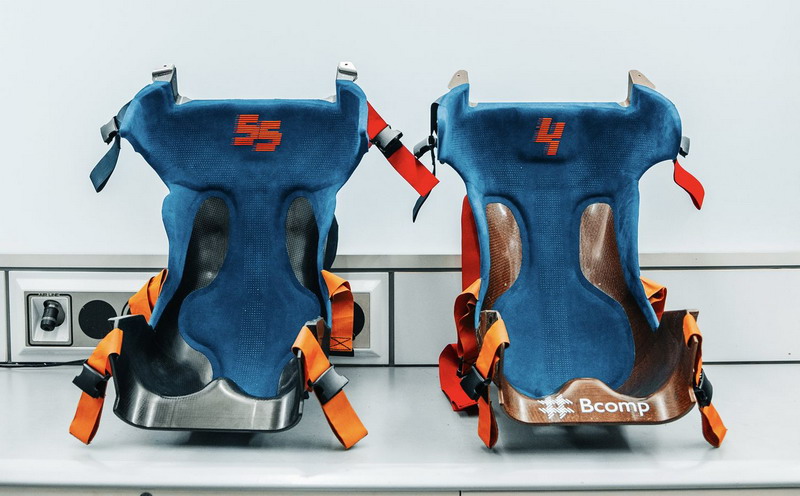
Bcomp essentially designed a sandwich panel with a grid structure on one side and a fiber fabric on the other. The two surfaces are bonded together to create a single piece that matches traditional carbon fiber’s performance. The new seat is just as strong but with some extra advantages.
According to Hoodin, flax fibers bring improved vibration dampening as well as better compression, torsion, and strength to the table. It sounds like a perfect mix for an F1 car. But that’s not all. Flax fibers have helped McLaren and Bcomp build a more sustainable seat.
Less Energy and Biodegradable
Our industry has been looking at flax fibers for some time due to their environmental benefits. In fact, here at Rock West Composites, we sell natural fiber composite materials nearly identical to those chosen for McLaren’s new seat. As far as we know, we did not supply Bcomp with the fabrics they used.
At any rate, one of the things our industry most appreciates about flax fibers is that they require considerably less energy to work with. Unlike the energy-intense process required to manufacture carbon fibers, flax fibers are produced naturally. They automatically represent energy savings just getting them from their raw form into a workable fabric.
Flax fibers are also biodegradable. And although most resins used to bind the fibers together are not, some developments are under way to make the total composite completely biodegradable. So that even if McLaren were to dispose of a seat at its end of life, it would simply disintegrate over time. But even that is not necessary today. Natural fiber composites can be recycled. They can be ground or chopped into fine base material and reused for other products. It is a win-win all the way around.
The Future of Composites
We are no means prophets or prognosticators, but we can easily envision the future of composites being more focused around natural fiber materials. Carbon fibers are awesome. They have allowed us to do lots of things we could never do with steel or aluminum. But there is always room for improvement.
Natural fiber composites offering the same strength and rigidity open the door to less expensive products suitable for professional and home use. They also introduce new options for recycling that are just too expensive or impractical with carbon fiber.
Recycling is a big thing too. If we can improve the products that come from it, we can bring the cost of composites down considerably. That will allow industries that have thus far found composites cost prohibitive to explore their potential.
We are thrilled to learn what McLaren has done with flax fiber composites. If you would like to learn more about natural fiber products for your designs, reach out to us. We might have just what you’re looking for.
We are always looking for new applications of composite materials like carbon fiber. One application we recently ran across is a new stand-up kayak designed and built by a company run by former Olympic kayaker Eric Jackson. His creation is a state-of-the-art kayak designed for anglers. Needless to say, it is quite impressive.
Jackson’s company gave the world a look at his prototype fishing kayak in June. He hopes the publicity combined with a Kickstarter campaign will get the kayak to full production. We hope he succeeds. In the meantime, we thought it might be helpful to answer the question, “why make a stand-up kayak with carbon fiber?”
Regular blog readers might immediately assume that carbon fiber’s excellent strength-to-weight ratio is the main driving factor here. Strength-to-weight is important, but there is a lot more to it than that. Jackson chose carbon fiber for a number of reasons.
More About Stand-Up Kayaks
Have you ever been kayaking? If so, have you ever been tempted to stand up in your boat? A typical kayak is not designed for that. Standing up in a standard kayak can be quite risky due to the boat’s inherent instability. That said, there are kayaks intentionally designed to accommodate standing.
A stand-up kayak is designed mainly for fishing. You paddle to wherever you want to throw your line in, then either throw down an anchor or just let the boat drift. Meanwhile, you stand up with your pole just as if you were on a larger fishing vessel.
Jackson says that most plastic stand-up kayaks are designed with a rounded hull. They are more stable than standard kayaks, but still not as stable as anglers would like them to be. The rounded hull design requires scupper holes – holes that let water out – because the lack of stability allows water into the boat as the angler moves around.
A Planing Hull Kayak
Being not much of a fan of rounded holes for stand-up kayaks, Jackson went with a planing hull design. A planing hull is flat on the bottom and tapers along its length so that one end is level with the water. This design means more of the hull surface lies flat in the water, providing a lot more stability.
Increased stability reduces the likelihood of water getting into the boat. As a result, Jackson’s design allows for eliminating the scupper holes. So all in all, his design seems to be better. But that still does not explain why he chose carbon fiber.
Simply put, a plastic hull would not be strong enough for Jackson’s design. The only way to strengthen the hull without adding considerable weight was to choose a different material. That material is carbon fiber.
Rigid and Durable
Jackson and his team were able to utilize a carbon fiber reinforced plastic made more rigid with core materials. They came up with a super stiff hull that will not bend and flex like plastic. And even though Jackson says users are more likely to break a carbon fiber kayak than a plastic one, carbon fiber is more easily repaired and will last longer.
The end result is a kayak that Jackson says customers can “keep around for a long time.” The carbon fiber will generally hold up much longer than plastic.
And now you know why a Campaign, Tennessee company decided to make a new stand-up kayak out of carbon fiber. It is a great looking boat. Buyers will pay more for it than a plastic boat, but the stronger and more stable kayak will be well worth the investment.
The composites industry has proven itself more than capable over the last several decades. Companies like Rock West Composites have demonstrated the viability of composites as replacements for more traditional materials like wood, steel, and aluminum. Our big task now is convincing other industries to embrace more composites.
One industry that comes to mind is construction. In particular, residential construction offers a lot of room for composite materials. For example, consider the foundation. A home with a typical basement starts with foundation walls constructed with either poured concrete or cinder block.
Composites World editor-in chief Jeff Sloan wrote on this same topic in early September 2020. He began his post by describing the construction of a new home on the lot next to his. Sloan observed how long it took construction workers to install foundation walls. It wasn’t good.
Too Long a Process
This particular house utilized poured concrete walls rather than cinder blocks. According to Sloan, it took two weeks for the team to erect the forms for the concrete. Then the concrete was poured and allowed to cure. Finally, the team needed two more weeks to remove the forms and pour the floor. All in all, it took a month.
This writer used to be in the construction business as well. Back in my day however, foundations were usually built with cinder blocks. Talk about slow. Where it takes a week to erect poured concrete foundation walls, cinder block construction can take even longer.
Sloan observed, and we agree, that composite foundation walls are much more efficient and cost-effective. And as long as we are going that route, the exterior walls throughout can also be made with composite materials. Here’s the thing: resistance to composites is not a matter of building standards. Composites meet or exceed building codes. There is something else in play here.
Off-Site Construction Methods
Another thing to consider is the fact that composite components can be constructed off-site. Those composite foundation walls are built in factories by teams of workers who can fabricate wall sections surprisingly fast. Moreover, the sections can be custom-built to accommodate different sized walls.
Once constructed, the walls are shipped to the site for installation. Now, here’s the real kicker: an entire home of composite foundation walls can be installed and waterproofed in a matter of hours. Builders can save 2 to 3 weeks by choosing composite walls over poured concrete or cinder block construction.
Resistance to Change
So, if building codes and time are not the issue, what is holding back composites in residential construction? In all likelihood, it is nothing more than resistance to change. We human beings have a tendency to get comfortable with what we know. So comfortable, in fact, that it becomes too uncomfortable to start over with something new.
Imagine a builder who has been in the business for decades. He knows everything there is to know about poured concrete and lumber. He has the building process down to a science. Embracing composite materials would require him to go back to the drawing board. He would have to learn all over again. From his perspective, it is better to stick with what he has always done unless, and until, the market demands something different.
And that is the final lesson here. Residential builders would make the transition to composite materials if the market demand were there. So ultimately, it is up to the buying public. If we start telling builders we want composites instead of concrete and wood, they will give us what we want. We just have to make our voices heard.
Carbon fiber tubing has been a mainstay of our business since Rock West Composites was first established. Likewise, many of our biggest customers in the tubing department are custom bicycle makers. It is with that in mind that we recently expanded our inventory of carbon fiber tubes and bicycle frame elements in support of building better bikes for consumers.
In recent weeks we have tripled our inventory of bicycle frame products, including:
- head and seat tubes
- steerer tubes and seat posts
- top and down tubes
- chain and seat stays
- bottom bracket shells.
Our goal is to be the one-stop destination for bike builders in search of the parts they need to do what they do. In addition to carbon fiber tubes, we also offer resins, bonding agents, fabrics, and prepregs.
Building with Carbon Fiber
As a leader in carbon fiber products, we firmly believe in building handmade bikes on a foundation of carbon fiber tubing. While carbon fiber is more expensive than aluminum, the price point is justified when you consider what this material brings to the table.
Builders choosing carbon fiber are getting a material that offers exceptional strength and lower weight. Carbon fiber is heat resistant and not susceptible to rust. It also offers a very stable ride, which is especially important for mountain bikers who rely on stability to maintain control.
Supporting Bike Riders
Our decision to support the custom bike industry with more carbon fiber products goes beyond just selling to our own customers. Our decision is also one of supporting bike riders themselves. In the modern era, bikes are more than just a form of transportation. To many riders, bikes represent a lifestyle.
Riding a bike is great exercise. In a world that is largely sedentary, all of us could stand a bit more activity. The cycling community encourages bike riding as a casual exercise that just about anyone can do several times a week. We support that idea. If our carbon fiber tubes lead to better bikes being built for more riders, then we are making a difference.
Above and beyond exercise is reducing pollution by riding instead of driving. Imagine most of the residents of American cities leaving their cars at home and commuting to work on their bikes. Imagine consumers taking their bikes on quick trips to the store rather than driving just to pick up a gallon of milk or loaf of bread.
To make all of this happen, the bike-building industry needs access to materials that are strong, reliable, and lightweight. Carbon fiber fits the bill. Carbon fiber tubing is several times stronger and more rigid than aluminum. It is several times lighter as well. It is just what bike makers need to build the bikes that people want.
We Are Here to Help
Here at Rock West Composites we are here to help our clients as much a sell them composite materials. If you are in the bike industry and new to carbon fiber tubes, we would be more than happy to help you figure out how they can be best used to build better bikes. We are here to answer all of your questions regarding the best products to use and how to use them.
We also offer rapid prototyping services. We can help you design and build a prototype of your next bike. We can even help you design the production processes you will need to manufacture in large quantities. To us, it is all about supporting bike builders so they can better serve their customers.
Have you ever spent time in a natural history museum gazing at the skeleton of a dinosaur? And if so, did you ever stop to consider whether or not the bones of that skeleton were real? We hate to burst your bubble, but it is highly likely that not all of the bones were genuine. In fact, the entire skeleton could have been made from glass or carbon fiber.
Apparently, scientists need only about half the original bones from a dinosaur skeleton to create a complete replica. Furthermore, it is extremely rare for paleontologists to recover 100% of the bones of a particular skeleton. So most museum displays contain at least some fabricated bones.
From Plaster of Paris to Carbon Fiber
Having to deal with missing bones is not a modern phenomenon. As far back as the 1800s, scientists realized they needed to fabricate replacement bones in order to complete the fossil record. The go-to material way back then was plaster of Paris. It worked well enough for the day, but its obvious shortcomings soon had scientists looking for a new material.
Plaster of Paris eventually gave way to urethane foam and then plastics. But these days, museums are less likely to fashion their own bones from foam and plastic. Instead, they turn to composites fabricators who make the bones from glass fiber or carbon fiber composites.
Urethane foam works well enough for small bones that do not span large distances. It is not a good choice for larger bones because it lacks the necessary density. Solid core plastics are better for large bones, but the resulting pieces can be too heavy to safely suspend within a dinosaur model.
Glass and carbon fiber are better choices because they are easily molded into hollow pieces. Fabricating dinosaur bones with glass and carbon fiber is so effective that there are now companies that specialize in that very thing.
Off-The-Shelf Dinosaurs
A recent CompositesWorld article exploring composite dinosaur bones referenced one particular company that operates a 60,000 square foot facility in Ontario, Canada. The company possesses somewhere between 15,000 and 20,000 molds pertaining to some 270 dinosaur skeletons.
This company can produce just about any dinosaur bone a museum or theme park could want. Better yet, they also provide complete, off-the-shelf dinosaurs on demand. They can even install the skeletons if necessary.
The CompositesWorld piece says there are fewer than 30 genuine T-Rex skeletons in the world. Yet hundreds of museums and theme parks have them. How is that possible? Most of the skeletons consist of 100% composite bones. Nothing about them is real.
Virtually Endless Possibilities
Here at Rock West Composites, we get a big kick out of reading stories like these. It reminds us of the virtually endless possibilities composites bring to the table. If you can dream it up, someone can probably build it out of fiberglass or carbon fiber. Both materials are just that versatile.
We normally think of carbon fiber as a material for sporting goods, automobiles, boats, and planes. It certainly meets the needs of manufacturers in all sorts of industries. Yet not many people consider the fact that the skeletons they might be seeing at the local museum are made of carbon fiber as well.
Glass and carbon fiber offer a lightweight but durable manufacturing option for all sorts of applications. Both materials are exceptionally strong. They are easy to work with and they will not rust. As such, a glass or carbon fiber dinosaur skeleton should have a lifespan of at least a few hundred years. That is pretty impressive by any standard.
One of the most exciting aspects of working in the composites industry is developing new composite materials through science. That is how we came up with carbon fiber decades ago. Scientific experimentation with different materials has brought us everything from glass fiber to Kevlar.
Now there is a new kid on the block, a kid our industry is pretty excited about. That kid is the carbon nanotube, and it represents one of the building blocks of a new breed of composites combining carbon molecules with natural fibers and epoxy resin.
A project now being developed at the University of Johannesburg in South Africa has led to a new composite material that combines epoxy, carbon nanotubes, and plantain fibers. Researchers still have work to do before their composite is marketable, but they have achieved impressive results thus far.
Composites Are Better Materials
For the record, composite materials are better materials due to the properties of the components of which they are made. Your typical carbon fiber reinforced plastic (CFRP) is a classic example. Making a CFRP involves combining carbon fibers with epoxy resin via spinning, braiding, or manual layups.
Both components offer attractive properties on their own. Combine the two and you have a much better material that draws on the strengths of each component. That is how composites work. Composite materials possess properties that its individual components do not possess separately.
With that in mind, fibers taken from plantain stems have some very desirable properties for manufacturing. But those fibers are of very little value on their own. Use them to reinforce an epoxy resin in the same way carbon fibers are used, and you now have a new material you can do something with. But why stop there?
Researchers at the University of Johannesburg figured out they could make an even better material by adding carbon nanotubes to the mix. They were right. Carbon nanotubes made their composite material stronger, more rigid, and more heat resistant.
More About Carbon Nanotubes
We do not talk much about carbon nanotubes on our blog because they don’t yet enjoy widespread use in our industry. Yet it is safe to say that they are up-and-coming. Carbon nanotubes can be used in ways that carbon fibers cannot. And when combined with other materials in just the right formulas, they yield pretty impressive results.
A carbon nanotube is a molecular structure comprised of multiple carbon atoms arranged in a cylindrical structure with hexagonal covalent bonds. For illustrative purposes, imagine taking a piece of chicken wire and rolling it into a cylinder. That’s what a carbon nanotube looks like – but on a molecular scale.
Carbon nanotubes can be both single- and multi-walled. The South African researchers chose multi-walled nanotubes and added them to their formula at a ratio of 1% by weight. The result was a composite that was stronger and yet still moderately flexible.
Molding Car Parts
The proverbial icing on the cake is the fact that the resulting plantain fiber composite is easily molded at room temperature via pressure. Researchers were able to fabricate parts in 24 hours, but only after treating the natural fibers and combining them with resin and carbon nanotubes.
Their technology isn’t quite ready to produce the types of composite parts necessary for high-performance applications, but it is capable of cost-effectively producing composite parts that do not require maximum tensile strength. This suggests cheaper composite parts for things like car interiors and/or insulation panels.
What do you get when you combine plantains with carbon fiber nanotubes? A new natural composite with exciting possibilities for the auto industry.
The U.S. Department of Energy (DOE) has awarded some $2.7 million to the Institute for Advanced Composites Manufacturing Innovation (IACMI) for the purposes of developing new composite fuel tanks made mostly of carbon fiber. The fuel tanks themselves are nothing new, and manufacturers have been making them for quite some time. So why is the government spending so much money on this project?
The DOE’s goal is to cut the cost of manufacturing high-performance carbon fiber by up to 25%. With that kind of savings, it would be easier to justify manufacturing the majority of hydrogen and natural gas tanks from virgin carbon fiber. And that is important for a number of reasons, beginning with the need for an alternative to both electricity and gasoline/diesel for transportation.
An Alternative to Electric Cars
Our national desire to replace gasoline- and diesel-powered vehicles with all-electrics is an honorable one. But electric vehicle (EV) technology can only go so far. Even EVs have their limits, so we need an alternative to electricity if we fully intend to do away with gasoline and diesel. Hydrogen and natural gas are viable choices.
In order to make use of either gas as a daily transportation fuel, it has to be compressed. Furthermore, compressed gas must be contained in a high-strength tank not subject to deterioration and able to withstand significant crash impact. Carbon fiber is the perfect material. But it is also an expensive material.
The IACMI, which is essentially a consortium of universities, national laboratories, government agencies, and private sector companies, is tasked with finding a way to mass-produce carbon fiber fuel tanks at a more reasonable cost. Until the cost comes down, replacing gasoline and diesel with compressed hydrogen and natural gas is simply not doable.
Going Back to the Start
This particular project is somewhat unique in that it is not really focusing on the process of manufacturing the fuel tanks. There will be plenty of time for prototyping new tanks later on. Rather, the IACMI’s efforts are being squarely focused on manufacturing carbon fiber from the very beginning.
Producing the carbon fibers that eventually become tow and fabric is complicated and energy intense. You start with a precursor, generally PAN, and subject it to high heat and pressure in order to burn away unwanted material and force carbon atoms to align in long strands.
The higher the quality of the finished product, the more energy you need to produce it. The DOE is hoping to find a way to produce the same quality without expending as much energy. If they can do that, they can bring down the cost of carbon fiber manufacturing commensurate with their energy savings.
Encouraging Industry Collaboration
There is apparently a secondary goal for the DOE carbon fiber fuel tank project. That goal is to study how collaboration among the consortium’s partners leads to innovation. In other words, the DOE wants to know if large-scale collaborative projects yield more innovations than would otherwise be achieved through non-collaborative efforts.
It is an interesting question to look into. We just assume that multiple partners collaborating together naturally leads to more input, better ideas, and new innovations. Now the DOE wants to test those assumptions by way of one of the most critical projects it has embarked on in recent memory.
Here’s hoping the IACMI accomplishes the goals it has been tasked with. If it succeeds, fuel tanks will not be the only composite products that cost less. Cheaper virgin carbon fiber ultimately means cheaper composite parts for nearly every industry. That is why this project is so important.
FOR IMMEDIATE RELEASE
Rock West Composites Receives Silver Boeing Performance Excellence Award
Rock West Composites receives Silver Boeing Performance Excellence Award for consistent performance excellence over a twelve-month period from 2018 to 2019.
San Diego, CA (PRWEB) August 31, 2020 –Rock West Composites (RWC) today announced that it has received a 2019 Boeing Performance Excellence Award. The Boeing Company issues the award annually to recognize suppliers who have achieved superior performance. RWC maintained a Silver composite performance rating for each month of the 12-month performance period, from October 2018 to September 2019.
This year, Boeing recognized 357 suppliers who achieved either a Gold or Silver level Boeing Performance Excellence Award. RWC is one of only 295 suppliers to receive the Silver level of recognition.
“Making our customers competitive is part of our core mission, and to achieve this we must meet stringent cost, schedule, and performance requirements,” said Jim Gormican, the CEO of RWC. “We strive to do this for all our customers, so we are really proud of our team that worked on the contracts that contributed to this award.”
To visit Rock West Composites’ website, go to www.rockwestcomposites.com.
About Rock West Composites
Rock West Composites provides composite products for a variety of markets and customers. Specializing in carbon fiber composites, RWC offers in-stock products, including tubes, plates and complementary materials, as well as custom products and solutions, such as product development, engineering services, prototyping, and manufacturing. Manufacturing processes include filament winding, roll wrap, resin infusion, bladder molding, modified closed mold, and compression molding processes. Rock West Composites has facilities in San Diego, California; Salt Lake City, Utah; and Baja California, Mexico. https://www.rockwestcomposites.com
#######
For more information:
Julia Willis, Marketing Director
Phone: 858-537-6260
Email: marketing@1rockwest.com
Website: www.rockwestcomposites.com
Here are just a few more highlights from our Quaranvent Design Competition.
Venturing out during quarantine can be risky so limiting contamination is key. Our own Pedro Lara created a way to stay safe at home with a foot activated door opener and sanitation station to keep things separated from other parts of the house when you enter.

Samuel Douglas created an extremely tough face mask, a project driven by his own experience riding motorcycles and getting hit in the face with a pebble at high speed. He built this project to use as PPE (with a proper carrier) and to protect the face during motorcycle rides. Watch this cool video about this project build! https://drive.google.com/file/d/1EcNjfCEpHGOjZMK57OiJBb6yR2-PtHAm/preview
One of the more conceptual entries was Paul Messenger who wanted to make his dream of a flying trike into reality. His vision is a vehicle based on the concept of flying a hang glider mixed with a reverse trike. Looks cool to us!
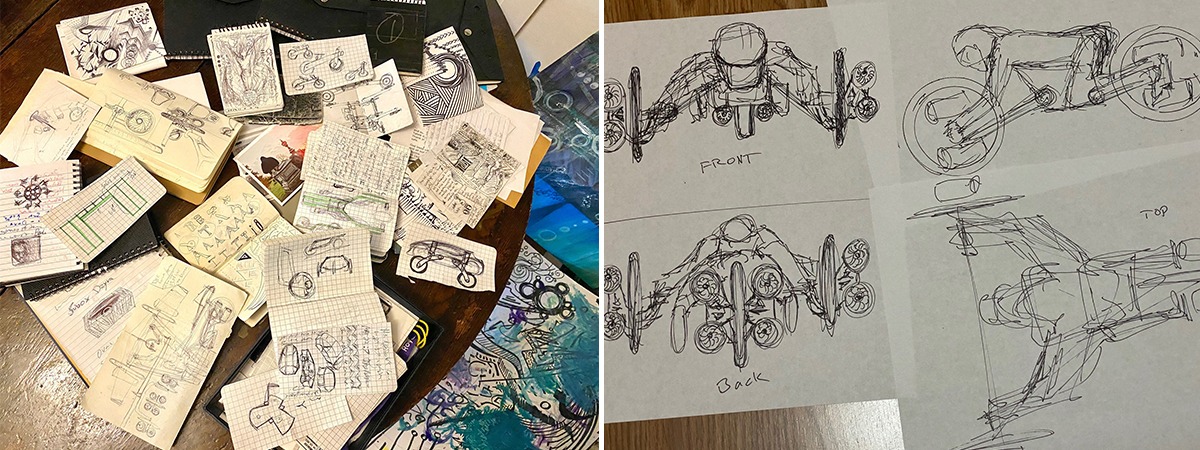
Thanks again to everyone who participated! Keep an eye out for us here on our blog and on our social channels because next year we may do another design competition and we’d love for you to join the fun.
Welcome to our second post highlighting entries from our recent Quaranvent Design Competition. From fitness solutions to artful decor, you’ll find creativity in these innovative submissions.
Kyle Hawkins, a recent graduate, entered his Hollow Beam Longboard. His goal was to make a skateboard that would “actually put up with carrying around with you after arriving at your destination area (town/city riding) as well as take to your favorite high speed hill without a second thought.” Check out this great video on his project.
https://youtube.com/watch?v=xN4iDW6YHuw%3Fenablejsapi%3D1%26origin%3Dhttps%253A%252F%252Fwww.rockwestcomposites.com
Perry Benson submitted a design for a foldable, compact, lightweight gym made from our tubes and CARBONNect. It was designed to help people maintain physical (and emotional) fitness during quarantine while their gyms are not accessible. The structure supports elastic bands at multiple points enabling a wide variety of exercises. Check this out!
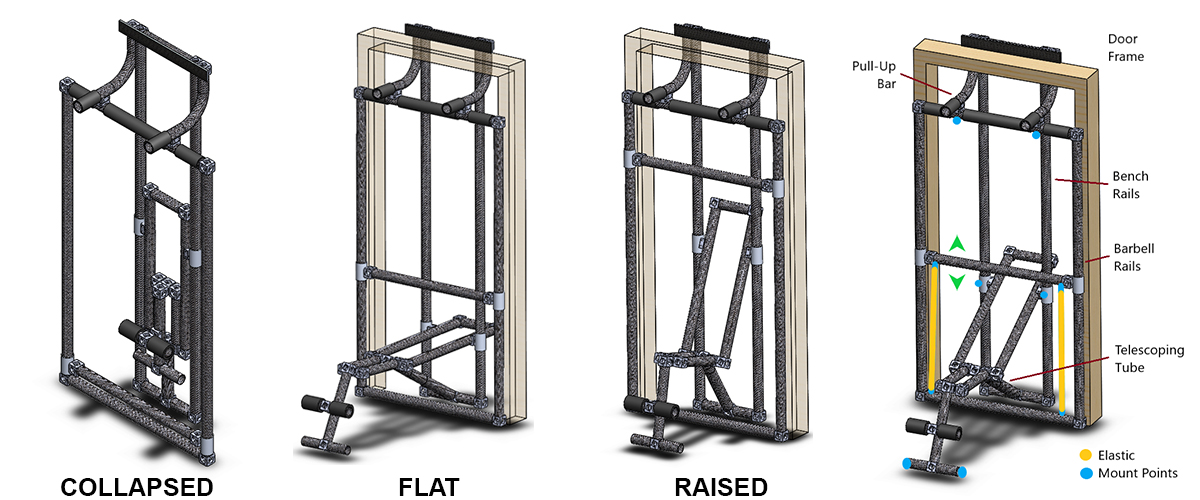
Allan Abbott, MD, points out that no one has yet invented a practical human-powered device or vehicle that helps able-bodied humans run better. But he’s working on it! He’s designed running poles with the intent of using the strength of the arms to help reduce the impact of running and walking on the lower body. Dr. Abbott actively uses his design for his own runs and has gone through several iterations. If it’s hard to envision how these work, he has a video that shows a version of the running sticks in action.
https://youtube.com/watch?v=_5JUfgB-RWM%3Fenablejsapi%3D1%26origin%3Dhttps%253A%252F%252Fwww.rockwestcomposites.com
In one of our artistic entries, Daniel Segraves envisioned an algorithmically produced semi-custom series of shelving structures for the high-end contemporary collectible design market. Inspired by organic forms, this design makes good use of carbon fiber to support shelf loads. Here’s the Antipatharia Shelf System.
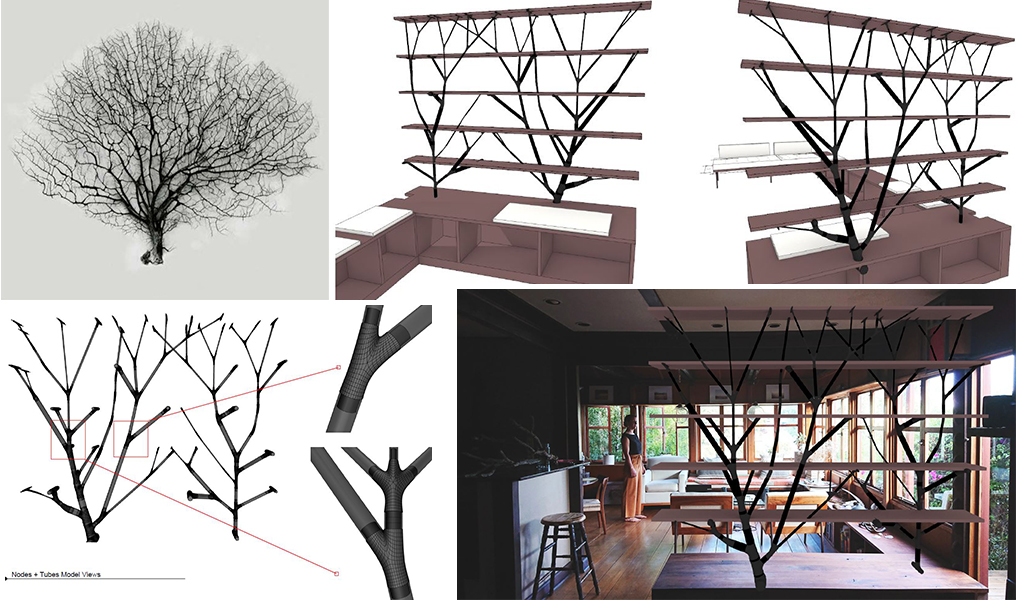
Thanks again to everyone who entered our contest! We’ll have more highlights soon.
We are highlighting several entries from our recent Quaranvent Design Competition. We had a lot of fun reviewing people’s submissions and wanted to share their ideas with all of you. We’ll start with a few and share more later.
Chris Starnes made a bunk bed for his dogs! He used carbon fiber tubing to help construct this space-saving solution. He did not have enough room in the back of his truck for all of his dogs, and he needed something strong enough to hold their weight without collapsing. This bunk bed will fit any crew cab ford. With a lot of dog lovers and owners on our team, this was a very popular idea!

David Johnson, who uses a wheelchair, submitted his CojoTruk, which is a trike wheelchair designed specifically for outdoor use. Considering a host of logistical challenges he faces when going out for errands, he is trying to fill a personal need because there are currently no available market solutions. Learn more about his innovative personal project in this short video.
https://youtube.com/watch?v=VmyM7xYZL4Y%3Fenablejsapi%3D1%26origin%3Dhttps%253A%252F%252Fwww.rockwestcomposites.com
Kyle Gavin of We Fly VR introduced us to his patent-pending BlackBird 360, an omnidirectional camera platform for shooting aerial AR/VR/MR video, without shooting the platform itself – no editing necessary. We were excited to see our product in the submission. Take a look at this beauty.
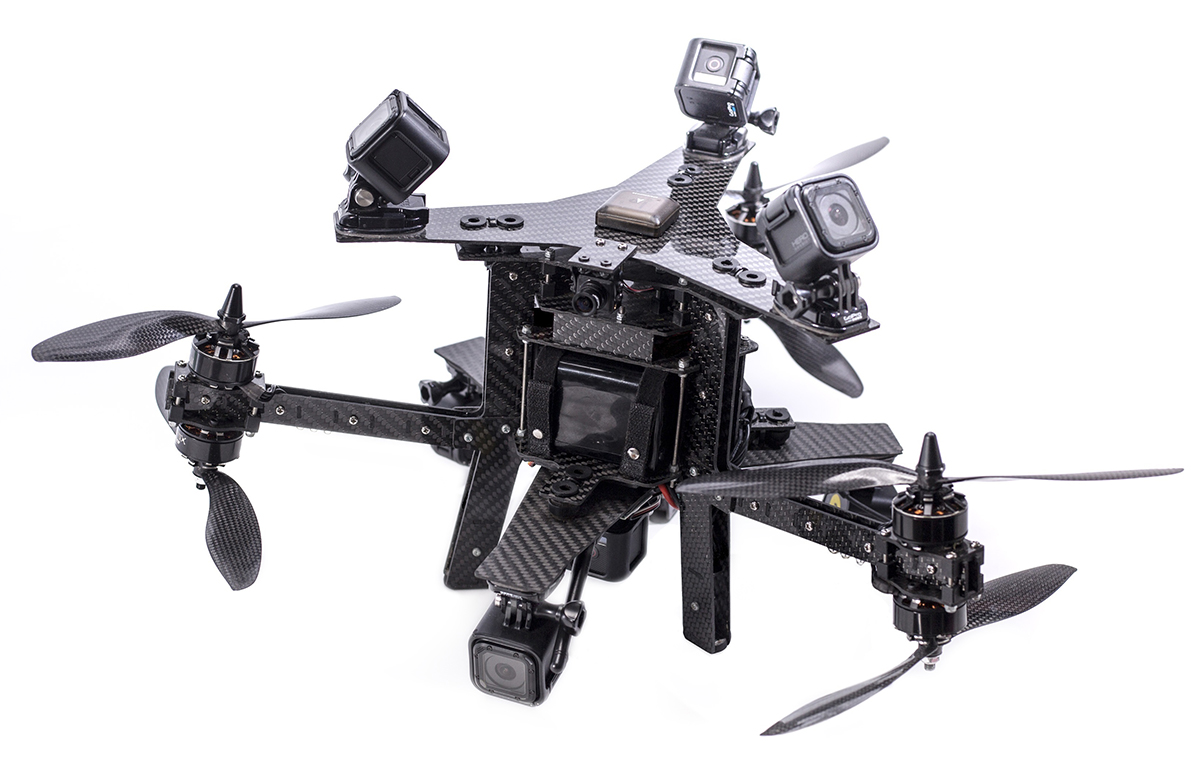
Lt Col Jeffrey Naff entered his and his son’s handcycle design. They are designing and building this handcycle for Jeffrey’s wife Denise, a paraplegic who utilizes a wheelchair for mobility. The goal is to have a lightweight, high-end handcycle to have family cycling outings for fun and exercise. Here’s the CAD model. We look forward to seeing the completed project!
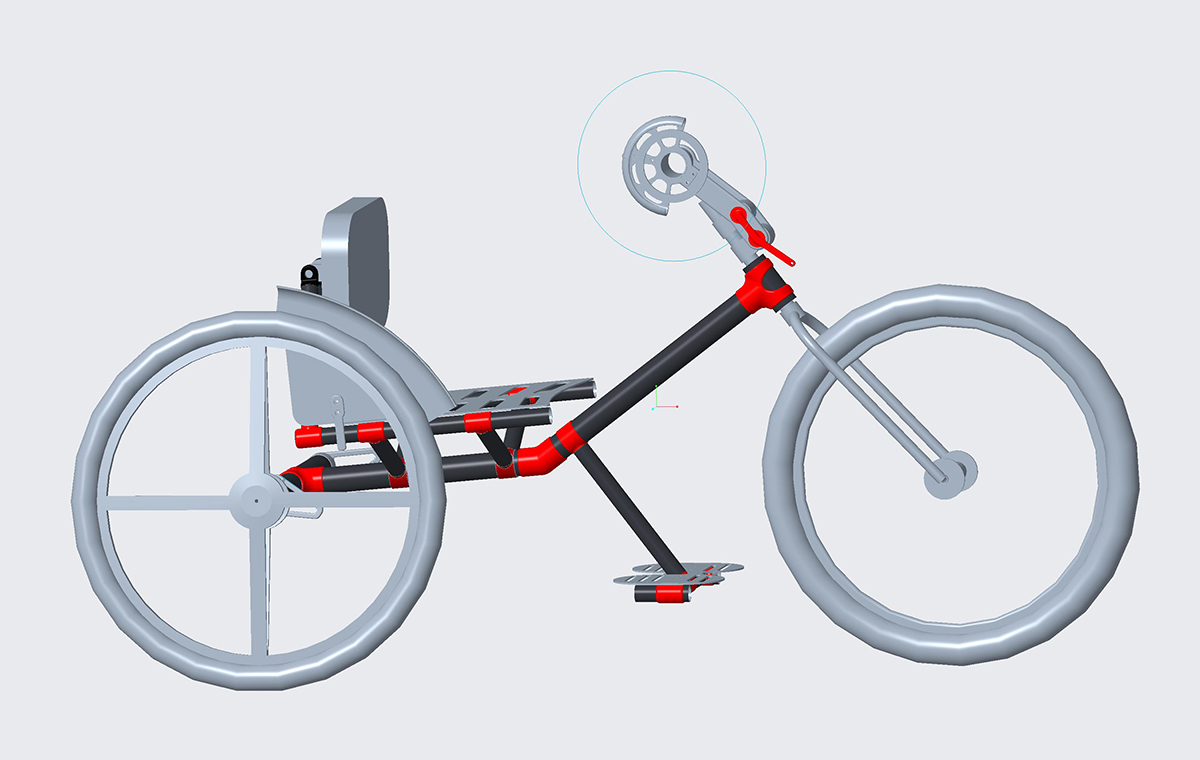
These are just a couple of highlights of the wonderful and innovative ideas from our community. We’ll bring you more submissions soon. Thanks to everyone who entered our contest!
Dear Valued Customers,
With the changing situation of the COVID-19 pandemic, we want to inform you of the current status of Rock West business operations. Rock West Composites is part of the Critical Infrastructure Sectors, and we continue to operate our facilities in San Diego and Salt Lake City in full capacity.
At the beginning of April, we suspended operations in our Tijuana, Baja California facility due to a national health emergency declared in Mexico, which was extended until the end of May. The facility is now back at full operational capacity. While recreational travel is currently prohibited in either direction across the US and Mexico border as a joint initiative to prevent the spread of COVID-19, business travel is allowed and our operations are not impacted.
We continue to monitor the situation daily and make decisions based on the guidelines set forth by the U.S. Government, the Centers for Disease Control and Prevention (CDC), and the World Health Organization. We recognize our role in protecting our nation’s infrastructure and protecting employee safety, and we take this role seriously. We are doing everything possible to honor commitments to our customers by completing programs on time.
Thank you for your attention and your business. Please stay safe!
There are numerous ways to fabricate composite parts utilizing carbon fiber and glass fiber. One method is the manual layup, a method that sometimes relies on vacuum bagging to help the materials consolidate more uniformly. Vacuum bagging is a procedure that is utilized both commercially and by DIY fabricators.
We have written this post to introduce our readers to the concept of vacuum bagging, what it does, and how it works. Note that we sell vacuum bagging kits and supplies. In fact, we have everything you need to complete manual layups at home or in your professional shop.
The Point of Vacuum Bagging
It is not absolutely necessary to vacuum bag composite parts. So why do people do it? If you were to create a carbon fiber body panel for a classic car, you would start by creating a mold, or a tool as we call it in the industry. You would then lay carbon fiber fabric on the mold and cover the fabric with epoxy resin. Then another layer of fabric and more resin, continuing until you built it up to the thickness you wanted.
At that point, you could let it cure as-is. But if you wanted to guarantee that air is removed and the resin is equally distributed throughout the fabric, you would turn to vacuum bagging. The process of vacuum bagging is intended to more fully consolidate resin and fabric so that the finished product offers consistent strength and integrity throughout.
Vacuum bagging sucks all of the air out of the layup ensuring you create a part with minimal defects. The end result is a more consistent layup that cures into a more uniform part. That is really the long and short of it.
How It’s Done
The nice thing about vacuum bagging is its simplicity. It is as easy to do as it is to understand. Once a layup is complete, you apply a peel ply layer to help remove the finished part later on, followed by a breather layer that allows air to escape while simultaneously absorbing any excess resin. The entire layup is then covered with the vacuum bag and sealed around the edges.
Next, you connect hose and pump. Turning on the pump sucks out all of the air and creates a bit of pressure. From this point, you can leave the layup alone and let it cure in place or put it in an oven. In some commercial settings, the vacuum bag layup is put in an autoclave for curing.
Pros and Cons of Vacuum Bagging
Vacuum bagging offers benefits that make it the right choice for some projects. First and foremost is consistency. You just get more consistent parts this way. Another benefit is quality. If you need a high-quality part for which structural integrity is non-negotiable, combining prepregs and vacuum bagging is the way to go. The fact that the vacuum bag creates pressure on its own eliminates the need for autoclave curing in some cases (but not all) saving money by saving energy.
In terms of the cons, let us talk about pressure again. Autoclave curing relies on a combination of temperature and pressure to consolidate resin and fabric. High performance parts are typically cured in an autoclave. Thus, the advantages of vacuum bagging are diminished. With vacuum bagging, you also generate waste.
Vacuum bagging is a great practice for DIY fabricators. There are plenty of online videos explaining exactly how it’s done. In the meantime, feel free to contact us to order your vacuum bagging supplies. Don’t forget to ask about our fabrics and resin too.
Rock West Composites has its products on tonight’s 2-hour season premier of BattleBots, June 23, 8/7c on ABC!
We sponsored George Matus Jr. and his team by donating all the composite materials including CARBONNect components that make up the airframe of his competition Drone. We look forward to seeing the results!













 copy.jpg)



 copy.jpg)












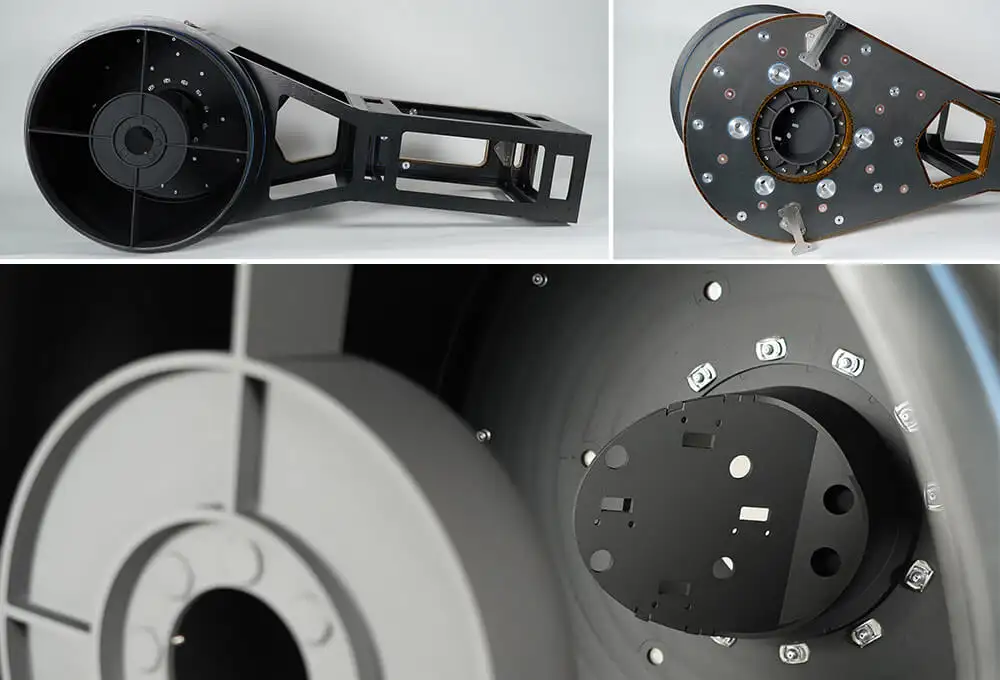











 copy2.jpg)


























































